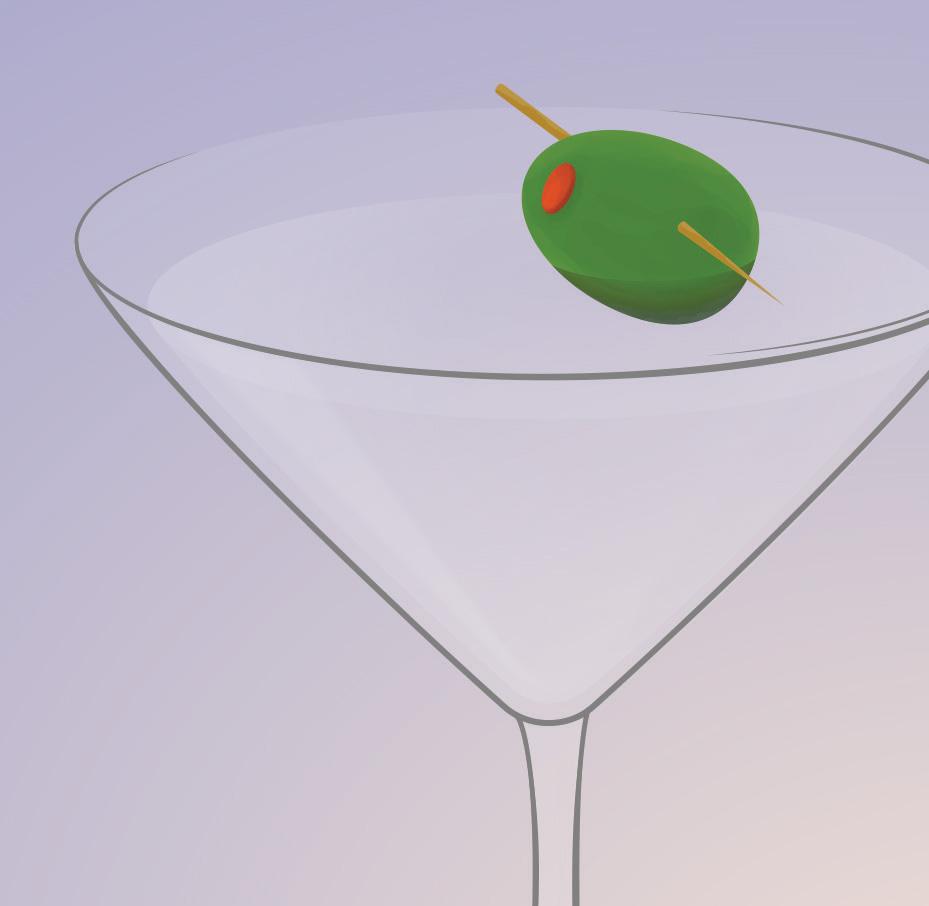LEPRECHAUN THE CULT HORROR TURNS 30
COCAINE BEAR
SCREAM VI SECRETS OF THE FRANCHISE UNMASKED ZELDA

LEPRECHAUN THE CULT HORROR TURNS 30
COCAINE BEAR
SCREAM VI SECRETS OF THE FRANCHISE UNMASKED ZELDA
DC'S UNDERDOG SUPERHERO GROWS UP — EXCLUSIVE BEHIND THE SCENES ACCESS
PLUS Meet Ant-Man and the Wasp's Cassie Lang
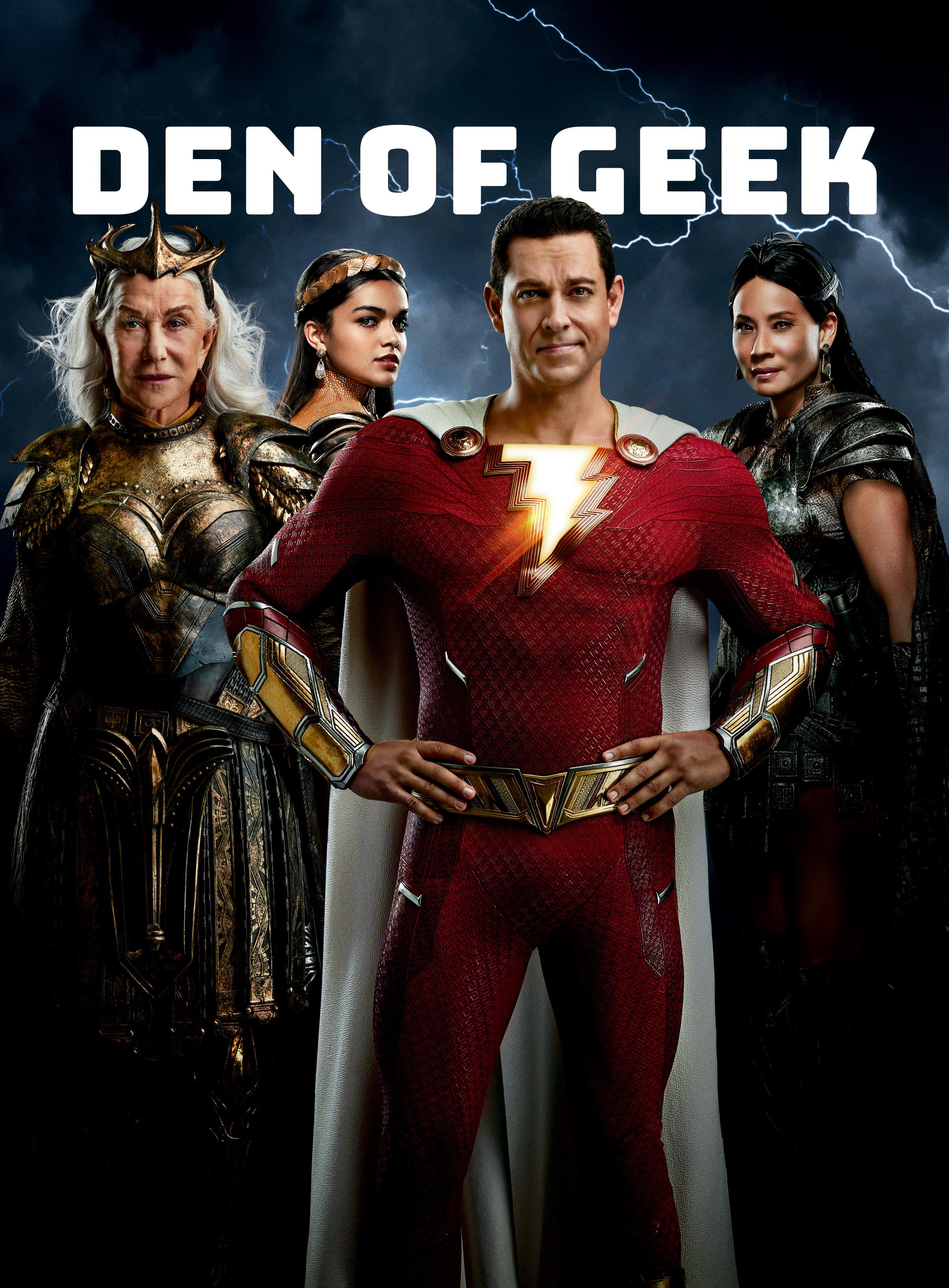
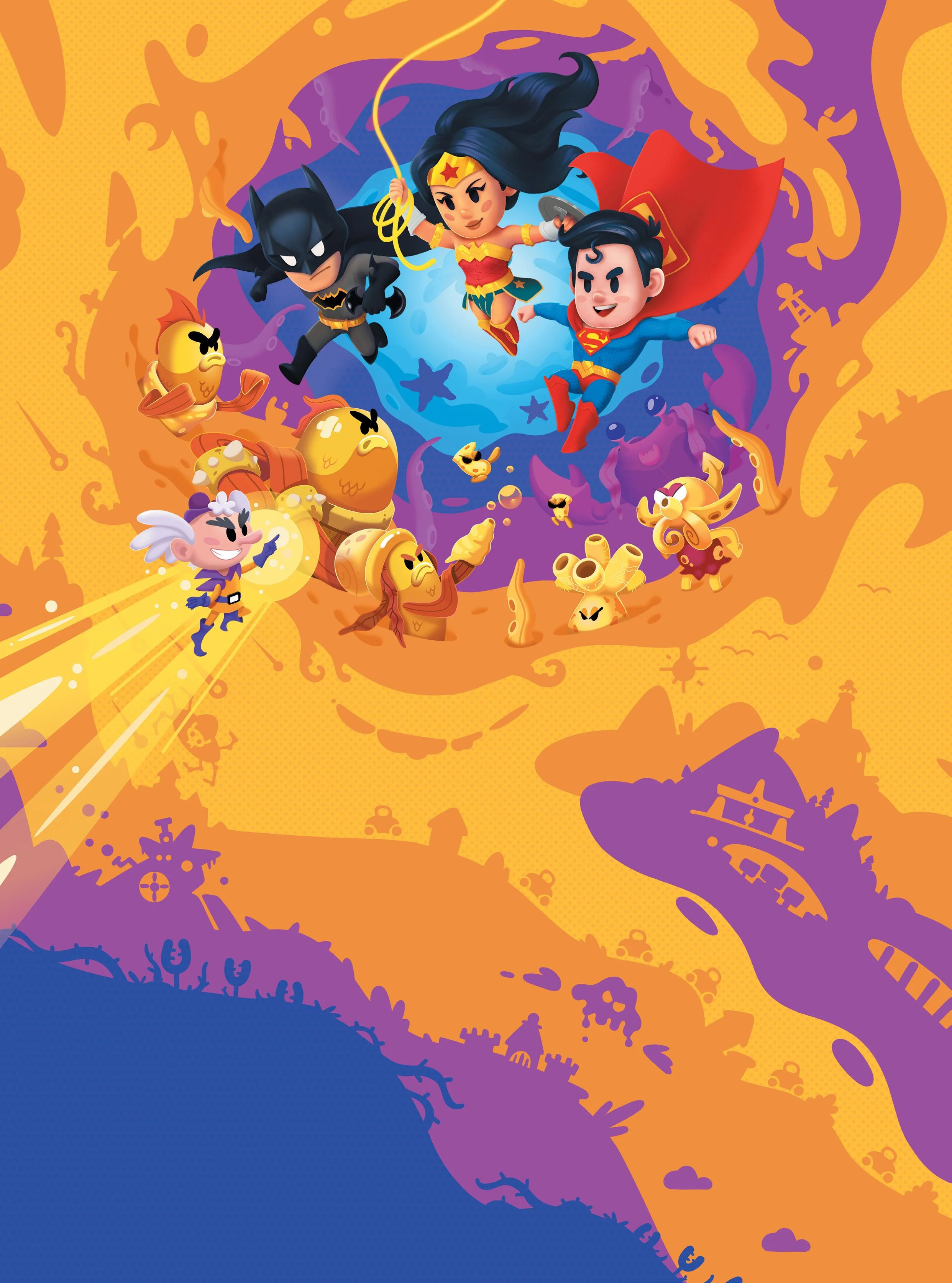



DC’s Justice League: Cosmic Chaos releases March 10, 2023 on PlayStation 4, PlayStation 5, Nintendo Switch, Xbox One, Xbox X|S, and Steam.
DC’S JUSTICE LEAGUE: COSMIC CHAOS PUBLISHED BY OUTRIGHT GAMES
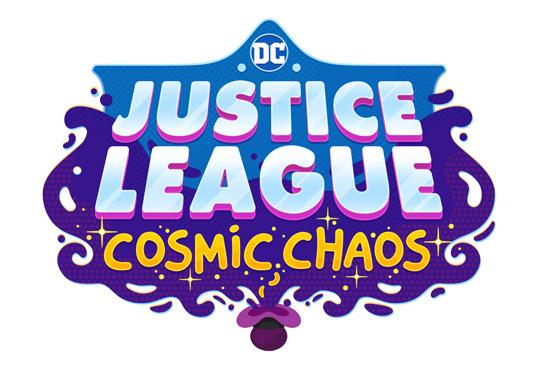
is bringing the world’s greatest Super Heroes to the next generation of gamers, offering up a family-friendly, open-world adventure with all the action and colorful characters you love from the DC universe. Whether you play solo or with a partner via couch co-op, the game is rich with challenges, custom outfits, unlockable abilities, and more.
Plus, you’ll interact with the most popular super heroes from the Justice League. Play as Batman, Superman, and Wonder Woman to save Happy Harbor from Mr. Mxyzptlk, Starro the Conqueror, Bizarro, Clayface, and other classic Super-Villains! Here’s a breakdown of who’s who:

Bringing Amazonian super strength, speed, and fighting spirit into the battle against Mr. Mxyzptlk’s army, Wonder Woman is every Super-Villain’s worst nightmare. With her Lasso of Truth, she can get around Happy Harbor with ease and bring baddies to their knees.

Equipped with an arsenal of high-tech gadgets, Batman uses his unmatched agility and fighting skills to glide around Happy Harbor and dispatch Mr. Mxyzptlk’s goons. Equipped with plenty of cool gadgets and sharp detective skills, Batman’s always got an edge over his enemies and proves to be one of the JL’s most formidable members.
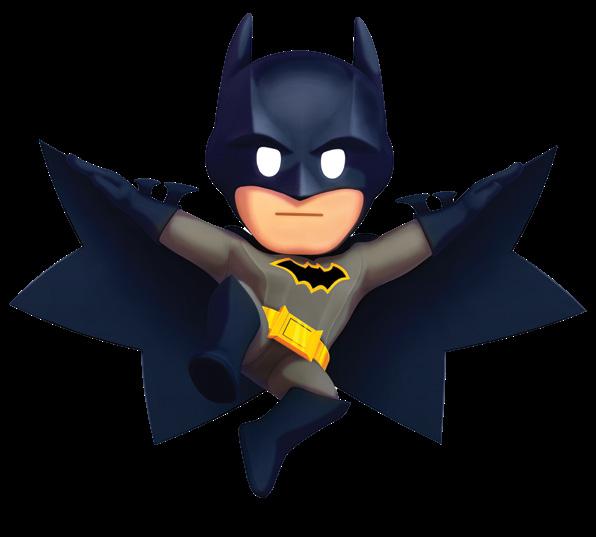
Serving up justice from the skies, Superman is a leading member of the Justice League for a reason. Capable of incredible feats of strength and bestowed with physics-defying superpowers to take down bad guys, the Kryptonian from Kansas is one of the most powerful superheroes in not just Happy Harbor but the DC universe.
With the power to create Hard-light constructs limited only by his imagination, Green Lantern brings a distinctly cosmic skillset to the fray. His Green Lantern Ring also grants him a bevy of additional powers like flight and semi-invincibility, making him a handful for any foe, including Mr. Mxyzptlk.
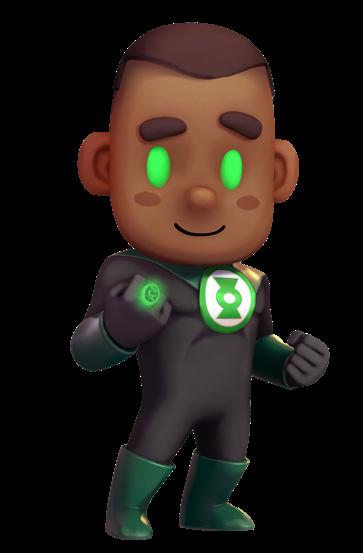
Outfitted with advanced weapon systems and enhanced physical attributes, Cyborg rivals even Batman in the tech department. What’s more, he’s one of the smartest people on the planet and uses his superior intellect to get the Justice League out of the trickiest of situations.

What’s better than having the fastest man alive on your side? With super speed and reflexes at his disposal, The Flash is an invaluable member of the Justice League, specializing in giving his teammates the upper hand in battle with impeccably timed assists that catch the opposition off guard.

The King of Atlantis makes for a ferocious teammate on the field, as he always has an army of aquatic allies in tow. Armed with telepathy that allows him to command sea life around him, Aquaman’s mission is to help those in need, whether by land or by sea.

SHAZAM! The magic word which turns young Billy Batson into Zachary Levi’s grown up superhero. We think it’s a great fit for our first magazine of the year and we’re excited to showcase a film filled with hope, the importance of found family and, yes, magic. We were lucky enough to have the chance to chat with director David F. Sandberg, star Zachary Levi, and the trio of amazing women who play the movie’s antagonists; Helen Mirren, Lucy Liu, and Rachel Zegler. Elsewhere in the issue we have features on Cocaine Bear, Scream VI, Leprechaun at 30, the mysteries of Zelda and an interview with Kathryn Newton who’s about to join the MCU. We hope you enjoy the issue!

ISSUE 9 | SPRING 2023
Elizabeth Banks directs this bonkers horror about a bear that accidentally gets off his face on coke and goes on a brutal rampage. We chat with Banks about comedy and chaos. PG. 14
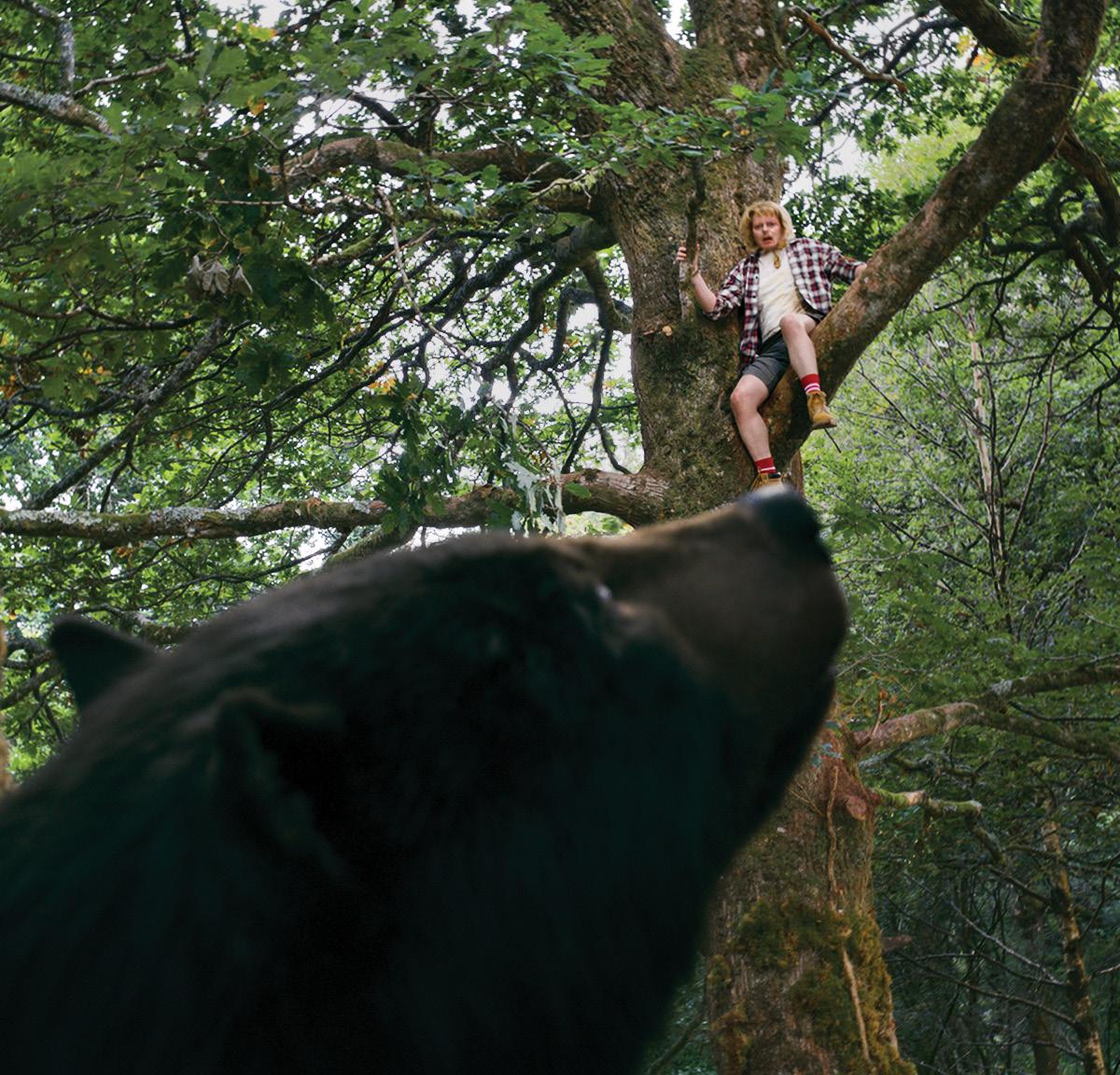
We delve into some of the weirdest unsolved mysteries, fan theories, and urban legends surrounding the iconic video game. PG. 48
We delve into the weird world of non-human dating sims, where players can match with monsters, weaponry, or even a creature with a phone for a head. PG. 20

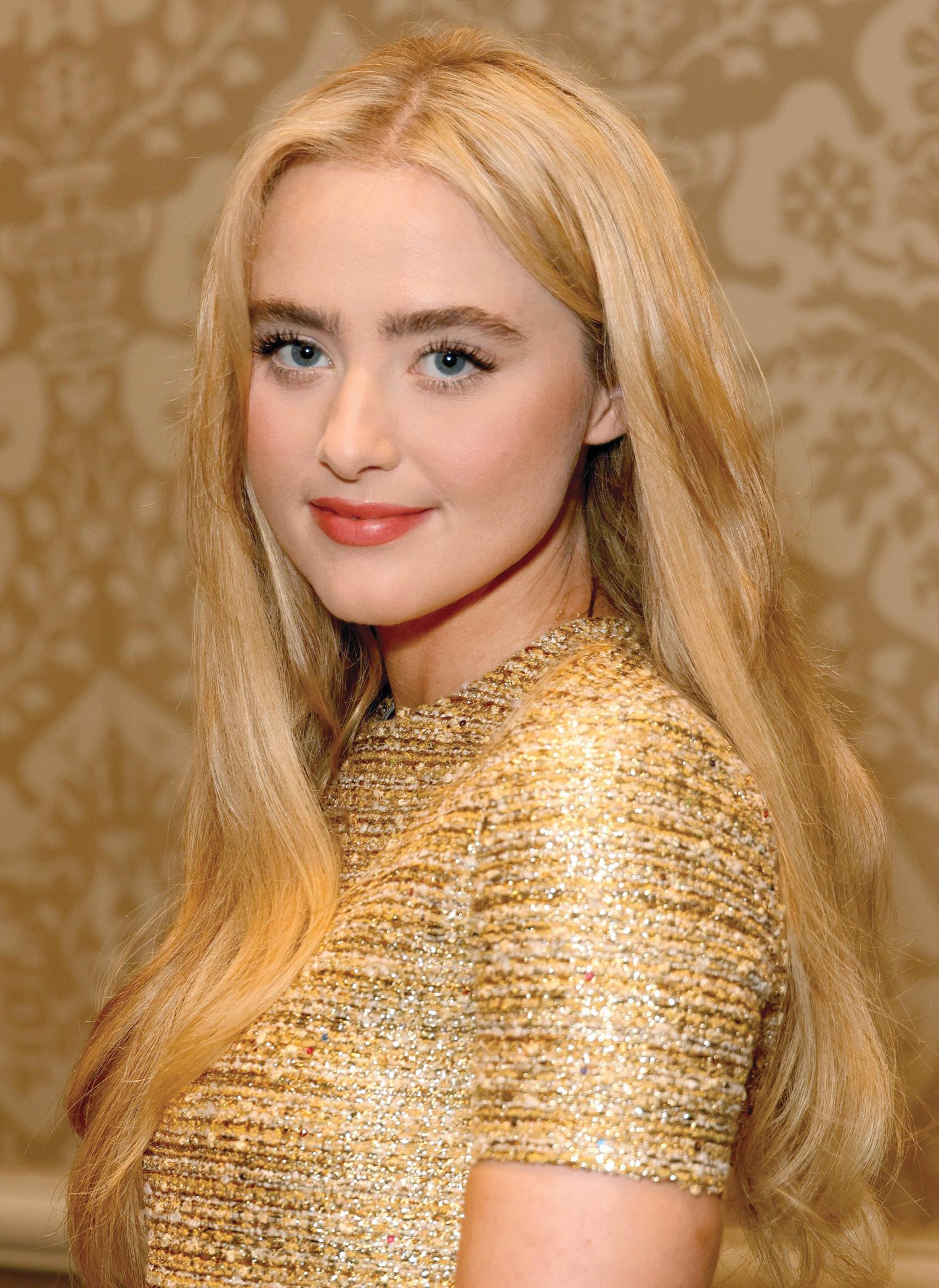
At just 25, she’s worked with a-list actors and directors and now she’s joining the MCU in Ant-Man and the Wasp: Quantumania. We catch up with the new Cassie Lang. PG. 44


The cult horror movie starring Warwick Davis and Jennifer Aniston turns 30 this year. We catch up with writer/director Mark Jones about his St. Patrick’s Day classic, working with Aniston, and what he thought of the many, many sequels... PG. 62
Fancy getting into some new things, but unsure where to begin? Den of Geek’s experts recommend gateway movies and TV shows. PG. 22
As the historic Milestone Media celebrates its 30th anniversary, it’s opening doors for a new generation of talent. PG. 52
KIM
She’s the first woman to write a James Bond novel, and guess what? James Bond isn’t even in it. We talk to Sherwood about her vision for 007. PG. 26
There’s a new Ghostface killer in town and this time all rules are out the window! As the Scream franchise goes to NYC we speak with the directors and star Melissa Barrera. PG. 56

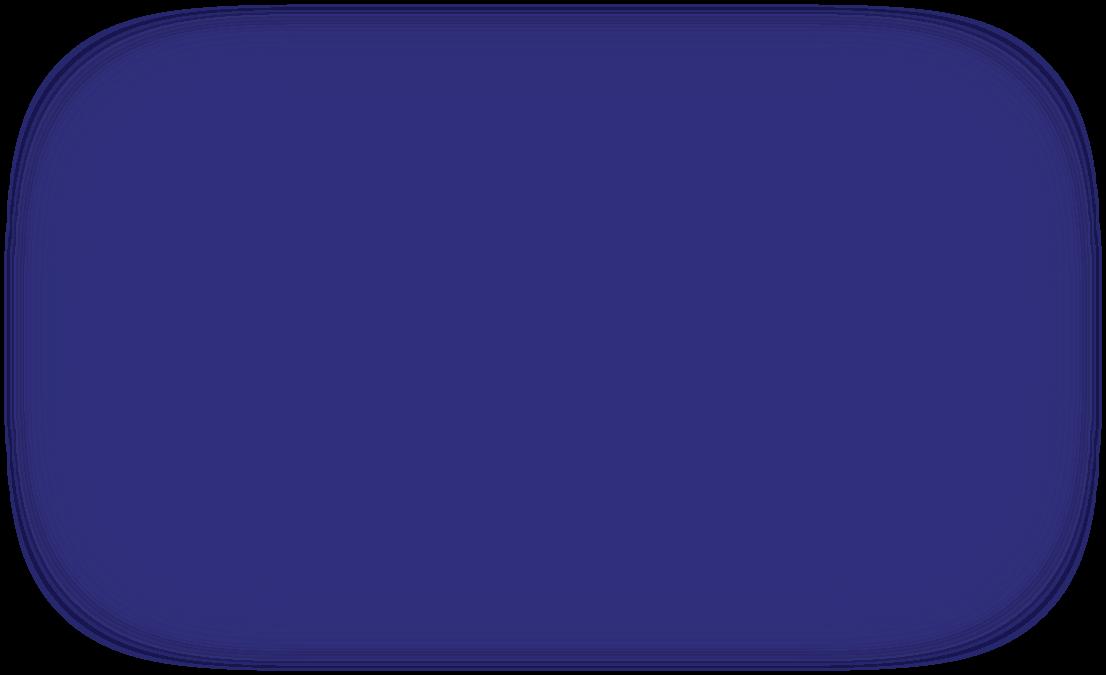












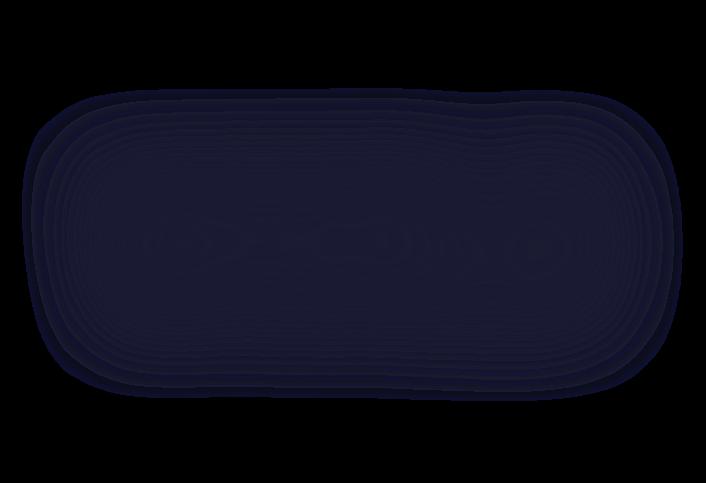



MAGAZINE
Mike Cecchini
EDITOR-IN-CHIEF
Rosie Fletcher
PRINT EDITOR
Chris Longo DIRECTOR OF EDITORIAL & PARTNERSHIPS
ART
Lucy Quintanilla CREATIVE DIRECTOR
Jessica Koynock ART DIRECTOR
Chloe Lewis ILLUSTRATOR
PRODUCTION
Kyle Christine Darnell
PRODUCTION MANAGER
COPY
Richard Jordan SUB EDITOR
Sarah Litt COPY EDITOR
Nick Harley ASSISTANT PRINT EDITOR
ADVERTISING
Matthew Sullivan-Pond
PUBLISHER
Colby Olson
ADVERTISING ACCOUNT MANAGER
Vanessa Chouest
ADVERTISING ACCOUNT EXECUTIVE
Mike Cecchini
EDITOR-IN-CHIEF
John Saavedra MANAGING EDITOR Rosie Fletcher UK EDITOR
EDITORIAL
Alec Bojalad TV EDITOR • Matthew Byrd GAMES EDITOR
David Crow SENIOR FILM EDITOR
Kirsten Howard NEWS AND FEATURES EDITOR
Louisa Mellor UK TV EDITOR
ART

Lucy Quintanilla CREATIVE DIRECTOR
Jessica Koynock ART DIRECTOR • Chloe Lewis JUNIOR DESIGNER
AUDIENCE DEV & SOCIAL MEDIA
Elizabeth Donoghue HEAD OF AUDIENCE DEVELOPMENT
Maznah Shehzad AUDIENCE DEVELOPMENT STRATEGIST
Lee Parham SOCIAL MEDIA COORDINATOR
PHOTO & VIDEO PRODUCTION
Nick Morgulis SENIOR VIDEO PRODUCER
Andrew Halley HEAD OF VIDEO PRODUCTION
HEADQUARTERS
589 8th Ave, 20th Floor New York, NY 10018
Jennifer Bartner-Indeck CEO AND GROUP PUBLISHER
Bob Bartner CHAIRMAN
Pete Indeck CHIEF FINANCIAL OFFICER
PARTNERSHIPS
Chris Longo DIRECTOR OF PARTNERSHIPS
ADVERTISING
Mark Wright
MANAGING DIRECTOR
Matthew Sullivan-Pond
PUBLISHER
Colby Olson
ADVERTISING ACCOUNT MANAGER
Vanessa Chouest
ADVERTISING ACCOUNT EXECUTIVE
advertising@denofgeek.com
ADVERTISING EMAIL
THIS SPRING WILL MARK 10 years that I’ve been here at Den of Geek, and I apologize for this column finding me in an uncharacteristically reflective mood. It’s been a remarkable decade, one that I definitely never would have considered possible at a previous stage of my life. In that time, I’ve watched this company grow from a relatively small online audience to one that reaches millions of people every single month, that encompasses video, podcasts, and the very print product you hold in your hands right now. I went from essentially having to sneak into my first press rooms and

interviews at places like San Diego Comic-Con to watching our team host some of the biggest stars in the world in our own interview suites while tens of thousands of attendees get a magazine that continues to get bigger and better with every issue placed directly in their hands while they line up for panels, signings, screenings, and all the other things we love about fan gatherings. It’s been a real honor to keep you folks company during those moments.
I’m not even sure what my ambitions were when I took this job other than to provide the most fun
and insightful coverage we possibly could to our audience. At the time, a print magazine alone felt unrealistic, an idea whose time had passed (how wrong I was!), and we certainly didn’t have the resources to produce podcasts, shows, and live events, nor did I ever truly think that we’d be able to routinely get those insights directly from some of the biggest names in movies, TV, games, comics, and more. I didn’t anticipate that this mag would be available in hundreds of comic shops, places I considered virtually sacred when I was a kid growing up, and sci-fi, horror, and superheroes
were about the least cool things you could possibly be into (how things have changed!). Clearly, I was thinking too small at the time because I didn’t reckon with the fact that I’d be surrounded by some of the smartest, most creative, and most hardworking people in the business.



Perhaps I also didn’t fully anticipate just how hungry readers were for a website and magazine like this one. And in the course of the last decade, we’ve learned quite a bit about what it takes to grow (and hopefully keep) a passionate audience that loves everything we cover even more than we do. Hopefully, we’ve made you feel like part of our conversation during that time, too. Thanks to my team and to each and every one of you for letting me do all this cool stuff over the last ten years.


 Mike Cecchini, Editor-in-Chief
Mike Cecchini, Editor-in-Chief


The magazine you’re holding in your hands right now is available at these fine comic book stores nationwide.
ALASKA (1) The Comics Shop
CALIFORNIA (2) House of Cards and Comics, (3) Isotope Comics, (4)
Crush Comics, (5) Fantasy Books and Games, (6) Comics Conspiracy, (7) Illusive Comics and Games, (8)
SpaceCat, (9) Atlantis Fantasyworld, (10) Comicopolis, (11) House of Secrets, (12) Hi De Ho Comics & Books, (13)
Galaxy of Comics, (14) Golden Apple Comics, (15) Mega City One, (16)
Secret Headquarters, (17) The Comic
Bug, (18) Now or Never Comics
COLORADO (19) Time Warp Comics and Games, (20) Mile High Comics, (21) Vision Comics & Oddities, (22) Escape
Velocity Comics & Graphic Novels
HAWAII (23) Westside Comics and Games
IDAHO (24) EntertainMART, (25)
Captain Comics, (26) The Collector’s Outpost
MONTANA (27) Muse Comics & Games
NEVADA (28) Frank-N-Freds Comics & Cards, (29) Celestial Comics
OREGON (30) Cosmic Monkey, (31)
Excalibur Comics
UTAH (32) Black Cat Comics, (33) The Nerd Store
WASHINGTON (34) Arcane Comics & More, (35) Phoenix Comics & Games
WYOMING (36) Olympus Games and Comics
ARIZONA (37) Cab Comics, (38) Drawn to Comics, (39) Samurai Comics, (40) Ash Avenue Comics & Books
NEW MEXICO (41) Astro-Zombies
OKLAHOMA (42) Bibliotech Books & Comics, (43) New World Comics
TEXAS (44) Titan Comics, (45) Austin Books & Comics, (46) Tribe Comics and Games, (47) King’s Cache, (48) Dragon’s Lair Comics and Fantasy,
(49) Juniors Comic & Cards, (50)
Rogues Gallery Comics & Games, (51) Bedrock City Comic Company (Houston, Westheimer Rd), (52) Bedrock City Comic Company (Houston, FM 1960), (53) Bedrock City Comic Company (Houston, Washington Ave), (54) Bedrock City Comic Company (Missouri City), (55) Bedrock City Comic Company (Katy), (56) Bedrock City Comic Company (Webster)

ILLINOIS (57) Perkolator, (58)
Maximum Distractions, (59) Challengers Comics + Conversation, (60) Graham Crackers Comics Loop
INDIANA (61) Heroes and Havens Comics and Games, (62) Downtown Comics, (63) Comic Carnival, (64) Comic Book University
IOWA (65) Alter Ego Comics, (66) Mayhem Collectibles Inc AMES
KANSAS (67) Elite Comics
MICHIGAN (68) Summit Comics & Games, (69) Green Brain Comics
MINNESOTA (70) Rogue Robot Games & Comics, (71) Hot Comics and Collectibles
MISSOURI (72) The Wizard’s Wagon
NEBRASKA (73) Dragon’s Lair Comics & Games (N 90th St), (74) Dragon’s Lair Comics & Games (S 153rd St)
NORTH DAKOTA (75) Grand Cities
Games
OHIO (76) Carol & John’s Comic Shop, (77) Superscript Comics and Games, (78) Rockin’ Rooster Comics & Games, (79) The Laughing Ogre
SOUTH DAKOTA (80) Rainbow
Comics, Cards & Collectibles
WISCONSIN (81) Capital City Comics, (82) Lost World of Wonders
ALABAMA (83) Bob’s Comics, (84)
Deep Comics & Games
ARKANSAS (85) Collector’s Paradise
FLORIDA (86) Yancy Street Comics, (87) Descent Into Gaming, (88) Dark Side, (89) Korka Comics
GEORGIA (90) Level Up Games, (91) Oxford Comics, (92) Titan Games
KENTUCKY (93) Comic Book
World, (94) Heroes Realm
LOUISIANA (95) Excalibur Comics, (96) More Fun Comics
MISSISSIPPI (97) Jak’s
NORTH CAROLINA (98) Capitol Comics II, (99) Fanboy Comics
SOUTH CAROLINA (100) Heroes & Dragons
TENNESSEE (101) Rick’s Comic City
VIRGINIA (102) Victory Comics
WEST VIRGINIA (103) Comic Paradise Plus NORTHEAST CONNECTICUT (104) Alternate Universe (New Haven), (105) Alternate Universe (Milford), (106)
DJ’s Cards and Comics,
(107) Matt’s Sportscards & Comics, (108) Sarge’s Comics
DELAWARE (109) Bethany Beach
Comics and Gaming
MAINE (110) Eagle Hill Stamps & Coins, (111) Newbury Comics
MARYLAND (112) Cards Comics & Collectibles, (113) Alliance
MASSACHUSETTS (114) That’s
Entertainment, (115) Comicazi, (116) New England Comics
NEW HAMPSHIRE (117) Jetpack
Comics & Games
NEW JERSEY (118) Dewey’s, (119) Zapp
Comics (Wayne)
NEW YORK (120) Collector’s Inn, (121) Fordham Road Comics, (122) Midtown
Comics Downtown, (123) Midtown
Comics Times Square, (124) Midtown
Comics Astoria (Queens), (125) Midtown
Comics Grand Central, (126) Forbidden
Planet, (127) JHU Comics and Books
(Staten Island), (128) JHU Comics and Books (3rd Ave), (129) Silver Age Comics
PENNSYLVANIA (130) Phantom of the Attic Comics, (131) Comix ConnectionYork, (132) Ontario Street Comics, (133) Wade’s Comic Madness
RHODE ISLAND (134) The Time
Capsule

VERMONT (135) Earth Prime Comics
WASHINGTON DC (136) Fantom
Comics
CANADA (132) Golden Age
Collectables (Vancouver), (133) Silver Snail (Toronto), (134) Capitaine Québec les Livres Comiques (Montreal)
PUERTO RICO (135) Metro Comics
to find new books, an excuse to jump out of one’s comfort zone and read something challenging. But they’re also a great way to build community, something equally true today as it was more than 20 years ago when comic store Comicazi in Somerville, Massachusetts, first started its comic book club. “It was really just an excuse to get together,” says Jill Carter of Comicazi. “We were trying to build up different events for the shop [and] that seemed to make sense.”
Carter, who uses they/them pronouns, says that getting outside of their comfort zone is a key factor in the club’s longevity. So Comicazi orders widely. “I think most of the
[book club] members are really just trying to read widely and see everything that the industry has to offer,” they tell us. “There’s always Marvel and DC and indie and manga and all ages. It really runs the gamut.”

Recent book club selections have been all over the place: Sarah Gailey and Pius Bak’s soapy class horror comic, Eat the Rich and Alice Oseman’s YA webcomic Heartstopper have been two recent features, alongside classic superhero fare like the Geoff Johns/ Rags Morales Black Adam story “Black Reign” from JSA, or John Byrne’s Sensational She-Hulk Ultimate Collection. “People put in suggestions for what to read,” says Carter. “I’ll build a list based on new releases and
best sellers just to mix things up.”
This is, of course, good for the shop too. The shop displays the last 10 book club picks prominently, and sales definitely follow. Book club books “end up being some of our best sellers all year,” says Carter.
And it’s not just Comicazi patrons who are pleasantly surprised by book club picks. Carter told us that they’re typically into indie books and don’t vibe as much with superhero stuff (“I’m a pretty big Jeff Lemire fan, and anytime there’s a new book out, that will inevitably end up on the list,” they say). But last February’s book club pick was an outlier for them in that it was both a superhero book and it was a behemoth: the Milestone
Compendium, a new collection of the first year or so of stories from each of the original Milestone Comics titles, the comic company founded in the ’90s by a group of spectacular Black creators like Dwayne McDuffie, Denys Cowan, Derek Dingle, and MD Bright, among others. “We did two sections out of the Milestone Compendium,” Carter tells us. “I personally really always liked Xombi [a book about a Korean-American scientist who invents a nanotechnology virus and gets infected with it by his assistant to save his life, becoming immortal in


the process]. We did that as part of a Black history month push, reading Hardware and Static for all of February, and that was really great.”






Of course, keeping things fresh after 20 years of running the club means getting creative with procurement, too. Comicazi has to go deeper than just ordering what their distributor has in stock from DC and Marvel. “We buy a lot of collections, so we’re pulling used books out of the bargain bins and bringing in our own copies and trading them around,” Carter says. “It’s not always about just selling a lot of books.”
In Comicazi’s case, it’s about reading them with friends.
Comicazi’s comic book club meets on the first and third Tuesdays of every month. Upcoming books include James Patrick and Rem Broo’s Kaiju Score and Jeff Lemire and Dustin Nguyen’s Little Monsters. Comicazi is located at 407 Highland Avenue, Somerville, MA 02144. If your shop does something fun and unexpected to get more people to read comics, tweet us @denofgeekus.
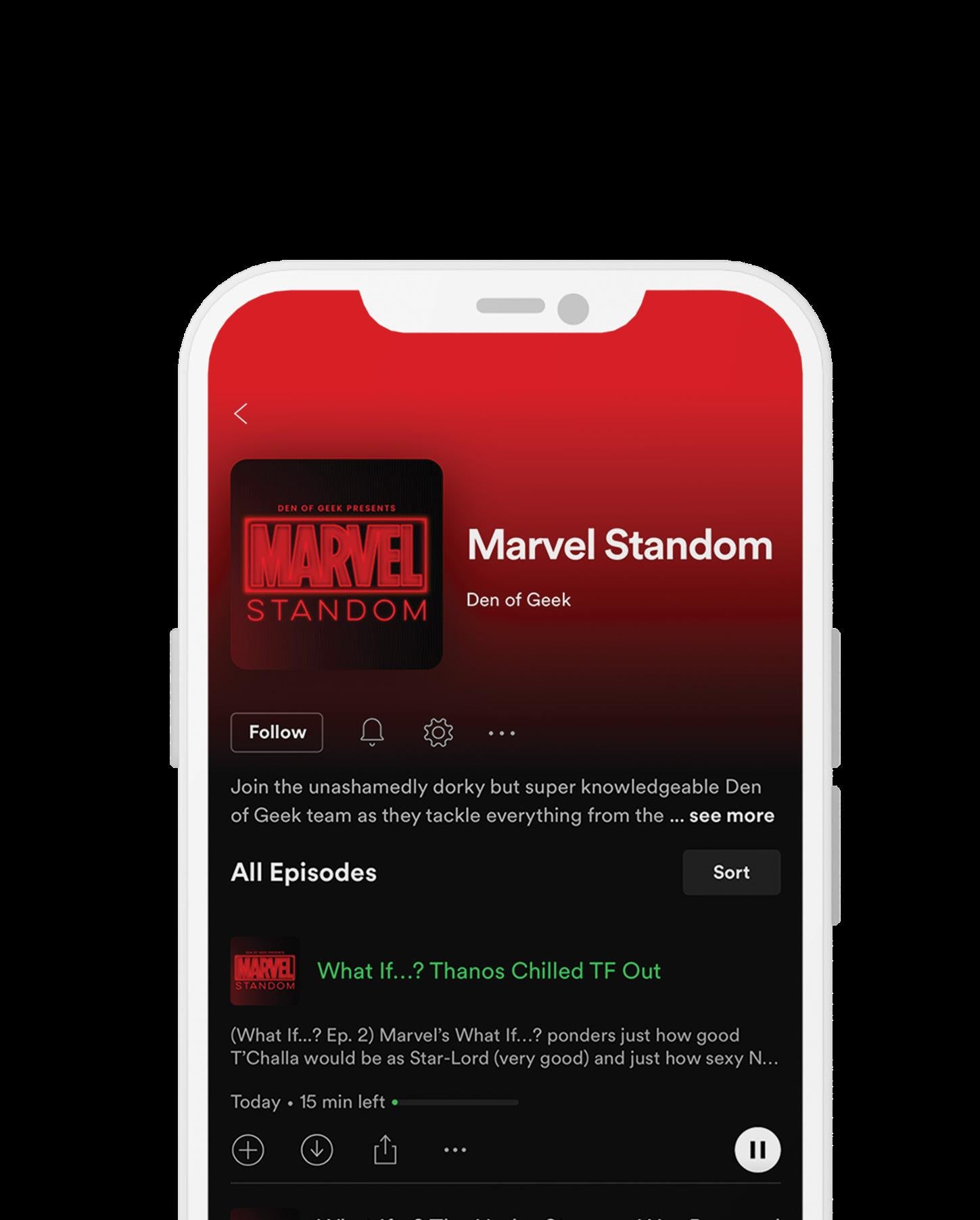
”MEMBERS ARE TRYING TO READ WIDELY. THERE’S ALWAYS MARVEL AND DC AND INDIE AND MANGA. IT REALLY RUNS THE GAMUT.
MOST COMPREHENSIVE, INTERACTIVE, GAMMAIRRADIATED TOUR OF THE MCU AND BEYOND ANYWHERE!
ON SEPTEMBER 11, 1985, a former police officer-turned-drug smuggler named Andrew Thornton II dropped himself and around 75 pounds of cocaine out of his private plane over the Chattahoochee National Forest in northern Georgia. But something went wrong: Thornton—who might have hit his head on the way out the door—was found dead in a driveway in Knoxville, Tennessee, his parachute not opening in time, while his plane crashed around 60 miles away.
As for the cocaine, Thornton’s crew on the ground never retrieved it, but two months later, a hunter in the Chattahoochee Forest found a dead 175-pound black bear surrounded by opened packages of what appeared to be Thornton’s coke. Its stomach was full of white powder. The bear had apparently ingested the cocaine (exactly how much is not clear) and died of an overdose.
Nearly 40 years later, this bizarre story forms the basis of Cocaine Bear, a new movie directed by Elizabeth Banks and starring Keri Russell, Alden Ehrenreich, Margo Martindale, O’Shea Jackson Jr., and the late Ray Liotta. Written by Jimmy Warden and produced by Phil Lord and Chris Miller (The Lego Movie), the horror comedy asks a simple question: what if the bear lived, jacked up on that coke, and washed it down with the blood of the befuddled humans unlucky enough to cross its path? “I got sent a great script,” says Banks when we ask how she followed up the musical comedy Pitch Perfect 2 and the action-adventure Charlie’s Angels with a grisly horror farce for her third turn behind the camera. “I read Jimmy’s script, which was sent to me by my agent. I think they were potentially developing a take with somebody
else, but Lord and Miller were about to start their new deal at Universal, where my company is also based. So after I read this, I sent a missive out like, ‘I’d be interested in producing this together if you guys want to
making people laugh and entertaining people… so I made a comedy inside a musical, I made a comedy inside a little action movie, and I made a comedy inside of a horror film.”
join forces.’”
Saying that she loved the “fresh and bold” script, Banks also jokingly argues that Cocaine Bear isn’t too far afield from her previous directorial efforts. “Honestly, I think I kind of make the same movie every time,” she says with a laugh, “just in a different genre. I love comedy. I really like
After Thornton’s disastrous jump and the bear’s unfortunate meal, the movie takes its wild turn into pure fiction, following a mom (Russell) searching for her troublemaking daughter in the woods; a cranky park ranger (Martindale) who doesn’t want to be disturbed; a good but overmatched cop (Isiah Whitlock Jr.) on the hunt for the coke; and the hapless drug crew (Ehrenreich and Jackson) dispatched by their boss (Liotta) to recover their valuable stash. All soon find themselves at the mercy of an extremely coked-up predator on a rampage, who dispatches a lot of cast members in surprisingly violent and gruesome ways.
“When it’s something fun and comedic, my line’s far away,” says Banks about where she draws the line

IF YOU ENCOUNTER A BEAR THAT YOU DON’T KNOW IS HIGH ON COCAINE YOU’RE NOT GOING TO WIN.”Fortunately for Keri Russell this is not actually a real bear but a CGI creation.
regarding on-screen gore, which is quite plentiful in Cocaine Bear. “I enjoy a lot of things. I like over-thetop, operatic gore. For me, the references are more Quentin Tarantino than Saw… Watching somebody’s arm break slowly is not interesting to me. I like it done fast and furiously with a lot of blood, basically. Somebody pulling their fingernail off, that kills me.”

She’s got plenty of opportunities to knock people off in Cocaine Bear, with legs ripped off, digestive systems excavated, heads blown apart, and skin shredded to bits. Even though a number of them are killed, Banks notes that she enjoys making movies with large casts of characters and multiple points of view—“I’ve actually,

as a director, not attempted a singlePOV movie”—and cites films like The Breakfast Club and even Star Wars as the kind of great ensemble films she enjoys.

“I like giving the audience a lot of surrogates in the movie,” she explains about her own predilection for stories with multiple protagonists. “I want people to be able to feel like, ‘Oh, I can see myself in this movie, or I relate to that character in that movie.’ That’s part of the agreement that I’m trying to make as a director with the audience: ‘Come along for this really fun ride. You will laugh, and there’ll be some character, hopefully, that you think is interesting or representative of you.’” The film is also graced by the presence of the late Ray Liotta, with Cocaine Bear one of a handful of projects that the iconic Goodfellas star completed before his untimely death in May 2022 (the movie is dedicated to him).
“Ray and I had worked together before in a little movie called The Details a long time ago, and he impressed me so much on that set, so I called him up,” Banks recalls. “He was just so game. That’s the thing I want people to take away from this. He knew what the movie was; he wasn’t coming into it like, ‘I’m gonna be in super serious mode,’ you know, he came to have fun.” She adds, “He gave very generously the entire time. He never blinked at anything I asked him to do. He was like, ‘Okay, let’s go, Banks.’ He just did it. I’m so grateful for the positive vibe that he brought every day.”
One actor who does not appear in the movie is Banks herself, who showed up in both Pitch Perfect 2 and Charlie’s Angels but elected to stay on the other side of the camera this time.
“First of all, I’ve never done anything where the lead character is not in the movie,” she says with another chuckle, referring to the title beast itself, a wholly CG creation.
“This was a pretty big endeavor and a great learning curve for me on the CGI stuff. I worked with Weta Digital on Cokie—as we affectionately referred to our bear—for two years
and 17 days or something like that, beginning to end. There was so much going on, and it was Covid; everyone was in masks, and I just felt like there was enough for me to do in this film.”
Banks adds that one of her main jobs was finding the right tone for the movie—which stirs together all those less-than-savvy (and often unsavory) characters, a string of outrageous jokes, and some genuinely macabre moments—which was inherent in the material itself.
“Look, I read a script called Cocaine Bear,” she explains, laughing again.
“I was like, ‘Let’s not take it too seriously’… the idea here was really, let’s imagine what could have happened if real people came across a bear in the wild that they didn’t know was on cocaine. I love making underdog stories. And I feel like no matter who you are, no matter what gun you’re carrying, if you encounter a bear that you don’t know is high on cocaine, you’re an underdog. You’re not going to win.”


1 Born in 1989 in Yorkshire, England to Norwegian and Nigerian parents, Hannah JohnKamen plays Ava Starr, aka Ghost, in the MCU. Her character in Ant-Man and the Wasp developed the power to turn intangible in a quantum accident that also killed both of her parents.
2 She’s best known on TV for playing space bounty hunter Dutch on Canadian sci-fi series Killjoys, and appeared in two installments of Black Mirror. She played singer Selma Telse in “Fifteen Million Credits,” and journalist Sonja in gaming horror episode “Play Test.”
3 Speaking of Sonja, John-Kamen vacated the lead role in troubled sword-andsorcery reboot Red Sonja last year. Up next, she’s starring as a pregnant woman who’s plagued by “Redcaps” (nasty folkloric goblins) in horror film Unwelcome.
4 A trained singer and dancer, she has no regrets about her lead role in 2012’s Spice Girls jukebox musical Viva Forever!, one of London theater’s biggest flops. The show was panned and closed after just six months, but left the actor with plenty of fond memories.
5 After roles in film versions of Tomb Raider and Resident Evil, as well as Spielberg’s Ready Player One, JohnKamen may have carved out a niche in the gaming world, but she’s more a fan of classic Hollywood fare such as Some Like It Hot.
WE INTERRUPT THIS PROGRAM TO BRING YOU:
March 22-26, 2023 Downtown Boise, ID
FEATURING LIVE ACTS FROM:
UNKNOWN MORTAL ORCHESTRA + LEIKELI47
MARGO PRICE + SURF CURSE + CAUTIOUS CLAY
ANI DIFRANCO + GODSPEED YOU! BLACK EMPEROR
TOM THE MAIL MAN + LADY WRAY + KAE TEMPEST
BLU DETIGER (DJ SET) + HERMANOS GUTIÉRREZ
BUILT TO SPILL + BOOGIE T + DRUGDEALER
PINBACK + MIKE + ILLUMINATI HOTTIES
PETEY + CELISSE + HUNDREDS MORE!!
DIVE INTO ALL THINGS
TECH AT HACKFORT . READ MORE ON PAGE 25 .
MODERN DATING IS SCARY, surprising, and oftentimes a bit bizarre. No style of game captures these sentiments better than the aptly named dating simulators, called as such because they let players form romantic relationships with fascinating digital characters (each with their own set personalities, responses, and preferences) in a similar way they would real-life suitors. These games emphasize text-heavy decision-making and dialogue options in favor of action but affecting the outcome of which potential partner you end up with can be just as engaging. What happens if human-on-human relationships are suddenly done away with in favor of wooing supernatural candidates? This new breed of dating simulator aims to prove that no species, object, or monster is off-limits.
One indie dating simulator wilder than most is Dialtown, a lo-fi genre spin that takes phone dating one step further by letting you date, well, phones with bodies. “I’d always enjoyed object head characters in fiction,” says the game’s sole creator, DirectDogman, referring to Dialtown’s visuals. “[It] allows for an abnormally diverse range of character portraits, far more than would’ve been feasible with hi-fidelity graphics. I’m no Picasso, but I’m really adequate at shambling literal garbage together into the shape of a datable person. I don’t care if he’s made of garbage. Now, kiss.”

Dialtown follows the typical dating
simulator formula of presenting players with a set number of romanceable characters, having them make choices, and selecting different dialogue options to affect the final outcome of the story. In addition to each phone’s specific personality traits, however, it’s the Blackadderesque humor and the overall surrealist vibe that offers up a zanier dating experience than is traditional. “Dating, and hell, life itself, can be
surreal sometimes,” posits Dogman. “Finding unique ways to convey that surrealness can be a great way to set your story apart from [those] that don’t tap into the mundane eccentricities of life.”
Another dating sim unafraid to combine life’s mundanity with an oddball take on love’s pursuit is the aptly-titled Boyfriend Dungeon
Combining the romancing with the gameplay of a conventional hack-andslasher set within tightly contained areas (dungeons), it’s a refreshing take that quite literally lets you date your
weapons in between all the hack-andslashing. If you’ve ever looked at a dagger and thought, “phwoar,” then this is the game for you.
Boyfriend Dungeon caused quite a stir upon release for its portrayal of Eric, a stalker-ish character that ignores your advances in a potential rumination on how dangerous dating can be. “I wasn’t trying to be edgy or tackle any particular issue,” reveals director Tanya X. Short. “I just wanted a well-written antagonist that felt like a real person with real flaws. He also does cartoon villainy (kidnapping, mad doctoring, the usual), but part of a real antagonist is that they make you feel uncomfortable.” Regardless of how far removed from reality a dating sim is, certain players can’t help but be
DATING SIMS GO FROM EARNEST, CORNY, AND INTENSE TO SILLY, META, HORNY AND/OR OUTRIGHT KITSCH.” —JULIÁN QUIJANO
deeply invested. “Some people say defeating him was cathartic, which is a huge compliment.”
For as far-fetched as dating your weapons appears, Short believes there must be familiar elements players can recognize. “Initially, I had planned to make the whole thing happen in a traditional fantasy world, partially to escape the various traumas associated with modern dating,” she says. “But we actually had to move it to be more contemporary for the dating and writing to still be relatable, and it felt like normal date places (cafes, restaurants, gyms) was the best way.”
Relatability aside, a fear of the fantastical hasn’t prevented Beautiful Glitch’s Monster Prom series from growing. Initially set at a high school
where Frankenstein’s monster and werewolf-style figures are all romanceable, 2018’s first game saw you try to find a date before the titular event, but the concept has since expanded—first to a camp in Monster Prom 2 and then a road trip in Monster Prom 3. By constantly changing the setting, the studio has kept this world of fantastical creatures fresh.
“I think non-mundane settings help a lot in elevating a genre that’s all about mundane interactions,” reveals creative director Julián Quijano. Monster Prom differs from other dating sims, though, in that saying the wrong thing may lead down the right path, depending on the suitor’s persona. “I have never been a fan of the main mechanic of dating sims being ‘choose
the obvious answer that the character wants to hear.’ It feels uninteresting to me,” he says. “Avoiding the classic approach (as seen in most dating sims) was quite intentional.”
As formulaic as dating sims can be, leaning into the supernatural is often a clever way to break the rules, make the most of dating’s mundanity, and be a little bit cheeky. One thing is for certain: quirky genre entries aren’t going away. Not while developers and players alike are having this much fun. “Dating sims go from absolutely earnest, corny, and intense to silly, meta, horny, and/or outright kitsch,” sums up Quijano. “This is a genre that many times takes itself not seriously at all. I think it’s part of the appeal.”
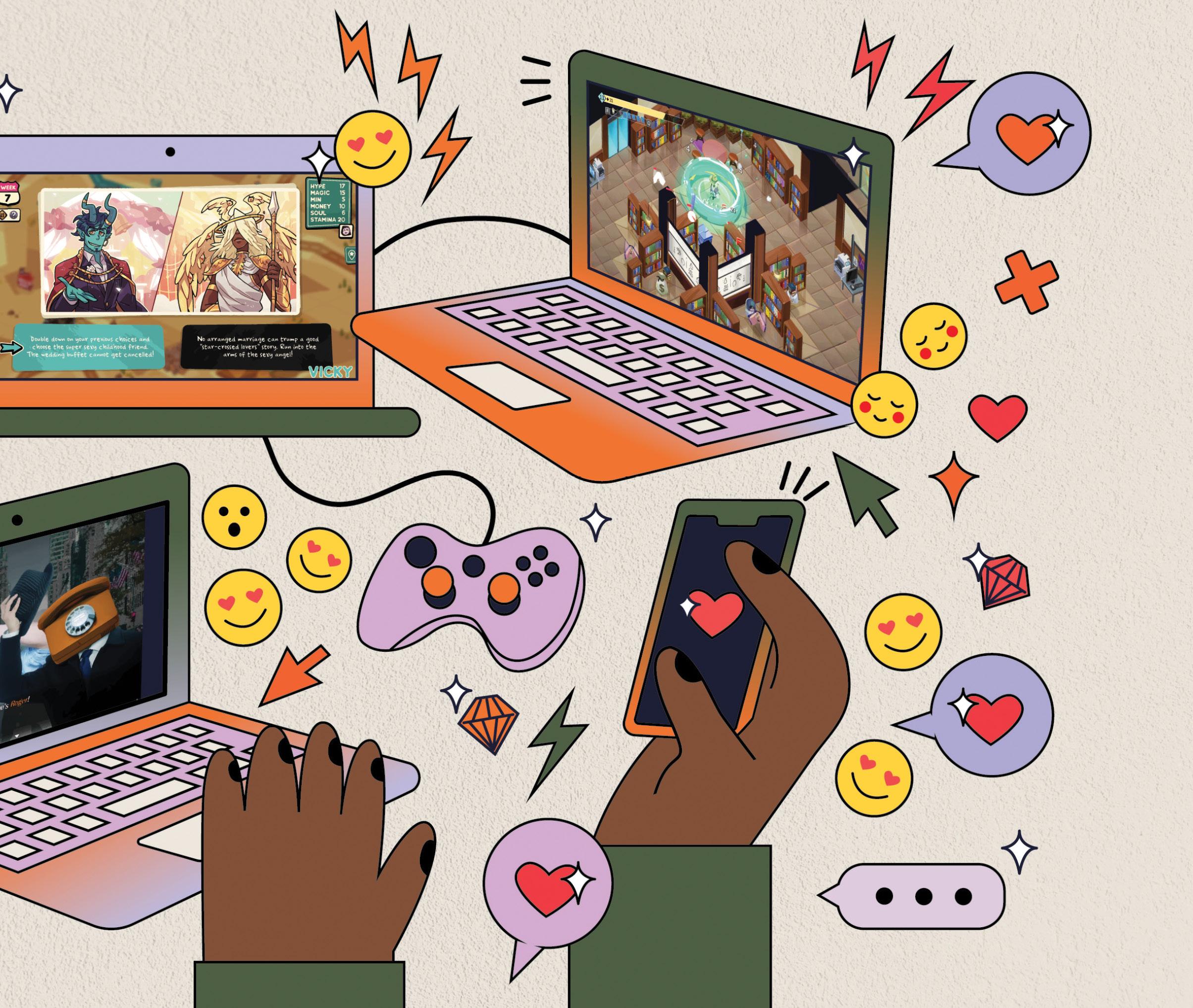
Tim Burton’s Wednesday is Netflix’s biggest hit since Stranger Things. For those of you who loved the show and are interested in getting into comics, we’ve got five great books to start with.
(2014)
Wednesday bears a striking resemblance to Netflix’s other tale of teenage occultism, Chilling Adventures of Sabrina, which was based on this terrific comic written by Roberto Aguirre-Sacasa and drawn by Robert Hack. The comic, though, was much creepier and followed Sabrina and her family as they dealt with all manner of spooky happenings.
GOTHAM ACADEMY (2014)
Far less chilling was Gotham Academy, a book about a group of Gotham classmates navigating typical school-aged angst with a healthy dose of Arkham Asylum-based ghosts, Gotham City mystery, and the occasional guest star from the Batman family of characters. Becky Cloonan, Brendan Fletcher, and Karl Kerschl’s all-ages comic is beloved for a reason.
Excellence, by Brandon Thomas and Khary Randolph, is the story of a secret world of Black wizards,
replete with family drama and high action. Randolph’s art is stunning: he and Thomas build an amazing, deep world with a rich history that you’ll disappear into immediately.
Sophie Escabasse’s all-ages original graphic novel is about Effie, a young girl who discovers her magical family lineage and tries to find her way in the normal world with extraordinary powers. It’s charming, smart, and breezy, an easy recommendation for any reader with a proclivity for fantasy.
THE DREAMING: WAKING HOURS (2021)
G. Willow Wilson and Nick Robles take concepts originally laid down in Neil Gaiman’s The Sandman and spin them out in a rich, gorgeous tale of self-discovery and vivid imagination. The book centers on a nightmare trapped in the world of the living and the woman who dreamed of him swapping places in The Dreaming.
— JIM DANDENEAUFans of the fantasy mayhem of House of the Dragon will find a lot to love in these anime, all of which are great gateway series.
Vinland Saga digs into Viking warfare with impressive action sequences that present barbarism and brutality with unflinching historical accuracy. It grounds itself in reality and doesn’t feature the fantasy elements of House of the Dragon, but Thorfinn’s blood pact and quest for revenge on his father’s killer would make the Targaryens proud.
Ranking of Kings is a delightful exploration of legacy and destiny that valiantly highlights how heroes can come from unexpected places. Bojji is heir to a mighty kingdom but is born deaf and exiled because he doesn’t fit the kingly standard. Bojji experiences a beautiful coming-of-age story that juggles action, fantasy, drama, and comedy to craft an approachable modern anime classic.
Kentaro Miura’s Berserk is the signature dark fantasy anime series and a must-watch for House of the Dragon lovers. A stoic lone wolf named Guts brandishes a comically huge sword known as the Dragon Slayer as he vanquishes demons and takes on God Hand’s apostles. The brutal action in Berserk is second to none, but it’s also full of heavy betrayals and human drama.
The Vision of Escaflowne is a standout fantasy anime from the 1990s that’s for all of the House of the Dragon fans that wish Westeros also had giant robots. Hitomi gets whisked away to the world of Gaea and becomes a pivotal player in a grueling war. Escaflowne also fits into the mecha mold, and the titular robot transforms into both a dragon and a giant knight.
Tower of God follows Bam, a humble hero who bravely pursues
the seemingly impossible task of scaling a massive tower, wherein each level carries progressive dangers. Tower of God creates a rich world of eclectic creatures, but it’s the intricate strategies, betrayals, and brutal bids for power where these two fantasy-action series overlap the most.
— DANIEL KURLANDWhen you’re ready to take the next step beyond Bruce Lee films, here are five pivotal Hong Kong martial arts films worthy of your attention.
The 36th Chamber of Shaolin is the granddaddy of “wax on, wax off”, with Gordon Liu working his way through a wild array of obscure training methods inside the birthplace of Kung Fu, the Shaolin Temple. Considered one
of the greatest Kung Fu films ever made, this inspired the title of Wu-Tang Clan’s first album.
FIVE DEADLY VENOMS (1978)
Five warriors secretly train in special Kung Fu skills while masked, so they don’t know each other’s identity. When one betrays them, it’s a hunt to solve who is who. Packed with intrigue, Chang Cheh directs this Shaw Brothers’ Studios classic that launched the Venoms Crew, five martial actors who dominated the genre for years.

Jet Li teams with director Tsui Hark for a visionary epic loosely based on real-life folk hero Wong Fei Hung. Credited with revitalizing the Kung Fu genre in the ’90s, Li’s acrobatic fighting style blends with Tsui’s extravagant cinematic sensibilities for a grandiose game changer of martial arts films. Like each of these recommendations, it spearheaded a franchise of sequels.
The threequel of Jackie Chan’s modern-day cop actioners marks the return of Michelle Yeoh after she quit filmmaking in 1987. Yeoh plays a strict mainland Chinese cop opposite Chan’s risky hero. The finale fight atop a moving train is packed with truly death-defying stunts for both actors, including Yeoh’s legendary motorcycle jump onto a moving train.
When Donnie Yen stepped into the role of Bruce Lee’s real-life Wing Chun Kung Fu master, his dignified portrayal of the grandmaster catapulted him to the title of Hong Kong’s leading star. Another film that reinvigorated the genre, Yen’s Kung Fu shines under the choreographic direction of Jackie Chan’s elder Kung Fu brother, Sammo Hung.
— GENE CHING
There are top double-acts on British crime TV, from Sherlock to Broadchurch, and first-rate ensemble shows, from Line of Duty to Life on Mars. But if you want to get hooked on one killer lead performance, here’s where to go.
Forget Hagrid. Robbie Coltrane will forever be forensic psychologist Fitz from Jimmy McGovern’s acclaimed 1990s drama. Big man, big brain, big demons, and some of the most brutal crimes and unflinching social commentary TV has ever witnessed. There’s no coziness here. Added bonus: spotting early performances from British acting royalty.
There’s nothing like a dame. As DCI Jane Tennison, Dame Helen Mirren is unforgettable. Tennison wades through 1990s sexism with a sardonic mouth and a cigarette in hand, standing her ground in front of bigots and murder suspects both. With only 15 episodes aired between 1991 –2006, it’s a concentrated treat.
After playing Stringer Bell in The Wire, Idris Elba surprised TV audiences by being English—not just English, but proper Luhn-dun. Maverick genius DCI John Luther’s about as Luhn-dun as it gets: growly, tough, with quick fists and an even quicker mind. He’s the king of this pulpy horror thriller.
Not a crime show, says its creator, but a drama about a policewoman. What a drama, and what a policewoman. Sarah Lancashire is Sgt. Catherine Cawood, a nononsense Yorkshire cop holding
back the tide of crime with one hand while holding up her troubled family with the other. Unmissable.
Nicola Walker is quietly magnificent as DCI Cassie Stuart —softly spoken but relentless, compassionate but fierce. In Unforgotten, she and her team solve a new cold case per series, digging up the truth about a decades-buried body from a cast of apparently unrelated suspects. Crime drama from the heart.
 — LOUISA MELLOR
— LOUISA MELLOR
There are a lot of murder shows out there, and we’re not going to judge you if you enjoy a good investigation. But if you fancy getting into some wild true crime that isn’t about killing, here’s where to start.
A man buys the contents of a storage container, and in it, he finds a human leg. But this is not a murder documentary—in fact, the owner of the leg is still alive, and he wants it back. What follows is a truly bizarre story about fame, addiction, and a legal battle over said leg.
What begins as a remarkable tale about identical triplet brothers separated at birth who randomly find each other at age 19 turns extremely dark before the end. Tim Wardle’s doc quite rightly earned awards attention; it’s an extraordinary story brilliantly told.
In 1994, a 13-year-old blond-haired blue-eyed Texan boy went missing. Three years later, a 23-year-old brown-haired, brown-eyed French Algerian man claimed to be the missing boy. And the boy’s family welcomed him in… but why? Just because it’s a documentary doesn’t mean people aren’t lying.
Accidentally bonkers docs should be a subgenre of their own. In Tickled, journalist David Farrier investigates what he thinks is a slightly weird but ultimately harmless tickling competition and quickly learns that it’s just the tip of the feather. Funny and slightly unsettling at the same time.
This four-part miniseries isn’t about murder, but it is the most gruesome of these picks. It is also fascinating. This is a look at the historic Cecil Hotel, situated on Los Angeles’ Skid Row, and the disappearance of young guest Elisa Lam in 2013. Lam’s story is a sad one but the hotel’s story is bonkers.
— ROSIE FLETCHER
 BY NATALIE ZUTTER
BY NATALIE ZUTTER
FOR THE IAN FLEMING ESTATE to pass the baton of writing 007 novels from Anthony Horowitz to Kim Sherwood, it took a stellar proposal with just enough heart, thanks to child Kim’s magazine-clipping-scrapbook report on Fleming. With Double or Nothing, she introduces new Double Os to care about: doctor Johanna Harwood (003) and chess prodigy Sid Bashir (009), locked in a love triangle with the MIA Bond; and ex-soldier Joseph Dryden (004), linked to quantum computer Q, as they outwit a billionaire holding the world hostage. Sherwood’s hands-on research had her racing in the Alpine A110 S sports car, exploring the Barbican in London, and bringing Bond into the 21st century.
How did you balance writing in the style and spirit of Ian Fleming while avoiding pastiche?
It’s a challenge because obviously, I can’t write like Ian Fleming, I can only write like myself. Because I have admired him for so long, he influenced my writing, the approach I took was: where are there shared points of commonality or shared DNA between our styles? He has these uncanny, unsettling images; he often likens the human body to an animal or meat or something mechanical. Particularly when things are going wrong for Bond—in Casino Royale, at first, the imagery is very beautiful, very lulling in the setting, and as Bond starts to lose, things get creepier. Another way was he uses this third-person omniscient point of view that’s almost like a roving camera; you can enter into anybody’s mind. That was my approach, looking to Fleming for my cues but then trying to write in my own style.
Double or Nothing has love triangles within honeypots. How
did you decide upon romantic intrigues to drive the plot?
It was very much at the beginning of the process, thinking about writing, in essence, a James Bond novel that doesn’t star James Bond. I thought of him like a star with his own gravity; if he’s there, you’re going to look at him. So I’ll bake that metafictionally into the plot and have it that he’s missing from the beginning. But then you’re asking the reader to care about these other characters they don’t know. So, I’ll use Bond’s gravity: one of the Double Os will be someone who Bond has mentored (Bashir), one of them will be his ex-lover (Harwood), and then if I have a love triangle between the three, that’s a fantastic engine for the conflict that can drive the plot forward. And we know that all three love each other, so we have that reason to care about them.
Did you have a particular Bond in mind when writing his flashbacks? It would change depending on the scene. I’m writing in Fleming’s world, but you can’t ignore the films, nor
would I want to, because he himself was influenced by that process. But particularly action scenes, I’m thinking of Daniel Craig’s brawn and muscularity; I’d be thinking of Sean Connery’s sort of panther-like walk or Pierce Brosnan’s suave, smooth charm.
You’re the first woman to write a Bond novel and the second
JAMES BOND IS LIKE A STAR WITH HIS OWN GRAVITY. IF HE’S THERE YOU’RE GOING TO LOOK AT HIM.”
woman to write within the larger universe (after Kate Westbrook’s The Moneypenny Diaries). How did that add to the pressure?

I thought a lot about the legacy of women in Bond. I had a lot to live up to, going back to the real Johanna Harwood [and 003 namesake] co-writing Dr. No and From Russia with Love—it’s my favorite Bond film—and
all of the amazing actresses who have been such an integral part of the franchise; Barbara Broccoli really helming the films. Also, the Fleming Estate is headed up by a woman, so I felt like I didn’t want to let the side down. But when I was a kid playing imaginary games of James Bond, I would pretend I was James Bond; I didn’t pretend I was a Bond girl. That’s

WILLIAM MORROW
RELEASES: APRIL 11
no criticism of Bond girls, but I didn’t want to be rescued; I wanted to be doing the rescuing. So this felt like an opportunity, as a female author and as a female fan of Bond, to have a female Double O, to put Moneypenny in charge, to bring main female characters onto the page.
If you could give each new agent their own Bond theme song, what would it be?
“Nobody Does It Better” for Harwood and Bond because [it’s] a beautiful love song, but it’s also a very sad love song that fits their slightly thwarted love for each other.
The big, bombastic “Skyfall” would be most obvious for Dryden because I was writing such massive [set pieces], everything going off bang.
For Bashir and Harwood’s relationship, since they’re playing a cat-and-mouse game, one of the songs that just really is about sex: “Diamonds Are Forever.”
What can we expect from the rest of the trilogy?
One of the things that has interested me about the writing process is looking at how formally experimental Fleming was. So, the books will follow different structures; in some of them, Bond doesn’t come in until very late, like On Her Majesty’s Secret Service or From Russia, with Love, so he really wasn’t afraid to play with his formula. And that I found encouraging because book two carries on from book one certainly story-wise, but there were new elements I wanted to take on and things I hadn’t had a chance to do in book one. So that was nice to almost have Fleming’s permission to play a bit more in the sandbox.

THIS MONTH WE CELEBRATE the evergreen horrors and humor of Leprechaun on its 30th anniversary. Aside from Lucky and his magicallydelicious marshmallows, Warwick Davis’ character is the most famous of Ireland’s little people. Surprisingly, the film reflects some of the folkloric origins of the leprechaun.
For instance, they were first documented in the 7th or 8th century medieval story “Echtra Fergusa maic Léite” (Adventure of Fergus son of Léti) when three “lúchorpáin” tried to drag the titular Fergus out to sea while he slept. When he awakens, he catches the little lads and demands three wishes. Mostly these creatures— defined by David Russell McAnally in 1888’s Irish Wonders as a child of an evil spirit and “degenerate fairy”—are mischievous but “not wholly good nor entirely evil.”
Leprechauns are primarily considered male and on the old side. The name itself is connected with etymologies of words meaning “small body” (luchorpán) and “shoemaker” (leath bhrogan). Even the murderous titular Leprechaun’s obsession with shoes has roots in Irish tales, but McAnally said the solitary creature would only mend his own due to all the running around he’d do.
Pots of gold at the end of the rainbow and the “luck of the Irish” are associated with the trickster. Yet they might not be personally invested in their gold savings so much as using it to deceive (and teach lessons to) greedy humans who seek to capture them. Although we’ve come to

associate puckish leprechauns with wearing green—they live on the Emerald Isle, after all—they were said to don red threads before the 20th century.
Lest you think leprechauns are bygone relics, as recently as 1989 a pub landlord named P.J. O’Hare found a small green suit, some bones, and gold coins in Carlingford, County Louth, Ireland. These leprechaun “remains” are still on display at The Anchor Bar, aka PJ’s. The same area is home to the Sliabh Foy Loop trail, a protected leprechaun sanctuary under the European Habitats Directive.
However, leprechauns are far from the only small-size supernatural entities out there. Here are some other wee creatures from folklore and legend in other cultures.

Sometimes called dunters or powries, these are grizzled, nasty goblins with long teeth, iron boots, and claw-like fingers that hold a pike. They wear a cap dyed red by the blood of victims and hide in castle ruins along the Anglo-Scottish border, as seen in the new film Unwelcome
These goblins from Iberian and Filipino cultures are an example of
how little people lore proliferates across the globe. Duendes can be as small as a flower, or about four feet tall, lack thumbs, appear haircovered, or appear as little old men. They might wear hats (the color red pops up again) and can be good, evil, or mischievously somewhere in between—either stealing children or guiding them to safety. They dwell in
caves but can take up residence in a home.
Among Mexican legends, the Chaneques emerge from the former Aztec Empire, and the Mayan peoples’ Aluxob (plural of Alux) of the Yucatan Peninsula have slight variations. Both are elvish and associated with nature
or crops. These elementals might be mischievous (with behavior ranging from braiding a horse’s mane to stealing children) and can be plied with sweets. Chaneques appear as a small child, and Aluxob are childlike with an elderly face.
Whereas many elemental little people have dualistic natures, there are some that seem just plain mean. The pukwudgie of Wampanoag Native American myth is a troll-like wild man who wields a spear and attacks humans. On the Indonesian island Flores, the Ebu Gogo is a ravenous, almost primate-like creature who will chomp on human flesh. The Australian Aboriginal Noongar tribe have the Woodarjee, an easily provoked one-foot-tall bearded man wearing only a loincloth and carrying a spear.
DOMOVOI
Though he can shapeshift into animals, this Slavic entity appears as a hairy old man (or sometimes like the head of a family) who protects a household. He is generally kind and is presented offerings of food, but can stir up misfortune if disrespected. Domovoi are attached to a home yet can go with a family if they move to a new residence.
Rather than the aliens from the Stephen King novel, the Cornish Tommyknocker and Welsh Coblynau are good-natured, occasionally trickster, gnomes who live in mines and dress in mining outfits. They knock on the walls of mines to assist human miners or warn them of an impending collapse.
This is nowhere near a complete list of wee creatures that populate folklore. But one thing seems certain: wherever you travel in this big world, there are stories of little beings.
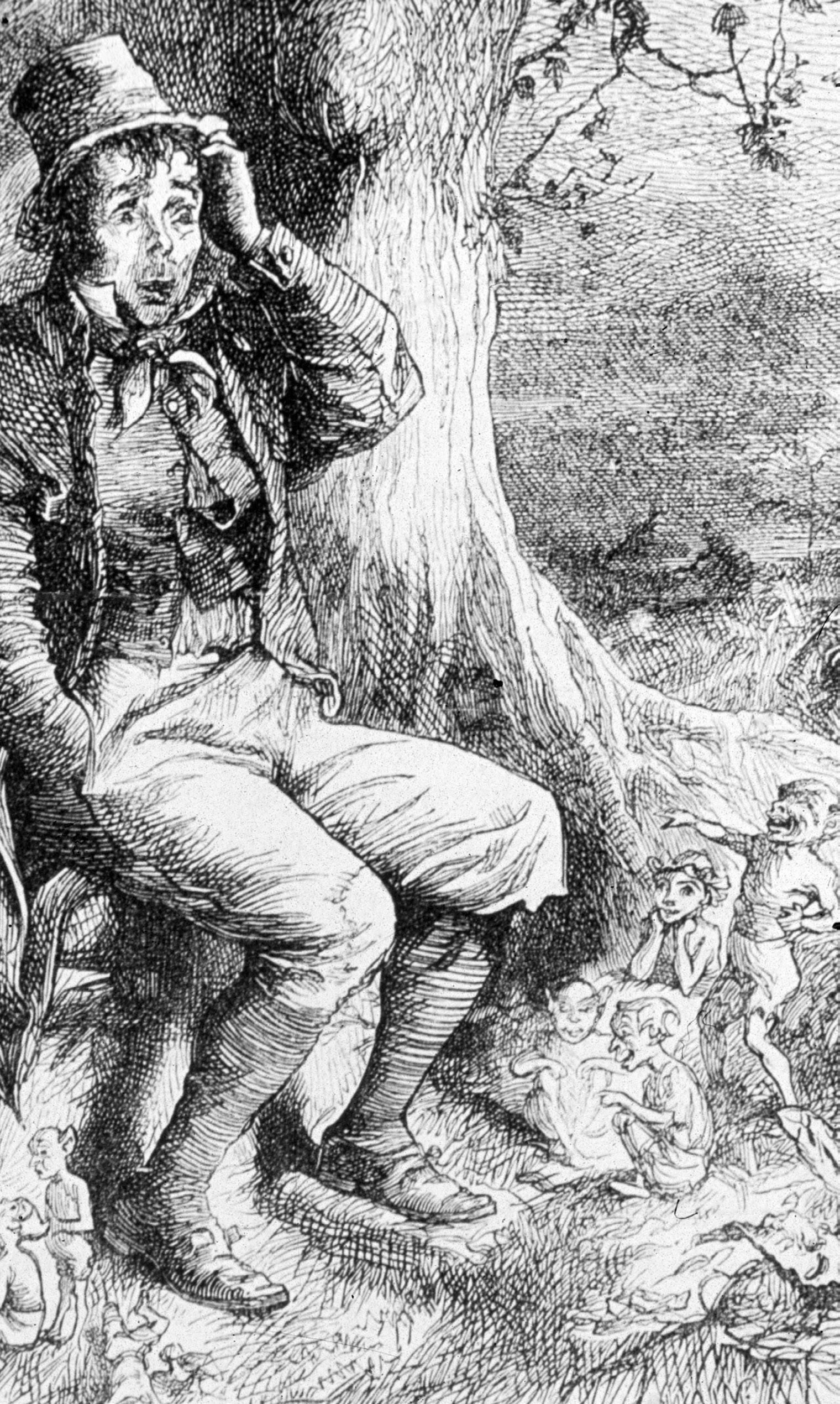
LEPRECHAUNS ARE DESCRIBED AS THE CHILD OF AN EVIL SPIRIT AND A ‘DEGENERATE FAIRY’ AND AREN’T WHOLLY GOOD OR EVIL.”PUKWUDGIES/EBU GOGO/ WOODARJEE
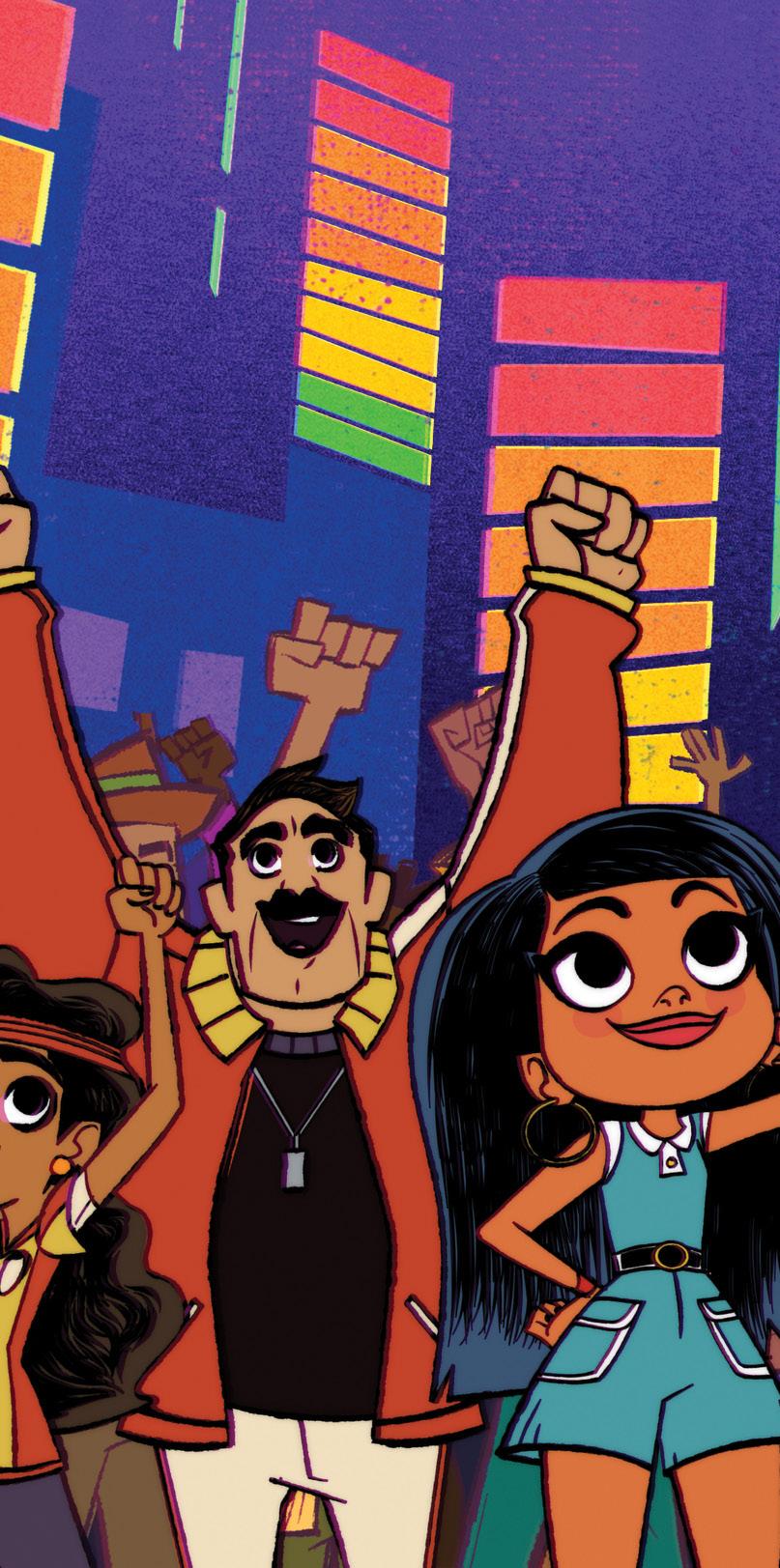 .
BY MIKE CECCHINI
.
BY MIKE CECCHINI
WHILE YOU’RE DEALING with the lingering buzz from seeing Ant-Man and the Wasp: Quantumania in theaters or wondering when Secret Invasion is finally going to premiere on Disney+, there’s another Marvel project you absolutely should not overlook. Moon Girl and Devil Dinosaur is out now, and it’s an animated adaptation of the Marvel Comics series of the same name, focusing on Lunella Lafayette (Diamond White), the smartest 13-yearold in the world, who accidentally summons a red tyrannosaurus rex (Fred Tatasciore) to modern-day New York City. Of course, the dinosaur in question is friendly, and the pair embark upon wild adventures through some of the lesser-known corners of the Marvel Universe.
“We started talking about this show as early as 2016,” executive producer Steve Loter tells us. “But it took a while because we actually wanted to make sure that we got it right. We knew the weight and the importance of the show. But we also wanted to make sure it had all the ingredients it needed. The music, the comedy, the drama.”
The show is strikingly animated, with brilliant colors popping out against a surprisingly lived-in and accurate representation of NYC’s Lower East Side neighborhood.
“We wanted to make New York a character in itself,” producer Rodney Clouden says. “It’s not slick; it’s grainy. It’s got atmosphere, it’s got history, and we drew on the inspiration of
street art, graffiti, Andy Warhol screen printing, offsetting techniques, Basquiat. We just wanted to look real cool. We had the graffiti done by a real graffiti artist. We wanted to bring that authenticity to the look of the city as well as the characters.”
It’s also tuneful, with extended “mixtape sequences” that help to tell the story.
“They’re basically music video sequences, where everything comes together, the action, the music, and we flip to different color palettes,” producer Pilar Flynn explains. It’s just total nonstop magic and poppy, gorgeous colors.”
But this isn’t just any original music; the show has R&B legend Raphael Saadiq creating its tunes. Loter had a unique approach to getting the producer on board.
“He was doing a signing at a record store in Los Angeles, so I went down there, first in line,” Loter says. “In the 30 seconds that he was signing my record, I convinced him to be on the show. I literally pitched him in those 30 seconds. So by the time my record was signed, he was signed on to the show. The thing that I always take away from that is, you know, people always say, ‘Don’t meet your heroes.’ But the truth is, maybe you should meet your heroes because eventually, they’ll do music on your show.”
Moon Girl and Devil Dinosaur is available to stream on Disney+
⊲ POPS
“Pops is Lunella’s granddad. He started this roller rink back in the ’70s… and he’s making something that’s inclusive for the entire community. He’s got the background of the Lower East Side [and] even now, this place sits on millions of dollars’ worth of property, but he’s not getting rid of it because it’s all about family and community to him.”
— GARY ANTHONY WILLIAMS, VOICE OF POPS
“He’s a 10-ton dog! He loves Lunella and would do anything for her. He’s not just her pet; they’re partners and friends. Where I am weak, she’s strong—and vice versa. And she knows how to interpret my chirps and roars. He prefers to be with her. That’s home for him.” — FRED

“My first thought was this is something that I needed growing up. I watched a lot of cartoons, and I haven’t seen anything like this, showing Marvel and Disney’s first Black teenage girl superhero. It’s historic, and it teaches all the young kids like me that quantum physics is cool and one girl can make a difference. I feel like that’s a really important message that I needed.”

 — DIAMOND WHITE, VOICE OF LUNELLA LAFAYETTE
— DIAMOND WHITE, VOICE OF LUNELLA LAFAYETTE
MARVEL COMICS ARE KNOWN for their stylish drawings, bold colors, and dynamic splash pages, and the Marvel Cinematic Universe has achieved incredible box-office success utilizing expensive visual effects, razor-sharp fight choreography, and a parade of recognizable faces. But how do you create a sprawling, action-packed Marvel project without using any of that?
This was exactly the challenge that Marvel faced when it decided to develop a six-season scripted podcast featuring some of its most beloved superheroes and villains, but in a surprising new context.
The denizens of Marvel’s Wastelanders are living in an alternate future Marvel timeline where the villains have ultimately won, and very few heroes have lived to tell the tale. In this new world order, Wolverine, Hawkeye, and Black Widow are scattered—either in hiding or as shadows of their former selves. When Star-Lord suddenly crashes back to Earth on a curious mission, a series of events forces them all to assemble one last time.
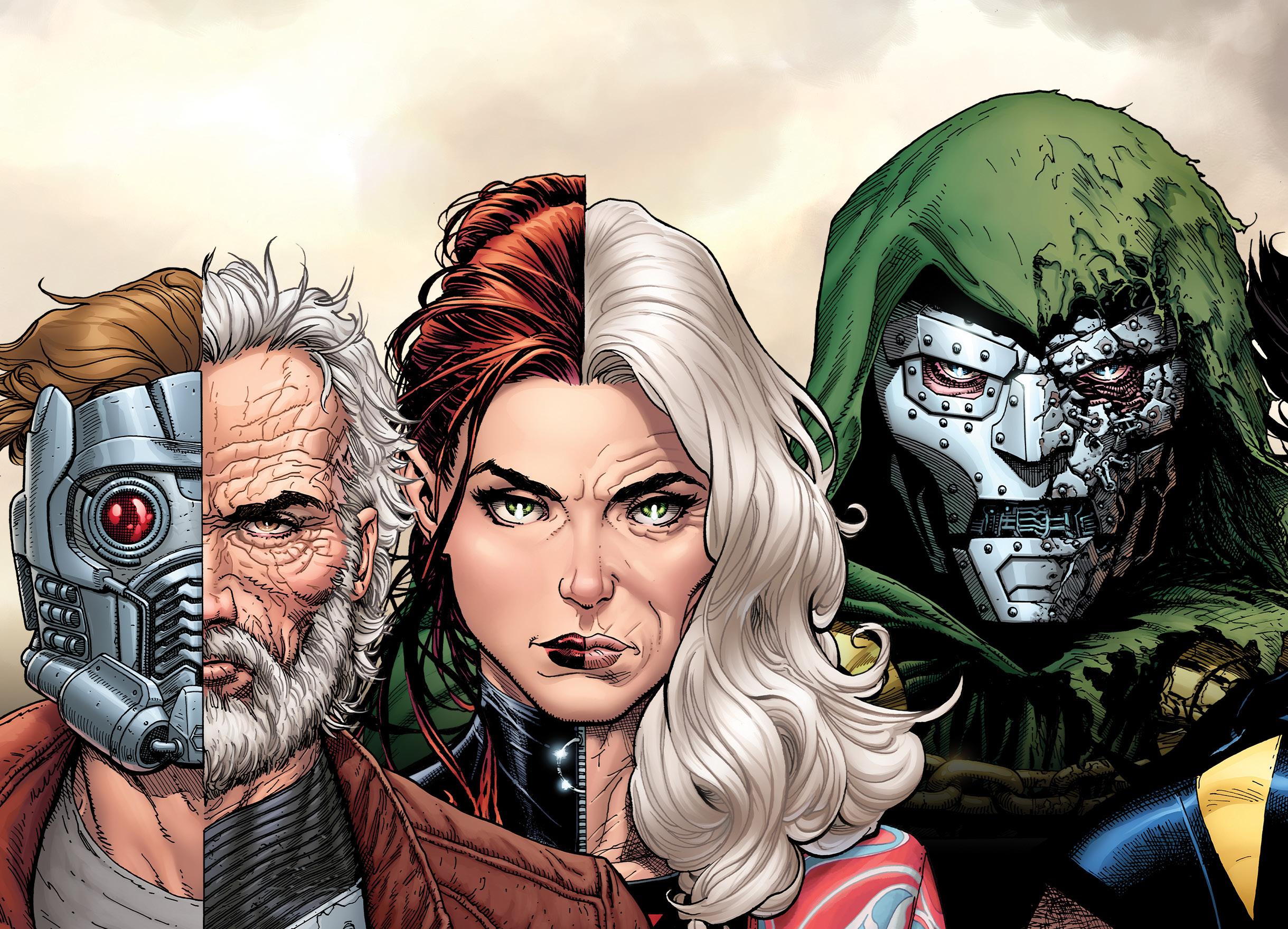
Jessica Jones and Supergirl TV writer J. Holtham’s background as a playwright helped him flesh out the aural world of Marvel when he first
BY KIRSTEN HOWARDcame aboard to pen Wastelanders: Hawkeye, the second in the interconnected series of podcasts.
“So much of theater is in the dialogue and conversation,” he tells Den of Geek. “With a scripted podcast, there’s a lot more that you have to describe to the audience. You have to figure out how to make it okay for people to narrate what they’re doing. Pulling an arrow back in a bow might seem like a distinctive sound. It is not! Neither is shuffling cards. So we asked ourselves, ‘What are distinctive sounds, and how can we incorporate other things that are happening into the dialogue?’”
Similarly, Marvel Comics veteran Mark Waid tells us he was inspired by the storytelling of 1930s and ’40s radio serials when writing Wastelanders: Doom. “My father introduced me to the old-time radio shows he loved as a kid, and I’m still a fan. Having listened to thousands of hours of shows like The Shadow and Inner Sanctum really trained me to write visually.”
But it’s the incredible voice talent who make the world of Wastelanders come alive in this format. The cast boasts the likes of Susan Sarandon, Robert Patrick, Sasha Lane, Dylan Baker, Stephen Lang, Keith David, and Chris Elliot. “Everyone wants to be a part of the Marvel Universe,” Holtham says. “It attracts a lot of people across all spectrums, and there are a lot of secret geeks out there!”
Wastelanders features a massive cast of characters, and the actors playing them had to understand that the action would incorporate not just their performance and various
sound effects, but the audience as an active participant.
“You don’t have to narrate every single punch, but you have to be able to communicate the physicality of a scene,” Holtham says. “You can add grunts and oofs, but mostly it’s about getting these characters into a room so they can talk and letting the audience’s imagination fill in the scope, especially with the big action sequences.”
The first five seasons of the podcast focused on individual character journeys, but as those stories unfolded, a bigger picture emerged. “When we started working, we were a bit siloed,” Holtham explains. “We did have a couple of writers’ summits to agree on some basics, but when I built Hawkeye, I was given a fair amount of latitude, [which] this world allows because it’s divided into sections, and each section can be very different from the other. Once we moved into the team-up aspect of Wastelanders, we were all pulled together, and it
became a much more traditional, collective effort.”
This collective effort has led to a final team-up, gathering Wolverine, Black Widow, Hawkeye, and Star-Lord together to face the consequences of living long past their relevance. Nostalgia for an Earth with a protective stronghold of mighty heroes has faded. The future is dangerous, often lawless, and villainy is around every corner. The Old West is new again. What do our remaining Marvel heroes have left to fight for?

“These are broken people who have lived through an apocalypse and its aftermath, and they have done terrible things,” says Holtham. “They have lost everything they cared about and have to reckon with that. Wastelanders is a conversation about how to rebuild the
world. Are you trying to build it as it was before, or build something new? For me, that’s always an interesting conversation—and to do it with these characters makes it extra exciting.”
At ten episodes, Wastelanders’ concluding team-up might be the longest Marvel climax in history, so it naturally stands apart from the kind of final act we’re used to seeing on the big screen—there aren’t a lot of prolonged, deep talks at the end of your average MCU film.
“The trickiest part has been to take all of these series that have had their own emotional arcs and their own stories and find a way to tie them all together,” says Holtham. “In that way, the slow burn helps.”
Marvel’s Wastelanders is available wherever you get your podcasts.
THESE ARE BROKEN PEOPLE WHO HAVE LIVED THROUGH AN APOCALYPSE… AND THEY HAVE DONE TERRIBLE THINGS.”


“He turns into this very moody, somber character that everyone associates him with. But how do we get there?”
“MaXXXine is the best script out of the three, and I have no doubt that it’s going to be the best film of the trilogy.”

“It’s like a jury movie, to some extent... you’re giving a verdict of some kind, and it’s the ticking clock that decides it.”
— M. Night Shyamalan on the decisions the characters have to make in Knock at the Cabin

“In many ways, it made things worse for anyone who wasn’t white at the time. There was a way in which sound coming in weeded out accents of all stripes, and then moral codes coming in weeded out a certain kind of allowance, for instance, different sorts of sexual behavior onscreen or offscreen.”

— Damien Chazelle on the advent of sound in Hollywood.

“IT’S JUST REALLY F UCKIN HARD TO MAKE A SHOW WITH NO STANDING SETS O0R RECURRING CAST.”— Rian Johnson on making a case-of-the-week procedural with Poker Face. — Mia Goth on her next horror collaboration with Ti West after X and Pearl
“E ATING ON SET IS NOT THE FUNNEST THING IN THE WORLD.”— Peter Mark Kendall on housing dozens of lengua tacos for a scene in Netflix’s Kaleidoscope — Harry Melling on Edgar Allan Poe’s origin story in The Pale Blue Eye
“I CELEBRATE DI SOBEDIENCE A S A V IRTUE, A ND I CELEB R ATE NOT BEING CHANGED TO BE LOV ED”
GUILLERMODEL TORO ON PINOCCHIO
“It’s very human to have the thing you’re not allowed to do and then just go, ‘You know w h at, I ha v e t h e p o wer to do it an y w ay.”— Alexandra Daddario on the intoxicating power of being a witch on Mayfair Witches

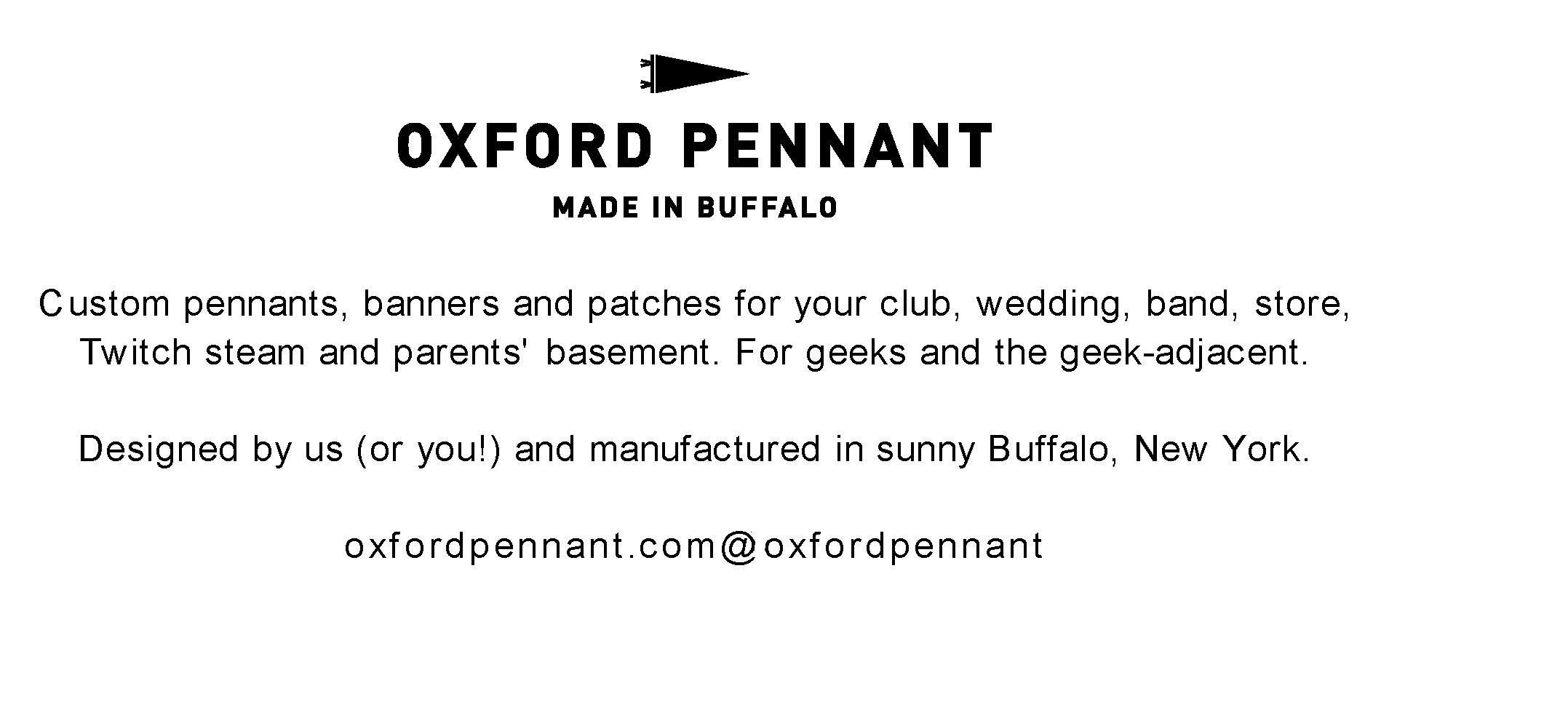
ZACHARY LEVI AND DAVID F. SANDBERG PULL BACK
THE CURTAIN ON SHAZAM! FURY OF THE GODS , THE ELECTRIFYING SEQUEL TO DC’S MOST JOYFUL AND YOUTHFUL SUPERHERO MOVIE.
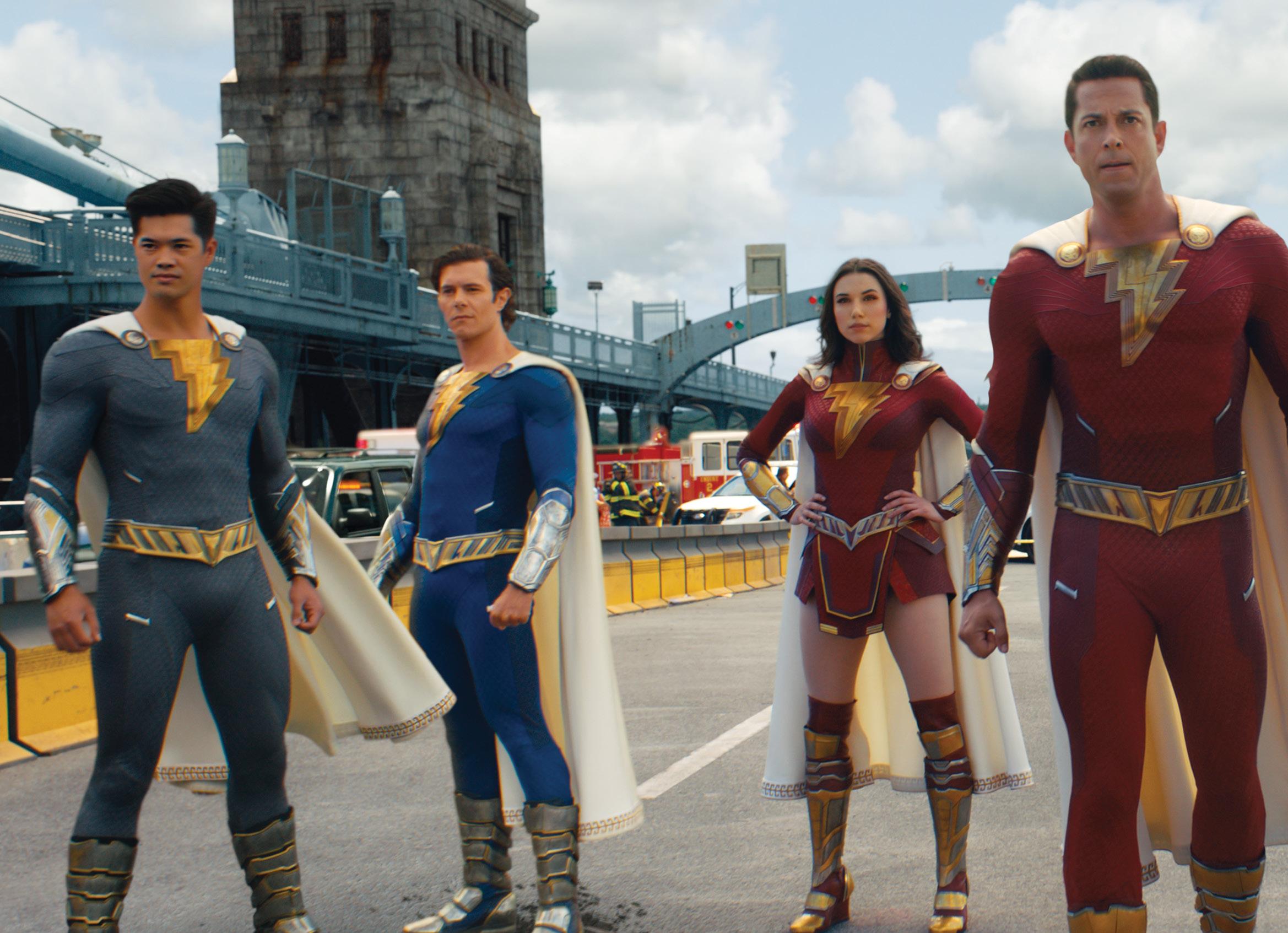 BY ROSIE KNIGHT
BY ROSIE KNIGHT
Sandberg is excited that Shazam! Fury of the Gods is finally finished. “I’m very eager for people to see it,” he smiles.
In case you need a refresher on the first film, it introduced viewers to Billy Batson (Asher Angel), a young boy struggling through the foster system, who is chosen by a magical Wizard (Djimon Hounsou) to wield the powers of an array of Greek gods simply by saying the word SHAZAM. That magic word allows Billy to transform into a real-life —and fully adult—superhero (played by Zachary Levi), who takes his name from the acronym that gives him his powers. After battling the nefarious Doctor Sivana, Billy bestows his foster siblings with powers of their own. As Fury of the Gods begins, our teen heroes are finding their place in the world.
At the heart of both films is a magnetic dual performance from Angel as Billy and Levi as Shazam. It’s one of the most unusual and unique representations of superheroes that we have seen on screen. As Levi points out when we speak, he’s in a singular position. Sharing his performance with Angel, he still has to encapsulate both sides of Shazam. “Even though I look like the hero, I’m still the alter ego inside and I still behave like him. So I kind of get to do both, which is really fun and very different.”
was just four years ago when DC’s youngest superhero burst onto the screen in David F. Sandberg’s delightful Shazam!. Since then, the world has changed in unimaginable ways. But when Den of Geek speaks to the director of the comedic superhero romp and its upcoming sequel, he

shares that the story of Billy Batson and his superheroic adult alter ego have been his one constant. “It’s weird because I haven’t done anything else in between. I did Shazam! and then [the sequel] straight after—and yeah, there was the Covid break—but it feels like it’s just continued on.”
After years spent crafting the sequel and living through a pandemic,
Playing Shazam means a lot to Levi, who appreciates the rare gift that it is to get to return to a character for a second outing on the big screen. “If you’re an actor, you’re always dreaming that you’re doing movies that are good enough that the studio says, ‘We’re going to make more.’ I’ve never been the lead of a franchise that’s doing well enough to be able to do that. So it’s a crazy dream come true to have the job, to begin with. Now we get to make more,” he says. “What’s even cooler is—and I don’t say this lightly—I saw a screening of the movie a couple of weeks ago. I think we’ve made a better movie the second time. I don’t know a lot of people that can say that.”
The superpowered Shazamily (from left): Ross Butler as Eugene, Adam Brody as Freddy, Grace Caroline Currey as Mary, Zachary Levi as Shazam, Meagan Good as Darla, and D.J. Cotrona as Pedro.It’s a huge statement, especially coming from the star of said movie, which has garnered a passionate fanbase. Levi is aware of that and is effusive about the original Shazam! and its fans. “I think we made a really good first movie. I think that’s evidenced in the people’s response to it, how it’s landed, and how it has been received. I’m so grateful and proud of that movie.”

So what’s so special about that sequel? “I think we were, all of us
actors, just syncing up our relationships and our characters,” he says. “The story is fantastic! [Screenwriter] Henry Gayden knocked it out of the park both times. David F. Sandberg, our incredible director! We all had more runway. We had more money. We had more time. We were able to make something really f***ing good.”
Both Billy and his superpowered siblings have grown up since Shazam!

and are now dealing with full-blown teenagehood and having the powers of Solomon, Hercules, Atlas, Zeus, Achilles, and Mercury. “They grow up really fast,” Sandberg laughs. “It’s crazy looking back at the first one now, and it’s like, ‘Wow, they were so tiny.’ Now they’re little adults. We leaned into it because we can’t pretend it’s the day after the first movie, you know?”
For Levi, that meant aging up his performance while still keeping the
The unpowered Shazamily (from left): Jovan Armand as Pedro, Jack Dylan Grazer as Freddy, Asher Angel as Billy, Faithe Herman as Darla, Grace Caroline Currey as Mary, and Ian Chen as Eugene.HE’S FINALLY FOUND A FAMILY, WHICH IS WHAT HE WAS SEARCHING FOR HIS WHOLE LIFE.
—DAVID F. SANDBERGShazam (Zachary Levi), the grown-up Billy Batson, gets ready for battle.
youthfulness that’s key to his hero. “The biggest thing I wanted to do was just make sure that I was attempting to behave in a way that was still obviously much younger than I am but still a little older than what Asher and I had to accomplish together in the first one.” Going into Shazam! Fury of the Gods, it was that relationship that helped Levi work out how to craft a (slightly) more mature Shazam.
“I’d just try to take my cues off of Asher and be like, ‘Okay, where’s he at in his life right now?’ He’s playing a version of himself in a lot of ways,” Levi shares. The actor also studied this generation of teens to perfect just how to bring his adolescent adult to life. “Where is our culture now? What is the attitude? What do people think is cool and not cool right now if they’re 17?”
Fury of the Gods finds our hero at a crossroads, about to age out of the foster system where he found his family and trying to work out who he is in the world of DC heroes. “This movie’s very much about Billy as he’s trying to figure out what his place in

How do you prepare to play a god?
It’s very interesting because no human psychology can come into it. You have to take yourself away from senses of morality or senses of desire or all of the things that you normally would be investigating in a character. You just have to say no, none of that comes into it. So it was quite an interesting headspace to be in. Right at the top of the film, there was a little tiny section in that sequence where my stunt stand-in was doing the walk. It was very interesting. I had to sort of teach her how to walk like a goddess. You have to walk as if you know people are going to step aside. You have to walk in a way that is utterly confident, utterly grounded, just absolutely knowing that you know that’s your way you’re going and nothing’s going to stop you.
That sounds both unique and cathartic, to inhabit someone who just has total belief in themself and their mission.
Yes. Exactly. And you know people say, “What’s it like to play the villainess?” But she doesn’t see herself as the villainess, no, no, no! She’s doing what is righteous as far as she’s concerned. And as a god, she has every right to do that.
You got to work with two brilliant women to bring the Daughters of Atlas to life. What was that experience like?
It was a perfectly balanced relationship, I have to say. Me, the sort of wise older actress if you like, then Lucy, who is incredibly smart, very hardworking, professional, and wonderful. And then Rachel, who’s this wonderful, young, new young talent. At that time, West Side Story hadn’t come out. So she was very much the young one that Lucy and I felt we had to guide, protect, and advise, so we were beautifully balanced. And we bonded in a really lovely way, and we will be sisters for the rest of our lives.

How do you prepare to play a god?
The funny thing is there’s no guidebook. There’s no "How to Play a God for Dummies"! And I didn’t really know who I was playing while I was auditioning. When I got the phone call from David Sandberg, I thought he was my GrubHub delivery driver. I answered after one ring. And he said that’s the fastest anyone’s ever answered the phone.
What was it like to work alongside Helen Mirren and Lucy Liu to craft the goddesses?
They were the loveliest women to work with. It’s one of those things where you’re really hoping that they’re going to be that, and you kind of put this pressure unknowingly on the relationship to be like, “I just hope you’re everything that I want you to be.” And they check every box in their own wonderful way. It’s really a rare thing to get to come to work and work with only women for the day. And we had a couple of days like that, just the three of us, which was really amazing. It’s really eye-opening. And then it became this beautiful sisterhood.
Can you share a little about Anthea and her relationship with her sisters as they embark on their mission to reclaim their powers?
They’re completely justified in their anger. And the funny thing is that each daughter kind of takes it to a different level. I think in Kalypso’s case, she’s probably the angriest. And she’s also the middle child. I don’t even know if [scriptwriter] Henry Gayden meant to give us young child, middle child, oldest child syndromes, but it was amazing. Hespera is the oldest and her anger is much more grounded and philosophical. And Anthea’s just like, “Sure, they did this and we have a plan and that’s great. But I just met this Freddy kid. He seems really nice.”
the world is,” Sandberg says. “He’s not the only superhero in the [DCU]. So what’s his role? What’s his worth?”
That also comes with a newfound fear of losing the thing that he values the most. “He’s finally found a family, which is what he was searching for his whole life, and he’s terrified of letting go. He wants them to do everything together,” Sandberg says. “He’s holding on very tightly.”
That family dynamic is one of the highlights of Shazam!, which ended with the newly monikered Shazamily made up of Billy and his superpowered foster siblings. Billy sharing his powers was an electric sequence that led to an epic final battle, and Sandberg was eager to explore their next evolution in the sequel. “In the last movie, it was just that one moment. Now we get to see more: how they all work together, how they are as a team. Now, they’re all superheroes, they’ve been superheroes for a while, and they’re trying to do their best to be superheroes. But just like Shazam didn’t have a manual, they don’t have one either. And they haven’t really had a big challenge yet.”

That challenge comes in the form of the film’s antagonists, who were

created for Fury of the Gods. The three Daughters of Atlas, played by Hollywood icons Helen Mirren, Lucy Liu, and West Side Story breakout star Rachel Zegler, are ancient deities who are furious that Shazam and his siblings stole the powers of the gods. It’s an inventive choice and one that strays from the character’s comic-book canon. To Sandberg, though, it was a logical choice. “If those powers came from these gods, what if they were actually taken from them? They didn’t want to give up their powers, and now they’re coming to Earth to take their

powers back, and they’re pissed off about it.”
Levi feels the same way about the new antagonists, highlighting his excitement at the goddesses’ arrival. “It’s a really great take because you’re tying into what is very prevalent in Shazam’s lineage and canon. I think it just served the story so well... it was the perfect way to go.” The actor was also keen to gush about his legendary new co-stars and what they bring to Fury of the Gods. “I think that any time you can get Helen Mirren and Lucy Liu to come in and be the badass lady
bosses kicking ass and taking names, then you’re in for a treat. They’re both fantastic.”
In Sandberg’s words, it was nothing less than “a dream come true” to work with the trio who brought the goddesses to life. They’re not the only mythical beings in the sequel either, as the director teases that the film will feature many fantastical creatures, including minotaurs, harpies, and a Ray Harryhauseninspired cyclops. That juxtaposition of the magical and the mundanity of real-world Philadelphia was key to the tone but never posed a challenge to Sandberg. “It wasn’t really like, ‘Oh, it has to be like it’s part of our world.’ They just had to feel cool.”
The beasts also had to feel scary. Sandberg cut his teeth on horror flicks such as Annabelle: Creation and Lights Out before entering the DC pantheon. He used that experience to bring a very specific and effective blend of fear and fun to the first film, and he promises that the sequel will continue that thread. “When I was a kid, I loved seeing things that had that edge to them or had a little bit of danger. I love Raiders of the Lost Ark, faces melting off… I love that stuff. So to me, when you bring that little
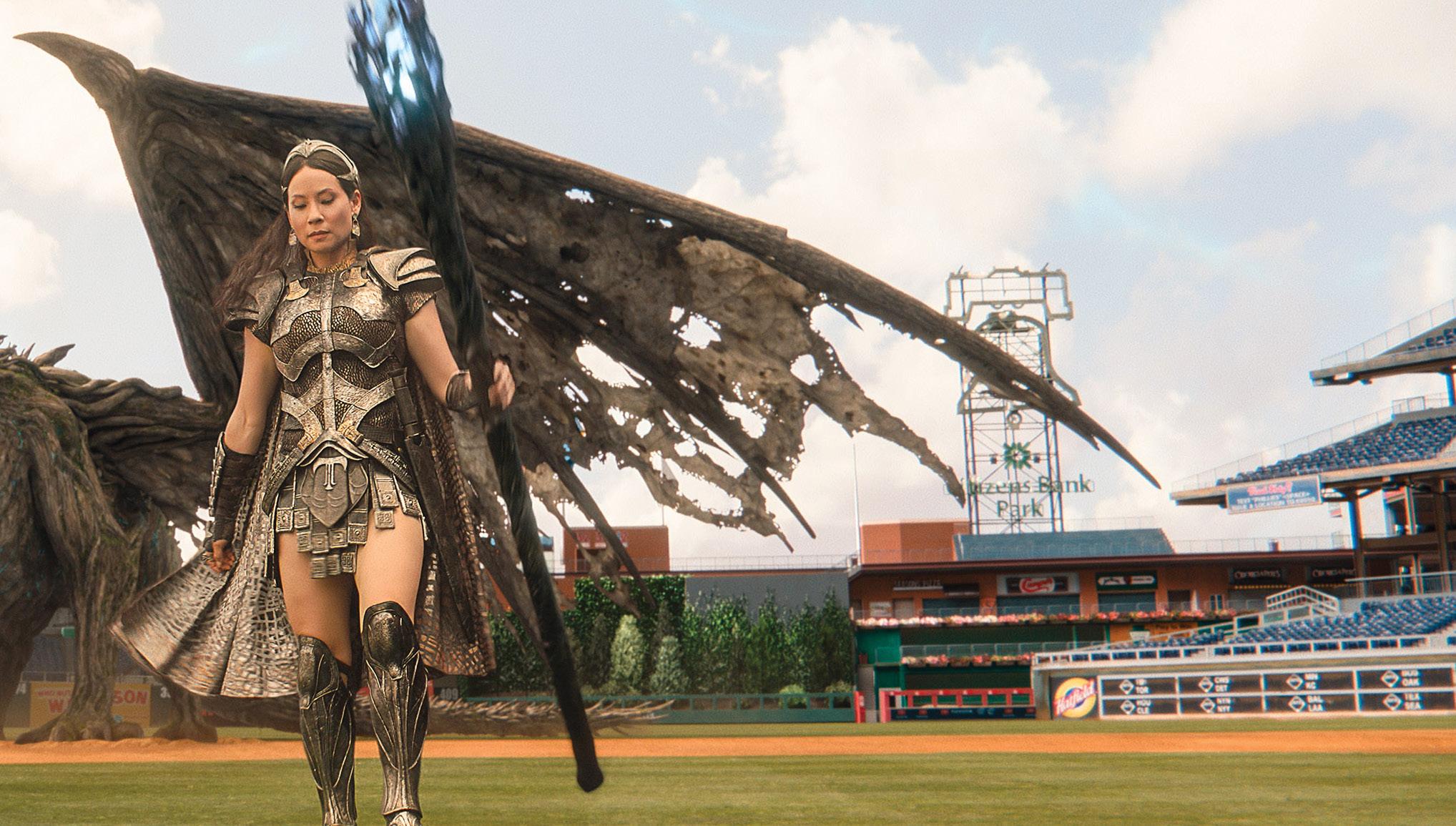 Kalypso (Lucy Liu), one of the three Daughters of Atlas, brings a mythical dragon to modern-day Philadelphia.
Zachary Levi on set with director David F. Sandberg.
Kalypso (Lucy Liu), one of the three Daughters of Atlas, brings a mythical dragon to modern-day Philadelphia.
Zachary Levi on set with director David F. Sandberg.
bit of scariness and edge to it, it makes the danger feel more real.”
Those unexpected tonal shifts are a large part of what made the first Shazam! feel so special. Combining the heart of a family film with the epic scope of superheroes and the spookiness of classics like Gremlins and The Dark Crystal, it immediately stood out among its DC peers. So does that give the crew more freedom to tell a different kind of story? “I think so,” Sandberg says, “to a certain degree. That’s what I love about Shazam, that wish fulfillment you can’t do with any other character.”

To the man who plays Shazam, that tonal difference reminds him of another famed costumed crusader. “I’ve always believed that we’re kind of like the Deadpool of DC,” Levi says. “Not in the same tone exactly. But we are afforded an irreverence, a naivete, this kind of on-the-outside-looking-in perspective where we can almost have a commentary on our world that other movies in our universe don’t really have. They’re more earnest, they’re more serious, they’re darker, and we are not that. So we get to be a little sillier sometimes. And I think that leads to a lot of really fun options
and possibilities when you’re doing more stories.”
In Fury of the Gods, though, Billy has to make some tough decisions. While Sandberg “wouldn’t say he goes dark,” the director does tease that “he has to make some real sacrifices to protect not just his family but the world.” That more serious conflict allowed him to present a new side of Billy as he embarked on the second movie. “I wanted to have at least some moments where he comes off as kind of badass, especially towards the end.”

So, what’s next for Shazam? Well, after the arrival of Dwayne Johnson as Black Adam in 2022, many are wondering if Shazam will ever face
down (or team up with) his most famous foe, Levi among them. “That’s all way above my pay grade,” he laughs. “I was trying to get the same answer.” Acknowledging that The Rock is a very busy man, Levi is full of kind words about the previous Warner Bros. leadership under Walter Hamada, as well as being incredibly excited for what’s to come. “As fate would have it, we have two new excellent leaders in James Gunn and Peter Safran. They’re both friends of mine who I trust very deeply, and I know that they are concocting some really cool plans. I don’t know what they are, but I will trust wherever they want to take us.”
I’VE ALWAYS BELIEVED THAT WE’RE KIND OF LIKE THE DEADPOOL OF DC. NOT IN THE SAME TONE EXACTLY. BUT WE ARE AFFORDED AN IRREVERENCE, A NAIVETE. WE GET TO BE A LITTLE SILLIER SOMETIMES.
—ZACHARY LEVIThe Wizard (Djimon Hounsou), who bestowed Shazam with his powers, returns. Shazam (Zachary Levi) has a time out with Hespera (Helen Mirren).
And when it comes to whether he has long-term hopes and plans for the character at the center of the film, Levi is realistic. “There’s definitely little ideas here and there that I brought up in the past. I’m sure I’m gonna sit down with James and Peter soon enough, and we’ll talk about what we think the trajectory of all this will be. The success of the second movie will determine a lot.”
If Fury of the Gods does succeed, then Levi says, “It’s just a matter of just trying to figure out what we can do to keep making good material that includes Shazam, staying true to the character and doing right by our fan base and all the people who have supported the comic and the character for coming up on a century. There are all manner of different things that can be done.” And that’s where Levi shares a glimpse of a dream Shazam project. “Kingdom Come would be amazing,” he says.
The iconic story by Mark Waid and Alex Ross is one that comics fans most want to see adapted. Levi understands its power and the fan fervor for a movie version. “It’s a great story. I think it’s something that fans would devour.”
Shazam! Fury of the Gods opens in theaters on March 17


How do you prepare to play a god?
I think the important thing about playing a goddess is not to overthink it, to just roll with it. I also think that understanding where they came from and what their mission is—that’s important to set the tone. There’s something kind of lofty about that, you know? It’s not just for individual satisfaction; it’s for a greater good. Fighting alongside your sisters to avenge your father, That’s a powerful foundation to go off of. And just to enjoy yourself. You’re playing a goddess; you come with this power already. You’re born into it. I need to bring my world back to life! It’s gonna happen! Let’s go!
What was it like to bring the sisters to life in collaboration with Helen and Rachel?
We had such great behind-the-scenes chemistry. We absolutely adore and love each other and spend time together outside of filming. Most of our work was together, but our personalities are quite different as goddesses. You see that dynamic from the very start. I like that there’s the sibling interaction and also the engagement of how we attract because it’s probably not different from other people’s families. So there’s power behind the three of us being together on screen. And it shows different layers of how we interact with each other and how the power there could be a power struggle between us as well.
When it comes to their mission and that power struggle, can you tease where Kalypso stands?
They came here to avenge their father, and her focus is that. I think she believes that they have to stay on track, and she might end up having more determination than her sisters. And really believing strongly that they’re losing their way. That could be to her detriment. When you become too myopic, you can kind of lose sight of what’s really happening.
uantumania star Kathryn Newton is having the opposite of a quarterlife crisis.
Never one to shy away from setting ambitious goals, Kathryn Newton told herself that “if you don’t get to be a Marvel superhero by the age of 25, get something else going—don’t quit acting, but find something else, go back to college.” So what a birthday gift it is to hit that career milestone right under the wire. The actress, who has been working in Hollywood almost her entire life, will turn 26 while jetting between premieres for Marvel Studios’ Ant-Man and the Wasp: Quantumania, out Feb. 17.
Even though she’ll be boarding a red-eye to Toronto instead of blowing out candles, Newton feels very lucky to combine these personal and professional achievements. “If I’m promoting a movie or on a movie on my birthday, it’s gonna be a great year,” she tells Den of Geek over Zoom from her Los Angeles home—from the same room, in fact,
where she first spoke with director Peyton Reed about the possibility of playing teen superhero Cassie Lang: “I remember finishing the Zoom and telling him, ‘This is going to be a really great movie, and whoever plays Cassie is gonna have the time of her life.’”
While joining the MCU is undoubtedly a career highlight (she describes it as “one of those dreams that was so big, you don’t think it’ll ever really happen”), it’s not the first for Newton. She has appeared in everything from buzzy television dramas (HBO’s Big Little Lies) to Oscar-winning films (Martin McDonagh’s Three Billboards Outside Ebbing, Missouri), and fronted her own teen mystery series (Netflix’s The Society). Her momentum has only been picking up in the past few years, starring in the time-loop romance The Map of Tiny Perfect Things and body-swapping with Vince Vaughn’s serial killer in Freaky
The latter two roles especially have allowed Newton to tap into the power of playing characters who are initially discounted, only to calculate their way out of a never-ending day or reveal how deadly a teenage girl can be if she’s underestimated. This will serve her well in what she describes as the very “grounded” story of Quantumania, in which Scott Lang (Paul Rudd) makes a deal with Kang the Conqueror (Jonathan Majors) to get more time with his daughter Cassie after the five-year Blip that rendered them near-strangers. The fact that Cassie was recast for this film and that Newton will be joining the Ant-Man and the Wasp ensemble (Evangeline Lilly, Michael Douglas, and Michelle
She might be just 25 but Kathryn Newton has already worked with armfuls of Oscarwinning directors and A-list actors, and for her next trick she’s joining the MCU as Cassie Lang in Ant-Man and the Wasp: Quantumania . Underestimate her at your peril.

Pfeiffer) who have already worked together, will amplify that emotional distance between the characters.
Newton confesses that, on set, she was consistently surprised at just how much it felt like this iteration of Cassie had been written specifically for her. She’s the third actress to embody Cassie (after Abby Ryder Fortson and Emma Fuhrmann), and was drawn to how this long-established MCU character is still very much in flux: “Everyone can relate to Cassie; I relate to her—she’s impatient, she wants to be a good person, but she doesn’t understand how to do it; she doesn’t understand her power, just as a human. I’m super impatient, and she’s kind of a mess, just like me.”

By the time Newton saw her first Marvel movie in theaters— she thinks it was Iron Man when she was about 11—she knew her way around television sets from her work on the soap opera All My Children, which she joined when she was four. The sets she likened to a playground, with the props like oversized toys, and her co-stars and the crew were like teammates. “When you’re on a team,” she says, “you want your teammates to play their best and be their best. So on a set, I got a lot of confidence because people wanted me to shine. They wanted me to do a good job; if they were winning, I was winning, and if I was winning, they were winning. I’ve always loved that—I’ve always treated acting as a sport.”
No surprise, as Newton is an avid golfer who advocates for girls to explore the sport, crediting the confidence it gave her at a young age. It also gave her the strength and stamina to handle her own stunts on films like Pokémon: Detective Pikachu (“they were calling me a young Tom Cruise”) and to ace the Marvel workout she underwent for Quantumania. “Golf is way harder!” she laughs.
That supportive team energy crackled on set, where Rudd and Reed both encouraged Newton to ad-lib and try different things on each take, a level of generosity she hadn’t expected. “Even on the biggest job of my life,” she says, “that I thought was going to be so specific with no room to play, I got to try so many things and take risks because there was a trust between our director and Paul and me; the trust to fly and fall and get picked up by the other person.”
Like her MCU forebears, Newton is careful not to give too much away about the bigger picture. Despite what fans would speculate, Newton demurs as to which MCU projects, if any, Cassie might appear in beyond Quantumania. However, she is very excited about Avengers: The Kang Dynasty in 2025, “and the legacy of Kang that’s coming. As a fan and as a newcomer, I can’t wait to watch his dynasty unfold.”
She has even more praise for Majors himself: “He brings a gravitas to the role that demands attention. I was enthralled by working with him; he made me better. We were in scenes that lasted for a week—for me, it was the first time I ever did that, where you’re in the same scene over and over for seven days. Every time he played his music [Majors used specific music as his way into the character]—he was method— that helped me stay in it. That kept it fresh. Kang’s going to be different from any kind of villain we’ve ever seen before, just because Jonathan is so special.”
And while she can’t comment on speculation that Cassie will take on the mantle of her comics alter ego, Stature, she loves the fans’ excitement and how, in her experience, it has driven the forward momentum of a character. “When a fan loves a character, you see more of them,” Newton says, citing her recurring role on The CW’s Supernatural, which led to an attempted spin-off, Wayward Sisters. Even though it didn’t get picked up, the experience sent her to conventions, where she got to hear how her character became a part of people’s lives, which she hopes will be the case with Cassie: “I don’t know what the fans want to see [but] I hope that they want to see more of Cassie after this movie.”
While we wait to see if Cassie will join the rumored Young Avengers, Newton will be continuing to stretch herself for new roles. She just wrapped the 1989-set horror-comedy Lisa Frankenstein, written by Diablo Cody and directed by Zelda Williams, in which she plays a teenage girl who accidentally reanimates a handsome Victorian corpse (Cole Sprouse) in her tanning bed during a lightning storm. Newton raves about the campy “elevated reality” of this nostalgia fest made with the benefit of hindsight. “It’s almost like one of those ’80s movies that you saw years ago that you loved, but we
“I’m excited about the legacy of Kang that’s coming. As a fan and as a newcomer, I can’t wait to watch his dynasty unfold. He’s going to be different from any kind of villain we’ve ever seen before.”IMAGE CREDITS: FRAZER HARRISON/GETTY IMAGES FOR BAFTA
made it today,” she says, referencing INXS, Tears for Fears, and Echo & The Bunnymen as her own personal soundtrack while shooting: “These are the vibes of the movie.”
At the other end of the spectrum is Winner, Susanna Fogel’s biopic of NSA whistleblower Reality Winner (Emilia Jones). Newton plays her younger sister Brittany, bringing the unprecedented challenge of playing a real person, and the responsibility of not letting down someone who lived through her older sister’s “human decision” that changed all their lives. “I’m worried enough about not letting fans down,” Newton says with an edge of self-deprecation, “now I have a real person that I’m trying to make proud, too.”
When asked if she has future dream collaborators, Newton says she’d love to reunite with some previous colleagues— one dream scenario would be joining McDonagh’s recurring company of actors. “When you find something that works,” she says, “I just want to repeat it.” It’s a fitting turn of phrase, as Newton shares there might be a sequel in the works to her 2021 time-loop romance, The Map of Tiny Perfect Things

But when it comes to Hollywood’s love of time-loop films, Newton really brightens up. “I want to do a Happy Death Day/Freaky crossover!” she says—a Blumhouse mash-up that would see her body-swapping heroine crossing paths with Jessica Rothe’s time-loop-breaking final girl. Even though it’s just a fun thought experiment at the moment, Newton says, “I have full faith in writer Chris Landon and [producer] Jason Blum to come up with something even better than the last,” putting them at the top of her list
for future repeat collaborators…. “It just seems like two fun worlds to bring together.”
Also on that wishlist is her Big Little Lies co-star, Reese Witherspoon. The creator of the tastemaking Reese’s Book Club, Witherspoon offered Newton the invaluable advice that an actor should always be reading, passing on book recommendations such as Cheryl Strayed’s collection Tiny Beautiful Things. But it was Rudd who suggested Newton’s current read: Haruki Murakami’s bizarrely imaginative The Wind-Up Bird Chronicle
These are the stories that Newton will share when asked what she’s reading; others she’s keeping closer to the chest and will say only that she’s “cultivating my own voice and stories I want to tell and starting to create things on my own” or with past collaborators. For instance, she and producer Ashley Fox, who worked together on The Map of Tiny Perfect Things, are developing something that Newton can’t talk about yet but which she describes as “a dream project.”
What compels her about these stories and ideas can be distilled down to the specific characters who she describes as “people who are misunderstood or challenging the status quo.” Just like for Cassie Lang, it’s a new phase for Kathryn Newton. She’s been thrilled to discover that many of these opportunities are only a coffee date away. And what’s the best way to keep in touch with her favorite people she’s worked with? Newton finds it’s as easy as texting a “happy birthday.”
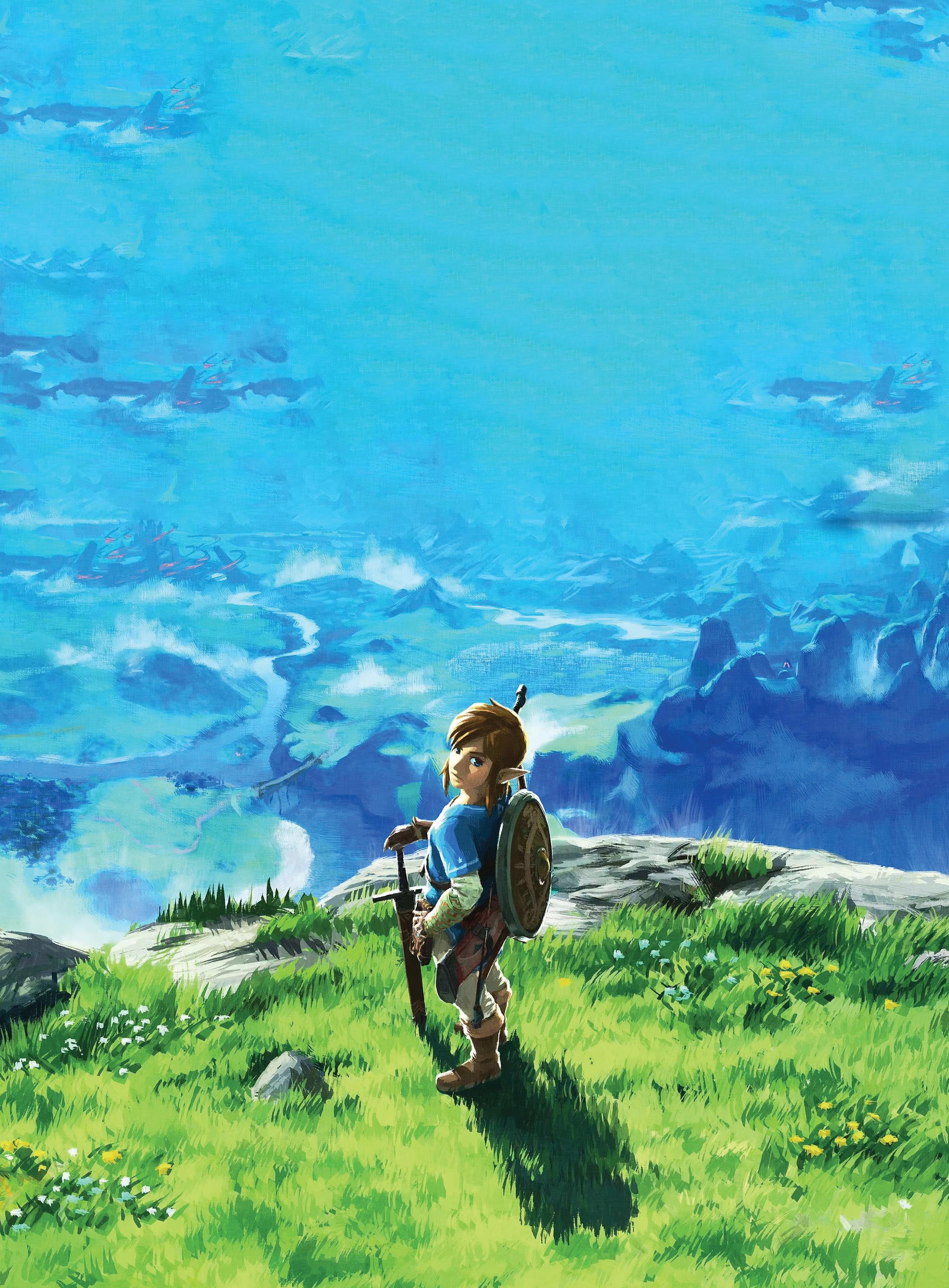
The earliest controversy in The Legend of Zelda’s 35-year history occurred when some players claimed the game’s third dungeon resembled a swastika. Years later, more detailed renders of the dungeon’s map inspired a new generation of fans to ask questions about Nintendo’s design choices.
It turns out the map is designed to resemble a Manji: a Buddhist symbol that represents good fortune. Perhaps Nintendo felt that the two symbol designs were distinct enough (they look similar but face different directions) to ensure that there was no need to change the dungeon for the game’s Western ports.
Years ago, Nintendo published a chart that helped explain the famously confusing Legend of Zelda timeline. However, 2017’s Breath of the Wild is conspicuously absent from that chronological chart to this day.
Nintendo has said that it didn’t want to limit people’s imaginations by assigning BOTW a clear place on the timeline. Furthermore, it’s generally accepted that the game takes place many years after any other Zelda title. Still, many fans suspect that the game’s absence from that official timeline is meant to hide some major secret about the true nature of the experience.
The surest way to convince gamers they can do something is to tell them they can’t. There are few better examples of this phenomenon than the idea that you can beat the Running Man during Ocarina of Time’s race sequence outside Kokiri Forest.
To be fair, the fact that Ocarina of Time players consistently got close to beating the Running Man made it easy to buy into years’ worth of fan theories, photos, and even videos that claimed it was possible to win that race. However, the vast majority of those methods turned out to be doctored or based on hacked versions of the game.
Along with being one of the best dungeons in 2006’s Twilight Princess, Snowpeak Ruins has to be considered one of the most mysterious major locations in any Zelda game.

It’s never explicitly stated what the mansion’s origins are. The
same could be said of a number of Zelda locales, but Snowpeak’s large suits of armor, blend of military and residential aesthetics, hostile location, strange paintings, and defensive structures feel so out of place in the Zelda universe that you’d almost suspect that it was transported from another world. While that’s one popular fan theory for the mansion’s mysteries, its true origins remain unknown.
Zelda 2: The Adventure of Link has long been considered one of the oddest entries into the Zelda franchise, but one urban legend suggests that the game wasn’t originally intended to be a Zelda title at all.
Some fans believe that the game was based on a completely different project that Nintendo converted into a Zelda game at some point in development. But series creator Shigeru Miyamoto shot down that theory in a 2003 interview, in which he stated that the sequel’s differences were “his idea.” That said, he also referred to the idea as “sort of a failure.”

Ganondorf’s armor in Twilight Princess HD features an image of a hero that resembles Link facing off against a giant bird. It closely resembles a scene from 2002’s The Wind Waker, but that doesn’t make sense since these two games exist in separate parts of the Zelda timeline.
We don’t know the official explanation for that discrepancy, but it’s possible that image was a leftover asset from a time when Twilight Princess was reportedly intended to be a Wind Waker sequel. Either that or someone at Nintendo thought it looked cool and didn’t let the lore stop them from putting it in the game.
In 2005, Electronic Gaming Monthly seemingly revealed that Nintendo was designing a remake of The Wind Waker in the visual style of Twilight Princess. This was a dream come true for fans who desperately wanted Wind Waker to feature more “realistic” graphics.
It turns out the screenshot was one of EGM’s famous April Fools’ pranks. Even after EGM confirmed the whole thing was a joke, some fans continued to speculate that Nintendo was working to “fix” Wind Waker. Fortunately, those rumors
died down once more people recognized Wind Waker as one of the best Zelda games ever.
In 2000’s Majora’s Mask, you’ll find a hand sticking out of a toilet that asks for a piece of paper. Strangely, a similar hand appears again in both Oracle of Ages and Skyward Sword. While the owner of the hand is named Phoeni in Skyward Sword, the hand is referred to only as “???” elsewhere.
Series creator Shigeru Miyamoto has stated that the mysterious hand was inspired by old ghost stories involving a hand coming out of the toilet to grab the occupant. However, it’s still not quite clear whether these are three different hands or if they share some kind of horrifying connection.
At the end of Ocarina of Time, we watch Link’s companion, the fairy Navi, leave through a window. However, it’s never been entirely clear why Navi left, where she went, or what happened to her.
Navi is referenced at the start of Majora’s Mask, but that game doesn’t elaborate on her fate. Navi appears in the North American version of Hyrule Warriors but was removed in other versions of that game. Interestingly, there’s a popular Zelda fan game called The
Missing Link, which tells the story of what eventually happened to Navi. That’s about as unofficial as Zelda lore gets, though.
At the beginning of 1991’s A Link to the Past, we watch as Link’s uncle says, “Zelda is your…” shortly before dying. In the Japanese version of the game, Link’s uncle says, “Y-you are the princess…” before passing away. Both of those lines have led fans to believe Link’s uncle was about to tell him that Zelda is either Link’s sister or mom. The Game Boy Advance version of the game clarifies the matter by having Link’s uncle say, “You must rescue Princess Zelda. Our people are fated to.” Even still, some fans continue to look for proof of this wild theory.
Have you ever wondered why Link seems to never have parents across hundreds of years of franchise history? Link’s father is referenced in Breath of the Wild, and there’s a nod to Link’s mom in Ocarina of Time, but other than that, we don’t know much about Link’s parents.

Link plays the titular instrument in 1998’s The Legend of Zelda: Ocarina of Time
While it’s likely this is just one of those things that Nintendo doesn’t have an answer to, the fact that Link’s parents are referred to at all has only opened the doors for speculation regarding who they are in the various timelines and the significance of their absence.

In Ocarina of Time, you’re expected to set some things right that have gone wrong over the years. For instance, beating Forest Temple drives away enemies from Kokiri Forest. Given all of that, you would suspect that beating Water Temple would eventually unfreeze Zora’s Domain.
However, that’s not what happens. To this day, nobody has found a way to unfreeze that area without hacking the game. Many have said that you’re just supposed to “assume” everything eventually works out, but it’s certainly bizarre that the area isn’t affected by your actions in the same way other key environments clearly are.
In Ocarina of Time, the timetraveling adult version of Link learns the Song of Storms from a man who can’t get it out of his head after he learns it from a child. We eventually learn that the child was Link, who played the song in
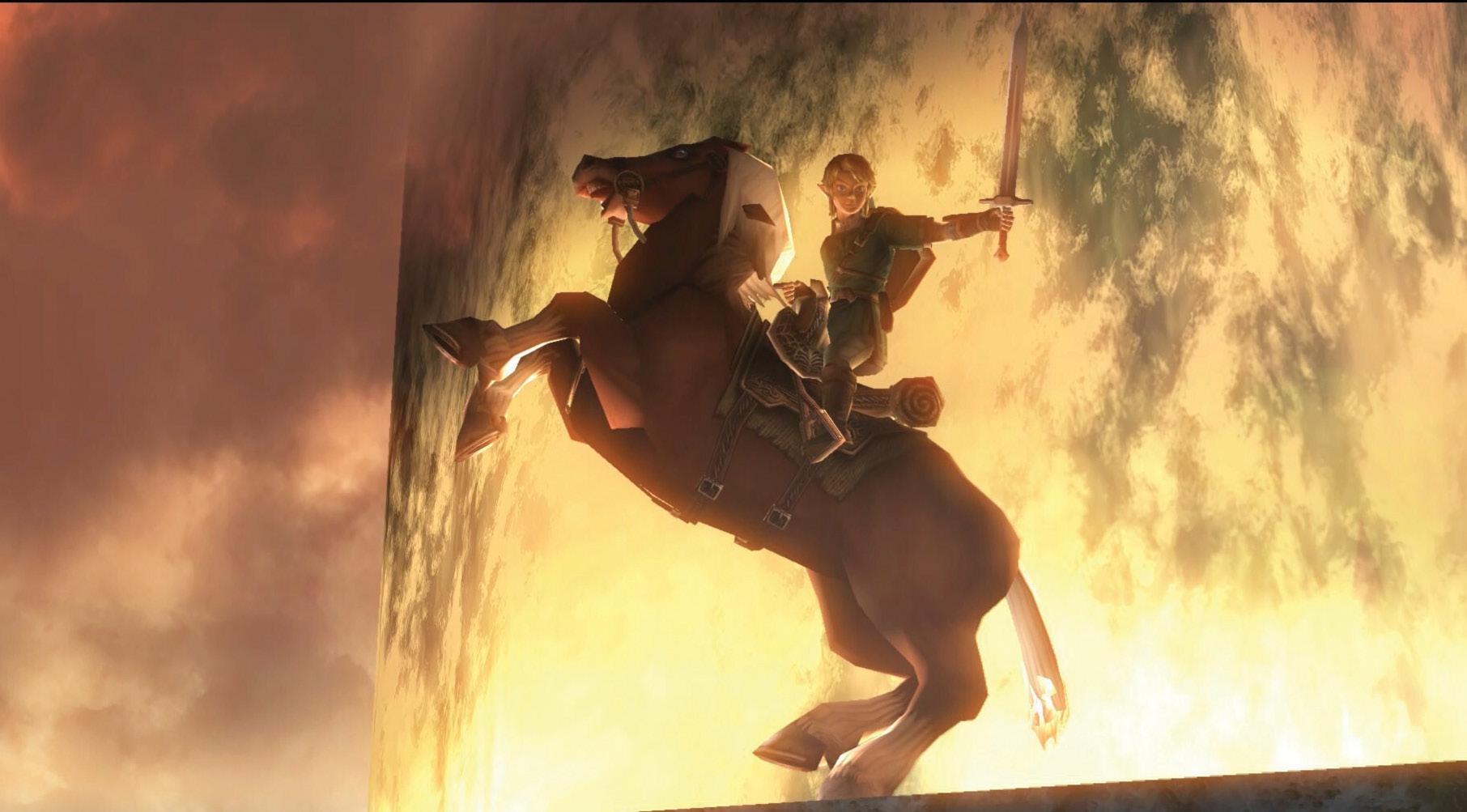
the past after learning it as an adult. It’s a fun idea that doesn’t make a lot of sense. The two most popular theories for this mystery involve alternate timelines or the far more likely explanation that the logic of this moment was simply overlooked or disregarded when Ocarina’s story was written.
In Wind Waker, we learn that the pirate Tetra is actually Princess Zelda. However, some fans suspect that Tetra’s pirates are also more than they seem. We’re initially told that the pirates used to serve

Tetra’s mother and later followed Tetra. However, Link finds a photo in the sunken Hyrule Castle that shows an older Princess Zelda with a group of nobles that bear a striking resemblance to Tetra’s pirates. Are they the nobles or descendants of those nobles? If so, are they ever made aware of their lineage? We may never know the full story.
No Zelda urban legend is more famous than the long-running belief that it’s possible to acquire the Triforce—a powerful relic—in Ocarina of Time. In 1999, a user on the Zelda forums named Almandoz claimed they had found a way to acquire the Triforce. Almandoz shared some images meant to “verify” their findings, but they later admitted they made it all up to show how easy it was to exploit fans. To this day, though, many fans choose to believe it’s possible. It’s a fascinating example of a legend taking on a life of its own.

Thirty years ago, Milestone Media launched, and the comics world listened. Hardware #1, from legendary creators Dwayne McDuffie and Denys Cowan, was the company’s first book in February 1993. It was nothing less than a statement of purpose, the tale of a Black genius fighting his white industrialist boss (who’s secretly a crime lord) to get pay and recognition for his inventions.
But it wasn’t until the Static Shock cartoon launched on TV in 2004 that Milestone made a broad cultural impact. “For so many of us in that generation, Static [Shock], the cartoon, was the door that opened a lot of things up,” Jordan Clark, a member of the Milestone Initiative’s inaugural class, tells Den of Geek.
Milestone and the superheroes it developed—Static and Hardware, Icon and Rocket, the Blood Syndicate, and so many others—turn 30 this year. And the Milestone Initiative, a program designed by Milestone’s current leadership to bring new talent into an industry that’s almost constitutionally resistant to change,
just wrapped up its first cohort. Doors are being jammed open, and the comics line is arguably better than it has ever been—high praise for characters created by incredible talents like McDuffie, Cowan, Michael Davis, and Derek Dingle. But before this revival, the line and the company seemed to be stuck in a state of perpetual near-relaunch for the better part of a decade.
Milestone Media was founded in 1993 by McDuffie, Cowan, Dingle, and Davis. Others were there and involved
in its formation—Christopher Priest, the incredible mind behind one of the best Black Panther runs of all time as well as a brilliant recent run on DC’s Deathstroke, was working behind the scenes to launch the company, as was the media mogul who would eventually be instrumental in its return, Reginald Hudlin. “When we first started Milestone, Reggie was one of the original people who was invited to be part of the company, [but] he couldn’t do it because he was directing a movie called Boomerang with Eddie Murphy,” Cowan says. “I couldn’t believe that he would turn us down for something like that.”

The company was part of the mini-labor revolution in early ’90s comics that saw superstar creators breaking away from traditional superhero publishers and striking out on their own. “Thirty years ago, everyone was younger, all the ideas we had were gonna be great, and we were gonna do everything to change the world,” says Cowan.
For others in the creator rights movement, it was about controlling their own ideas and stories. That was a big part of the goal for the Milestone founders, but it was also about making more Black superheroes. “I’ve had people who were very heavy into collecting comics at the time,” says Clark, “who would talk to me about what it was like going into the stores, picking up Blood Syndicate, picking up Hardware, picking up Icon. I could feel the love and passion from them.”
The Milestone founders formed their company and made a deal with DC for distribution and promotional support, and they were initially very successful. The characters they created resonated. Icon is a superpowered alien who crash lands on a
legends and new talent discuss the company’s history and brilliant future ahead of Icon vs. Hardware.
plantation in 1839 and is adopted by an enslaved woman, takes the form of a Black child, grows into his powers, and doesn’t age beyond adulthood. Hardware, aka Curtis Metcalf, is a young genius inventor whose patron is a mega-industrialist and who uses his brilliance to create technology to fight crime. He breaks away from his patron after being denied a share of the profits from his labor (sound familiar?). There’s the Blood Syndicate, a group of people who gain superpowers after a gang war in Dakota City is broken up by police using tear gas laced with an experimental chemical. And there is one bystander to that police attack who becomes Milestone’s biggest character—Virgil Hawkins, aka the beloved Static.
The line sold like mad for a bit and grew to include new titles like Shadow Cabinet, a super team dedicated to protecting humanity, and Xombi, about a Korean-American scientist named David Kim who got loaded up with nanites and became nearly immortal. But after that early success, the comic industry took a turn, and so too did Milestone’s publication fortunes. Static remained broadly popular because of the cartoon, but by 1998, the comics ceased publication, and there began a decade-long struggle to return the characters to the public eye.
DC worked to integrate the Milestone characters into the main universe, with former DC editor-inchief Dan DiDio announcing that Static would join the Teen Titans at San Diego Comic-Con in 2008; the publication of a new Xombi series in early 2011; and Static Shock as a launch title for DC’s big New 52 reboot later that same year. But despite those green shoots, the comics never took a firm hold, and with McDuffie’s tragic passing in 2011, it seemed like Milestone’s return was going to be a heavy lift.
But in a way, it was McDuffie’s death that would set the stage for Milestone’s huge return, even if it took several more years. Cowan, Dingle, and Hudlin spoke at McDuffie’s wake and resolved to get these characters back into print. “Derek said, ‘It’s been too long. We’ve got to restart the
company’,” Hudlin told the Washington Post in an interview in 2015. “So the three of us have been working… on sorting out all the business, and now we are the core of Milestone Media 2.0.”
Flash forward a decade, and Milestone is on fire. The whole line is back in regular publication and being created by some wildly talented people. Icon & Rocket, by Hudlin, Leon Chills, and Doug Braithwaite, follows Augustus Freeman and Raquel Irvin as they attempt to use their powers to change the world for the better. Hardware, by Cowan and Brandon Thomas, has Curtis Metcalf fighting his crime lord ex-boss to protect his own creations.

Blood Syndicate Season One paired original Milestone talent ChrisCross with Geoffrey Thorne to tell the story of Dakota’s super-powered gang war. Duo updates the old Xombi concept
with star creators Khoi Pham and Greg Pak. And Static: Season One matched Vita Ayala’s thoughtful character work and sharp dialogue with thrilling, energetic visuals from Nik Draper-Ivy.
While the characters and the concepts are familiar, the execution is very different. Back in the day, you “couldn’t walk out of a burning house [with Jefferson Davis’ severed head],” Cowan laughs, referring to the page in Icon and Rocket Season One #2 that sees Icon doing just that. “I love the direction it’s going in… it’s just taking all those things [we were trying to do] and pushing even further.” The fresh talent—Chills, Draper-Ivy, Ayala, even Hudlin, who is only now finally getting to play with the toys that his friends set up—are taking these stories in fun new directions. “When we have our brainstorming sessions, [Reggie’s] extremely excited,” says

Chills. “It’s his first time getting to actually write for Milestone, even though he’s been part of the history for so long.”
Case in point: Icon vs. Hardware, the new crossover written by Chills and Hudlin, with art from Cowan. “The book is about the battle between two ideologically different superheroes and their approach to creating a utopia,” Chills tells us.

Hardware gets his hands on a time machine created by 18th-century inventor Benjamin Banneker and plans to use it to right wrongs in the past. But while there, he runs into the nigh-immortal Icon. “Icon comes from a utopia, in Terminus,” Chills tells us. “And then, with the time machine, Hardware has the ability to make changes, to create what he hopes will be a utopia. He certainly thinks he’s smart enough to make those changes with no consequences.”
It’s safe to assume that those consequences will be the crux of the story. “With Curtis, there’s an element that because he’s Black, there are certain atrocities that he feels like he can potentially affect to create a better future for his people,” Chills says. “[It’s] him trying to do what’s best for his people.”
And then there’s the other piece of the returned Milestone’s work: the Milestone Talent Initiative. In partnership with Ally Bank and DC, Cowan, Hudlin, and Dingle have brought in a new generation of talent from historically marginalized backgrounds to teach them about the comic-book industry. You can see the Talent Initiative starting to bear fruit in this year’s DC Power: A Celebration anthology.
The Milestone Talent Initiative is a piece of DC’s Next Generation pipeline, a way to nurture and support
diverse new voices and bring them into the DC Universe. Jordan Clark and Dorado Quick are two members of this inaugural class, and they co-wrote a Kid Flash/Aquaman story in DC Power that tackles DC’s legacy heroes (something these characters speak to very effectively) from a distinctly Black lens. Their story has Wallace West and Jackson Hyde —Kid Flash and the new Aquaman— arguing about their places as legacy heroes, the struggles they have as Black legacy heroes, and trash-talking each other the way only old friends can. Quick says that he and Jordan Clark developed the idea out of “a combination of three things: our love for the characters; owning a name like [in] Creed; and Issa Rae’s Insecure about [being] comfortable about who you are.”

There’s a bit at the end of their story where a young boy asks Kid Flash for his autograph. Clark and Quick meant that piece as a reflection on their time in the Milestone Initiative. “You go through something; it’s not just for you,” says Clark. “It’s often for someone else to look at your example… everything that Wallace and Jackson are going through, some little kid who is aspiring to be like them, if they don’t exist, if they’re not there, no matter what they’re going through, that young person doesn’t ever believe that they can be that.”
Despite this success, the work isn’t done. “I’m not usually a person who focuses on all the wonderful things we’ve already done,” says Cowan. “It’s always what we have to do next. So all that stuff with the Milestone Initiative is awesome. It’s great. Did it fulfill whatever mission I had back then? No, [but] it’s a start. You know, it’d be great if there was a Milestone Initiative every year for the next 10 years.” Let’s hope the Initiative can keep bringing new voices to superhero comics for longer than that.
Icon vs. Hardware #1 from Chills, Hudlin, and Cowan is on sale Feb. 14 in comic shops and digital platforms. DC Power: A Celebration, featuring Quick, Clark, and several other Milestone Initiative grads, is on sale now.

Alittle over a year ago, an old friend to horror fans (and a scourge to their onscreen counterparts) returned to cinemas in a big way. After being gone for more than a decade, Ghostface slayed again in Scream (or “Scream 5,” as everyone, including its directors, calls it). And the fiend really did make a killing: at the box office, with fans, and with a majority of critics. Curiously, there is something comforting about seeing the same Edvard Munch-inspired Halloween mask and hearing the
familiar voice of Roger L. Jackson hiss movie trivia through a landline. The movie’s climax even revisited the suburban dream home turned nightmare from the original 1996 film.

“We made sure it lived in what we called a warm blanket,” director Matt Bettinelli-Olpin says now. There’s sound logic in this. Alongside his regular collaborator Tyler Gillett, Bettinelli-Olpin was the first person not named Wes Craven to direct a Scream flick. So they wanted to make sure they “played the hits.”
In retrospect, it was a real Ghostface maneuver, considering how gleefully the pair is now departing from that same formula. In Scream VI, there are no greatest hits, no bucolic Woodsboro setting, there’s barely even time to breathe. Now the survivors of Scream 5 are being tossed onto the streets of New York City on Halloween night, and Ghostface is chasing them in the crowds… with a shotgun.
“No warm blankets on this one!” Gillett laughs. The filmmakers have sliced it to shreds.

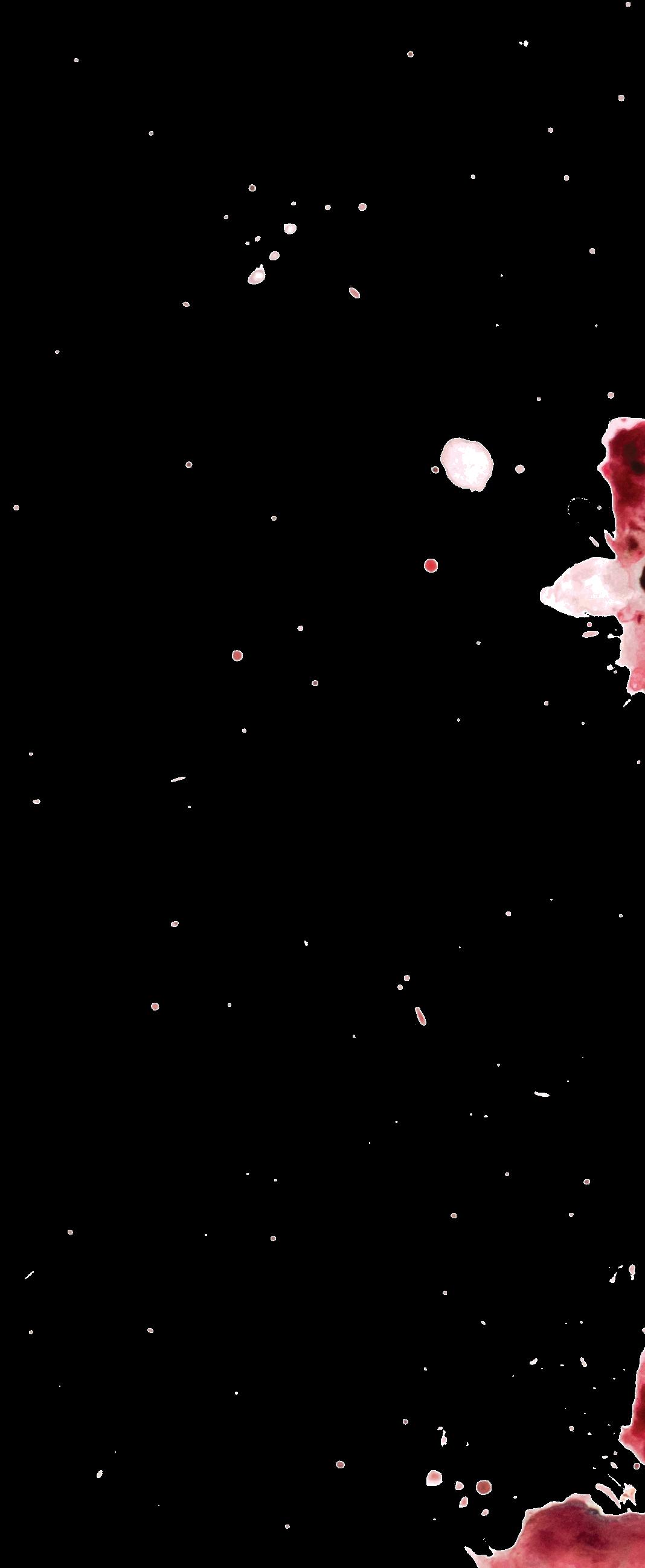
When we catch up with BettinelliOlpin and Gillett, they’re in the final mad dash to finish Scream VI, with three weeks left of special effects, sound, and other little adjustments. It’s been almost one year to the day since Scream 5 opened, and the pair liken the turnaround to hanging onto a rocket ship as it lifts off. Nonetheless, they appear giddy, partially because this is the moment where “the movie becomes a movie,” as Gillett notes, and also because Scream VI is more or less the Ghostface attack they’ve been plotting from the start.
Bettinelli-Olpin and Gillett are part of the filmmaking collective Radio Silence, along with producer Chad Villella. And the way they tell it, the collective, as well as screenwriters
James Vanderbilt and Guy Busick, always knew that if they got another bite at the apple, Scream VI was headed to New York City and its population of eight million suspects.
Says Gillett, “I think one of the really interesting story paths that Guy and Jamie found was taking characters that have experienced something really singular and really specific and putting them in a big city. They are, just by the natural sense of what they’ve experienced, isolated… and they’re in a new place where they would never imagine it could visit them again. Then it visits them again.”

Setting Scream VI in NYC is also the immediate draw in the film’s early spate of marketing. Suddenly, Ghostface isn’t sneaking into your
house; he’s hiding in plain sight on the subway on All Hallows’ Eve or following you into a bodega where there’s only one exit that he’s standing in. It’s chilling, tantalizing stuff for a horror setup.
“I got very excited when I found out that it was going to take place in New York City,” says Scream VI star Melissa Barrera, “just because I love New York City. I think it’s a great setting for a scary movie. It can be a terrifying place.” Indeed, Barrera knows the backdrop well, having gone to school at NYU’s Tisch, and when we sit down with her, she’s only moved a little further down the river, Zooming in from Hoboken, New Jersey.
The actor also recognizes that Ghostface picked the perfect time to
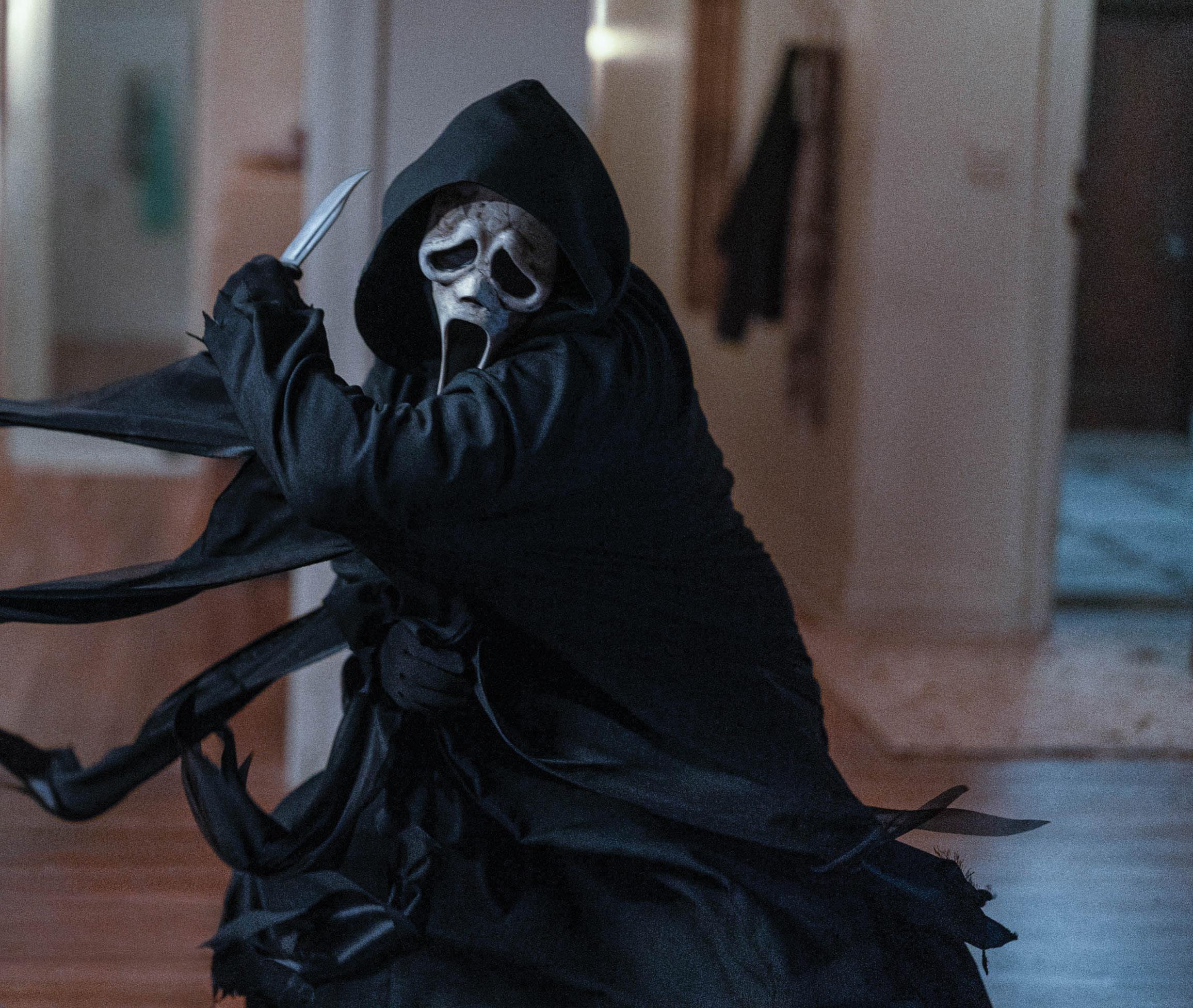 Ghostface with his signature blade. But who will be behind the iconic mask this time?
Ghostface with his signature blade. But who will be behind the iconic mask this time?
visit the Big Apple. While she used to thrill at riding the subway, “postpandemic, crowds do scare me. I think we have a bit of PTSD about that as a society. We’re not used to being in close proximity to people and bumping into each other. You don’t know where hands are coming from, and anybody can touch you, anybody can grab you. You can disappear in a crowd.”
Plus, with the exception of Scream 3 being set in Hollywood, this is the first time Ghostface has left small-town locales. Says Barrera, “We’ve had little visits somewhere else, but mostly we stick to the West Coast. I feel like going all the way to the East Coast is a big statement.”
The declaration includes a gaggle of returning protagonists, too, as Scream VI boasts five (!) survivors from the last film: Barrera’s Sam Carpenter, who is still nursing her physical and psychological wounds following the realization that she’s the daughter of Billy Loomis (Skeet Ulrich’s masked killer from the original Scream); Sam’s younger half-sister Tara (Jenna Ortega); and Tara’s childhood friends whose love of horror movies was shaken after being stabbed themselves, the twins Mindy (Jasmin Savoy Brown) and Chad (Mason Gooding). Meanwhile, Courteney Cox’s Gale Weathers is as indefatigable as ever after the killer shows up in her trendy loft above the city.
Almost everyone is back, and the one thing they all seem morbidly excited about is how this movie just moves so unlike its predecessors.
“There’s no off-ramp,” BettinelliOlpin muses. “It’s you get on, and then you go, and then the movie ends. That’s something we just love, movies that don’t give you a chance to take a breath.”
While the condensed timeline appears poised to heighten the tension, the filmmakers seem genuinely excited about how it will affect all their returning characters, particularly the central heroines played by Barrera and Ortega.


“It’s really a sister’s story,” says Gillett. “Our favorite scenes in this movie are the two of them talking to
each other, honestly. There’s a level of depth and richness in the relationship that they are building onscreen. We keep saying when we’re watching, ‘We just want to be the Carpenter sisters!’”
Barrera teases that this involves Sam being overprotective of Tara after the events of the last film, with the older sibling essentially playing big sister/ mama bear to all three of the last movie’s teenage survivors. She even follows them to college in Manhattan.
“There’s a little bit of friction between the sisters,” Barrera explains, “Tara was used to being independent and not having to deal with anyone. And Sam’s like, ‘I’m back, and I’m never going to leave you alone.’”
Their directors also acknowledge that there’s a quality and trust which springs from reuniting with Barrera and Ortega on the second shoot.
“We didn’t know Melissa or Jenna before Scream 5 was written,” Bettinelli-Olpin says. “So now we know them and we know their strengths and how to play into them and what they’re interested in. That informed the script Guy and Jamie wrote in a lot of ways, and it informed where the story went. To say Melissa and Jenna are a big part of why the movie turned out the way it did is an understatement. It is really special.”

Adds Gillett, “Everything else feels like of greater significance because, at the end of the day, you hope that those characters can find a way to connect.”
Of course, for a number of Scream fans, including perhaps Radio Silence, the ensemble of Scream VI will be bittersweet since this also marks the
“YOU DON’T KNOW WHERE HANDS ARE COMING FROM, AND ANYBODY CAN TOUCH YOU, ANYBODY CAN GRAB YOU. YOU CAN DISAPPEAR IN A CROWD.”
—MELISSA BARRERA
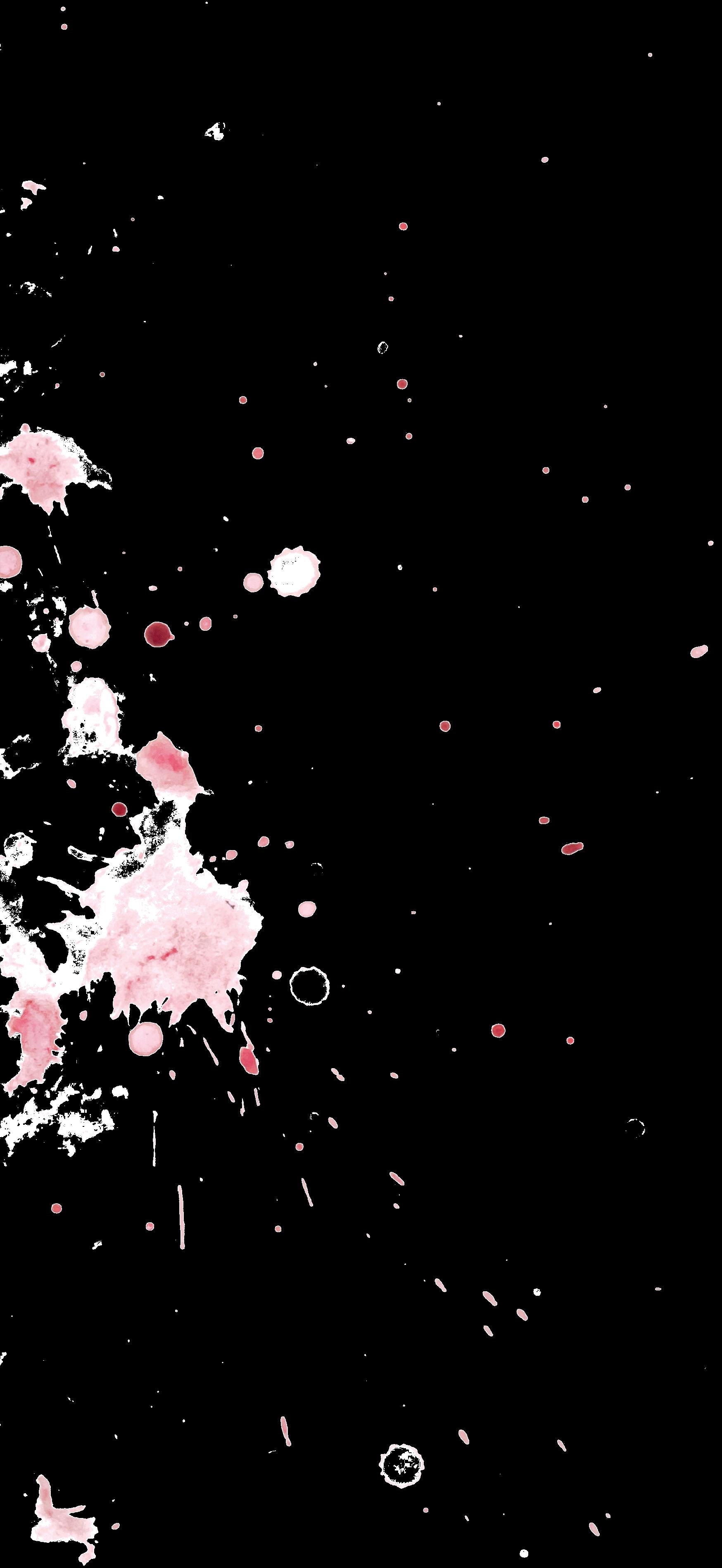



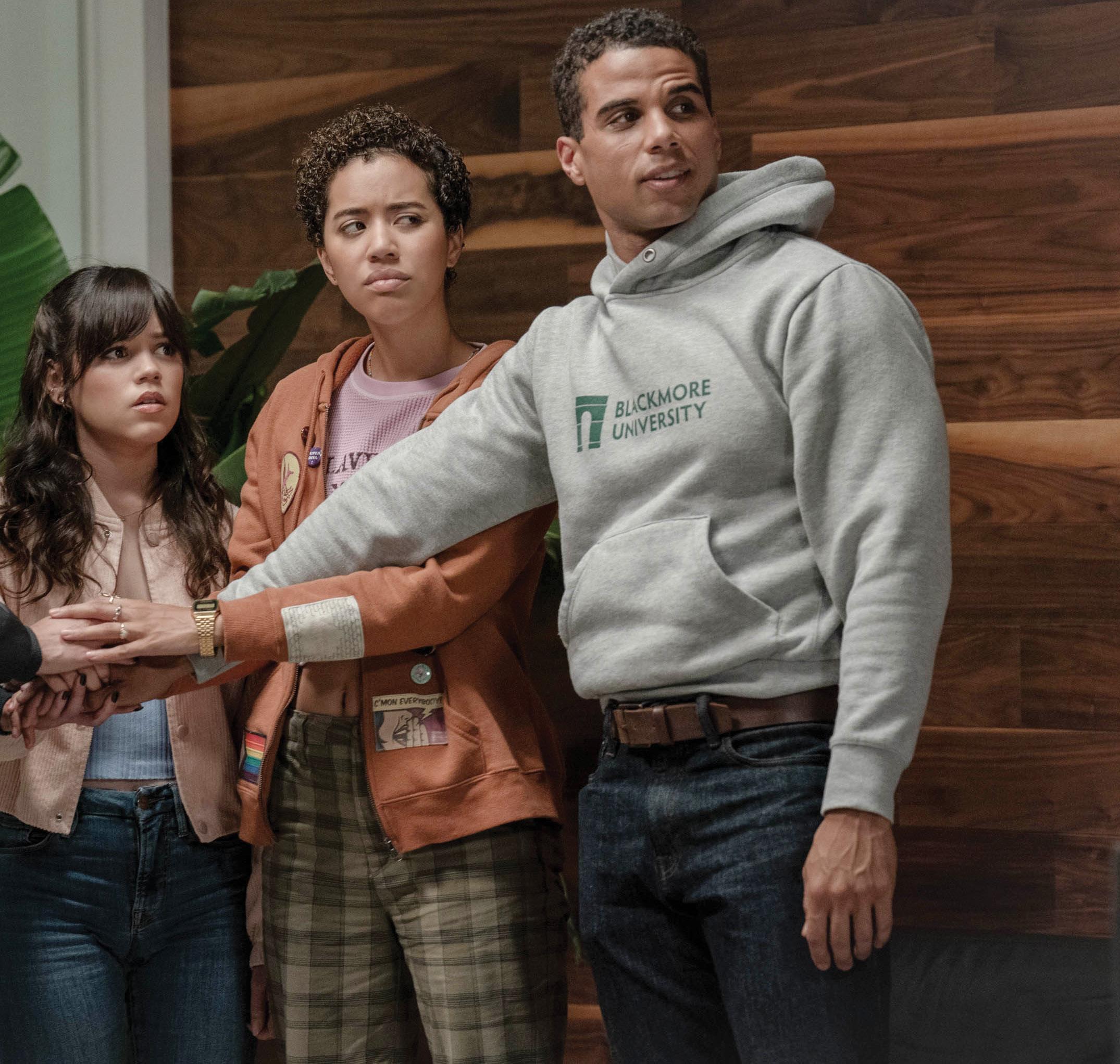 Top (L-R): Melissa Barrera and Jenna Ortega as Sam and Tara Carpenter, Jasmin Savoy Brown and Mason Gooding as Mindy and Chad Meeks-Martin
Below (L-R): director Tyler Gillett, Courteney Cox returns as Gale Weathers, director Matt Bettinelli-Olpin.
Top (L-R): Melissa Barrera and Jenna Ortega as Sam and Tara Carpenter, Jasmin Savoy Brown and Mason Gooding as Mindy and Chad Meeks-Martin
Below (L-R): director Tyler Gillett, Courteney Cox returns as Gale Weathers, director Matt Bettinelli-Olpin.
first movie not to feature Neve Campbell’s Sidney Prescott, the main protagonist of the four original Scream movies and the performance which anchored everything that came before.
Bettinelli-Olpin doesn’t recall how far into developing Scream VI they were when Campbell publicly announced she wouldn’t join the film. However, he says their reaction was probably the same as everyone else: What does this mean for Scream going forward? All the directors can answer is that they hope to replicate what Craven and screenwriter Kevin Williamson did between Scream and Scream 2 by building a genuine ensemble whom audiences care about (something of a novelty, then and now, in the horror genre).
“[We must] make sure that you get the time with them, and you understand who they are and you really learn to love them, and you’re on the journey with them. You’re not watching them from afar.” He adds, “We love Neve. Hopefully, there’s another one down the road.”
Until then, Radio Silence is bringing back all their favorites, and not just the main characters from Scream 5. Stars from the filmmaking collective’s cult darling Ready or Not are making their

Scream debut with Samara Weaving and Henry Czerny joining the cast. Additionally, fan-favorite Hayden Panettiere is reprising the role of Kirby Reed for the first time since Scream 4 (“She is so good in this movie!” Gillett beams). With all these familiar faces, it really does feel like an extended
that Roman had been plotting this from the beginning [in Scream 3]. You don’t know if this [killing spree] is a long-term plan for someone.” She muses, “All of the movies are whodunits, but this one is, particularly, a different type of whodunit.”
It appears to get back to the original
reunion, beginning with the “found family” of two pairs of siblings at the movie’s core. Still, Scream movies are, in their heart of hearts, whodunit stories; mysteries in which a killer is waiting to be unmasked from within your own ranks. And every family has its black sheep.
“You still can’t trust anyone,” Barrera hints with a smile. “We’ve seen it in the Scream universe when we found out

impetus for Scream VI: remove the warm blanket and throw fans in a big city slaughterhouse. With Scream being Scream, though, fans can rest assured the movie will remain aware of its origins and its setting since many sequels, from Friday the 13th Part VIII to Home Alone 2, have taken Manhattan by storm… and to sometimes checkered results.
When asked if Scream VI will

“TO S AY MELI S SA A N D JENNA
ARE A BIG PART OF WHY THE MOV I E T U R N ED OUT THE WAY IT D ID IS AN UNDERSTATEMENT.”Sisters Sam and Tara in peril in NYC. Right: Hayden Panettiere from Scream 4, returns as Kirby Reed.
comment on that colorful heritage, Gillett and Bettinelli-Olpin share big grins and exaggerated winks. “Maybe!” they say in near unison. They do concede at least that Scream VI will nod to star Jenna Ortega’s other recent franchise success under the horror umbrella, the Netflix sensation Wednesday, with some type of Addams Family Easter egg hidden in Scream VI’s New York City.
Says Gillett, “So much of the tone and the fun of what this movie is, we think, is that all this crazy shit’s happening, but at any moment, somebody wearing a ridiculous costume could walk through the shot. That, for us, is Scream in a nutshell. The real world can enter and exit this terrifying experience at any time.”
The transparent joy the filmmakers get from such fourth-wall breaks affirms they see themselves as real-life Kirbys or Mindys: film nerds who grew up loving movies that interrogated the fact they’re movies.
As Gillett later promises, “Every part of the movie provides some commentary on the state of movies and franchises and all of that. We’re living the movie.”
Scream VI opens in theaters on March 10.

SCREAM (1996)
BILLY LOOMIS | SKEET ULRICH

Motive: To paraphrase one of his victims, Billy was a whiny mama’s boy with psychopathic tendencies. After his mother walks out, he schemes to murder “the other woman” he blames for breaking up the home… and her daughter.
STU MACHER | MATTHEW LILLARD
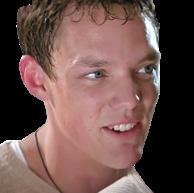
Motive: Because it was fun? Stu’s a textbook follower (who some argue was in love with his alpha). As he admits, “I’m far too sensitive.”
SCREAM 2 (1997)
NANCY LOOMIS | LAURIE METCALF
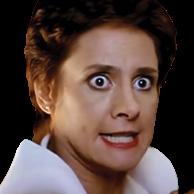
Motive: Just a case of good old-fashioned revenge against the kids who killed her precious little boy. How very Mrs. Voorhees of her.
MICKEY ALTIERI | TIMOTHY OLYPHANT
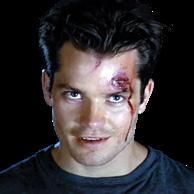
Motive: He wants his own celebrity trial in the vein of O.J., so he can “blame the movies.” How very ’90s, Mickey.
JILL ROBERTS | EMMA ROBERTS

Motive: Sid’s ingenue-aged cousin wants to be internet famous, and she’ll kill all her friends and family to get it! Call her a proto-influencer.


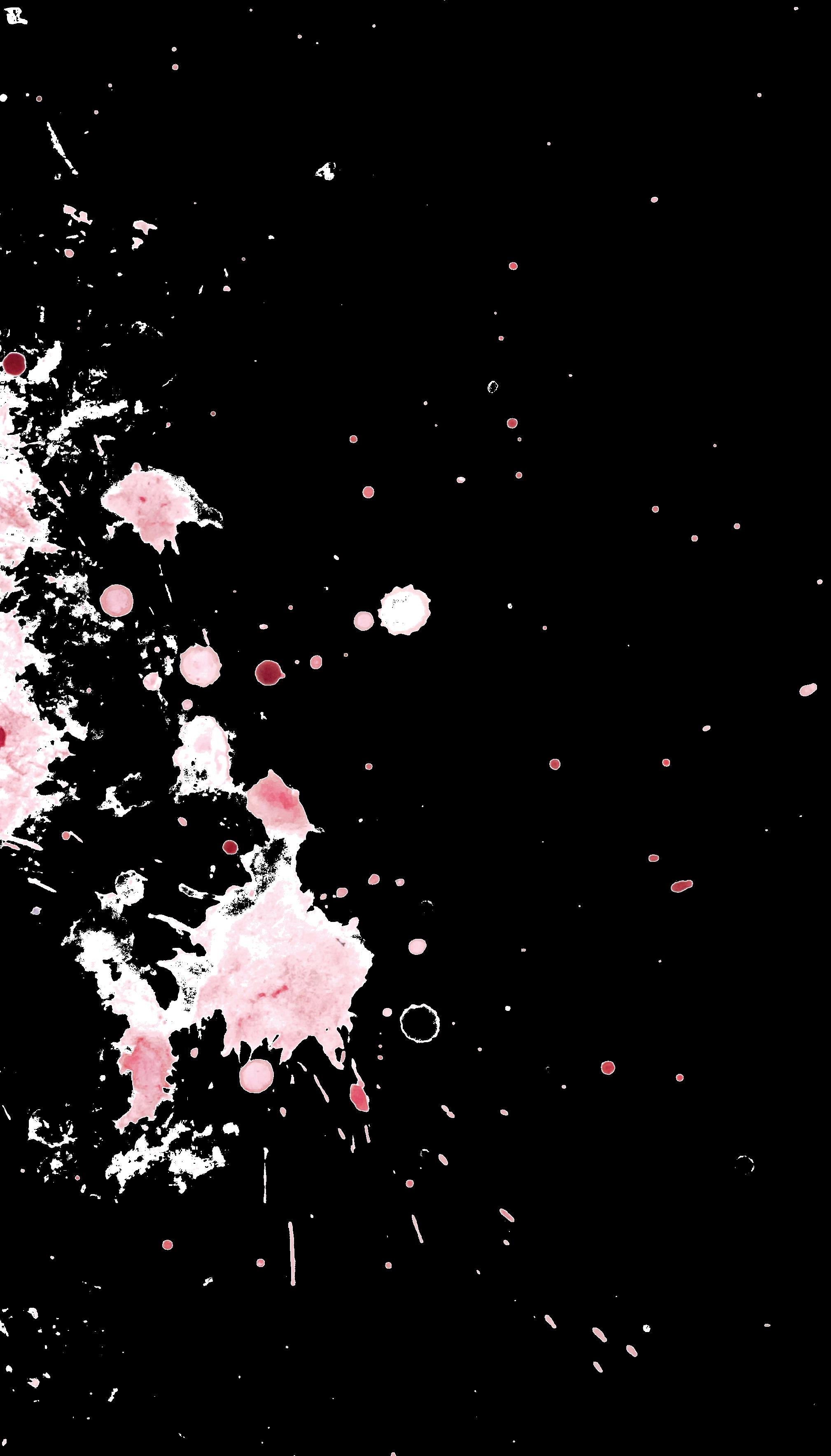
CHARLIE WALKER | RORY CULKIN
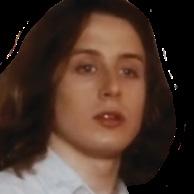
Motive: He wants to be the first movie nerd in one of these flicks to get the girl, in his case Jill. Guess how that works out?
RICHIE KIRSCH | JACK QUAID
Motive: The ultimate fanboy of Stab, the meta-movies within the Scream movies, he wants to “save the franchise” by writing his own sequel after the “Knives Out guy” ruined the last one.


AMBER FREEMAN | MIKEY MADISON
Motive: She wants to be Bonnie to Richie’s Clyde and is a fangirl eager to be the one to kill “legacy characters.”
half-brother is revealed to have orchestrated the whole thing because their mother abandoned him as a baby. But hey, at least he grew up to be a movie director with final cut!
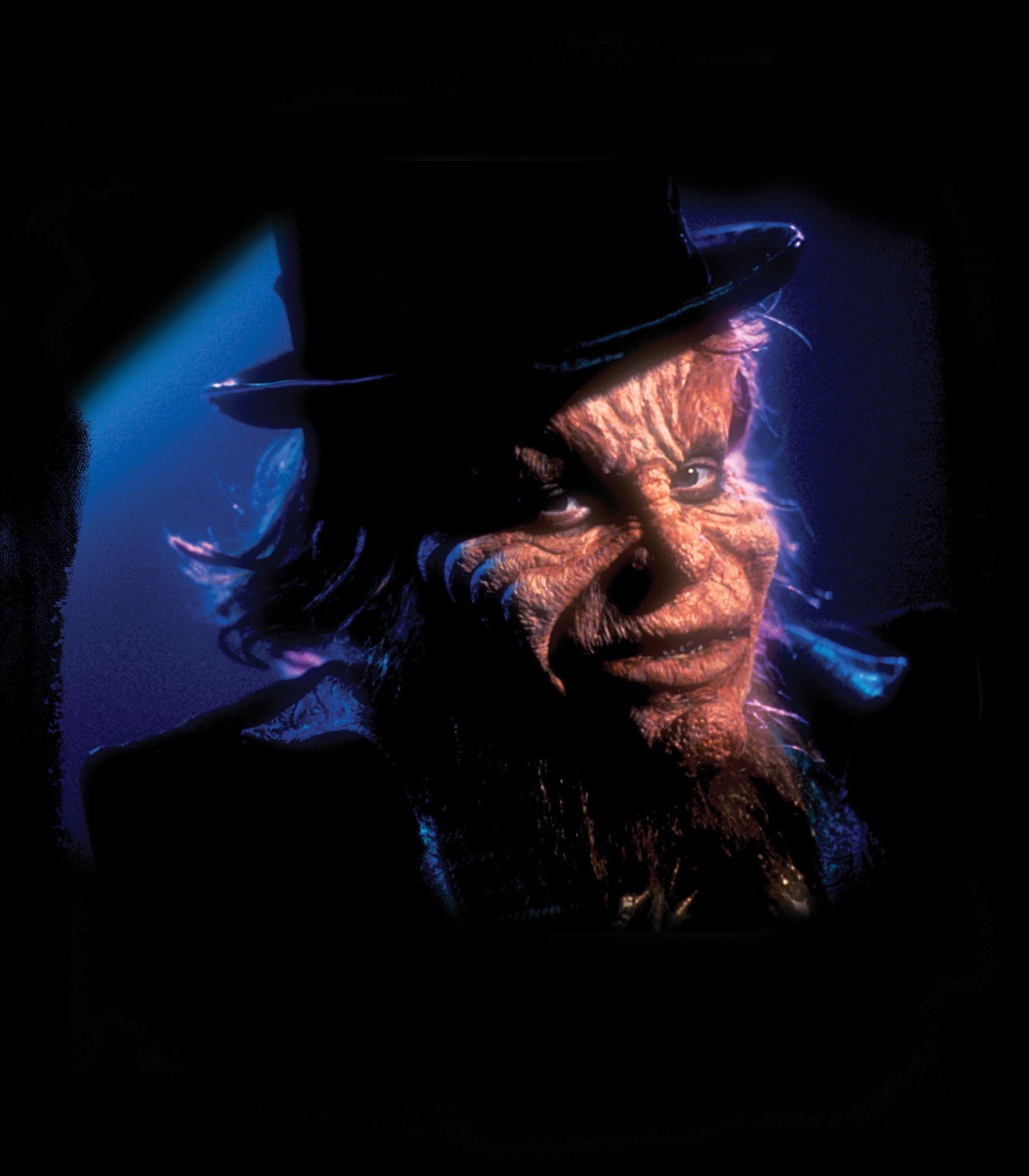
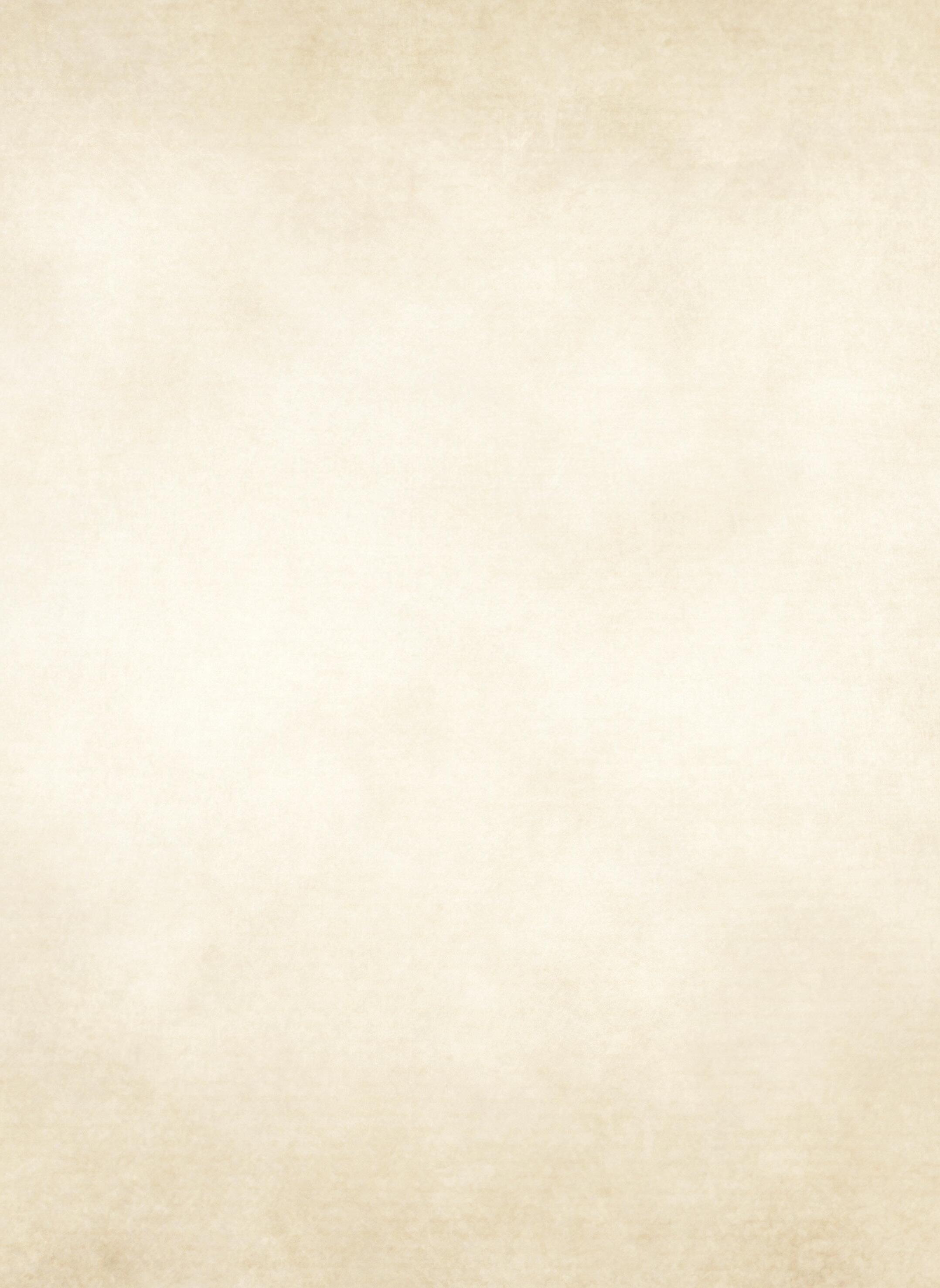
 Warwick Davis in Leprechaun (1993)
Warwick Davis in Leprechaun (1993)
Halloween ushered in the era of the slasher movie.
Halloween was responsible for something else, too. Over the next 15 years, any number of weird and wonderful horror movies popped up inspired by notable dates in the calendar. Friday the 13th, Mother’s Day, My Bloody Valentine, and April Fools Day all cashed in on the concept.
It was against this backdrop that TV writer Mark Jones came up with the most brilliantly bizarre entry of them all: Leprechaun. “Back in the 1980s, there was a lot of advertising for Lucky Charms with this little leprechaun character,” Jones tells Den of Geek. “It suddenly occurred to me that no one had done a St. Patrick’s Day horror movie. Everyone knew what a leprechaun was. Plus, they were little creatures that dealt in rainbows and magic. So it seemed like a natural idea to gravitate to.”
For over a decade, Jones had written and produced for shows like The
A-Team and Knight Rider, as well as Scooby-Doo. But by 1988, he was determined to direct a film. In an era when horror movies proved fertile ground for emerging talent, Leprechaun was perfect.
“Every horror movie finds an audience, and you could put it together without spending a lot of money,” he explains. “You didn’t necessarily need stars. The creature is the star. So it was a great inroad for getting into directing. Plus, I could have fun with it.”
Further research into the origins of leprechauns only served to enhance his convictions. “I discovered they could be really evil little creatures,” Jones says. He set to work on a script that would see a leprechaun, searching for his missing gold, embark on a murderous rampage around a secluded farmhouse.

Coming at a time when small creature-led horror movies like Gremlins, Critters, and Ghoulies were the order of the day, Jones’ riff on leprechaun lore eventually attracted
the attention of Trimark, a direct-tovideo distribution company looking to make it in the movies.
Early drafts of Jones’ script were a world away from the fun-loving, pun-loving prankster fans would come to know and, in a strange way, love. “The original Leprechaun was more horrific with much less of a personality,” Jones says. “He was a killing machine.”
Faceless killers had been all the rage in the 1980s, with characters like Jason Voorhees scaring up a treat at the box office, but Jones had noticed a sea change in the way they were being depicted.
“People were more accepting of comedy and horror alongside one another. Child’s Play had come out and what I liked about that was that Chucky had all these funny lines,” he says. “He became a personality you kind of loved to hate.”
With others like A Nightmare On Elm Street icon Freddy Krueger increasingly playing it for laughs,
As the quirky horror turns 30, Leprechaun how t he Lucky C harms of a young
D avis combi ned for a surp rise box o ffi c e hit.
it something that kids would find fun.”
Taking inspiration from his earlier work, he set about creating what he calls a “Scooby-Doo horror movie.” The main cast even consisted of characters who wouldn’t have looked out of place driving the Mystery Machine, with a handsome hunk and teen girl joined by a streetwise kid and his dimwitted older friend. The violence, meanwhile, was positively cartoonish. “I made the Leprechaun do things like drive a tricycle around and
kill someone by jumping on them with a pogo stick.”
Much like jumping on a pogo stick, playing the part of the Leprechaun would require a careful balancing act. They needed a diminutive actor capable of going from hilarious to horrifying at the drop of a buckled hat.
“We were reading with a lot of little people, and some were good, but I just wasn’t thrilled. Our guy needed to have personality and be funny,” Jones says. “Then my casting director Lisa London suggested Warwick Davis, who had done the movie Willow.”
Jones was initially unsure whether Davis would be willing to come to the U.S. to star in a low-budget horror

movie based around a leprechaun and a missing pot of gold. But with the Star Wars actor enduring a fallow period, the opportunity to go against type and play a villain and spend time in sunny California was too good to pass up.
Crucially, Davis shared Jones’ vision for injecting more comedy into the film. “Warwick and I worked together on putting in more of the humor,” Jones says. “We got along great from the beginning and spent a lot of time together creating his character.”
That was crucial to keeping Leprechaun on track, with Trimark expressing some reservations about the tongue-in-cheek tone at the time. “They wanted to keep it more horrific,


Leprechaun 2 moved the action to Los Angeles, where the evil fairy sets his sights on marrying a young girl who is the descendant of a formerly enslaved person. Despite a notable lawnmower kill, Jones “wasn’t impressed,” while takings of $2.3 million meant it was the last one released theatrically.

but I insisted it had to be more fun,” Jones says.
There was also the small matter of George Lucas to contend with. At that point, Willow 2 was still a possibility, with Lucas yet to confirm if there would be a sequel. “Warwick was under contract with George, so he had to be let out of his deal to do the picture,” Jones explains. “So we made sure to include a thank you to Lucas in the end credits.”
There were no such issues for the movie’s lead actress. Jennifer Aniston remains the elephant in the room when it comes to Leprechaun, with the Friends star’s involvement overshadowing much of the discussion around the film. Jones said that while several actresses read for the part of final girl Tory Redding, Aniston stood out straight away.
“She walked in, and there was just this energy and aura about her,” he says. “People will go, ‘oh, well, sure. It’s easy to say that because she’s Jennifer Aniston now,’ but I’m telling you, there was just something about her.”
Things could have gone differently, though. “We originally offered the part to Kristy Swanson because she was a name. She had just starred in Buffy the Vampire Slayer,” Jones says. “But for whatever reason, she turned it down.”

The studio was also initially hesitant to hire Aniston because, as crazy as it sounds, they didn’t like her hair and wanted a blonde for the role of Tory. Eventually, a compromise was struck.
Jones called Aniston: “The good news is you have the part. The bad news is they want you to bleach your hair blonde.” She was initially hesitant to sign on, but Jones had a plan.

B-movie legend Brian Trenchard-Smith was handed the reins for Leprechaun 3, taking the character to Las Vegas for a werewolf-inspired tale that saw a teen transform into the fiendish sprite after being bitten. Arguably the most popular sequel, it also features an astonishing sequence involving an exploding surgically enhanced woman.

“I told her I didn’t want her to bleach her hair. The executives would be working on other movies. So she could just turn up on the first day like normal. No one was going to say anything about her hair not being blonde. They probably wouldn’t remember, and that’s what happened.”
years later when Friends was huge. “She said, ‘listen, I know you probably hear things that I disavow that I did Leprechaun or I didn’t like the movie or something,’ and I said, ‘Jennifer, stop there. If I ever have the success you have, I’m going to deny that I made Leprechaun’ and she cracked up.”
Though Aniston is on the record as admitting she was left “cringing” while rewatching the film years later, Jones remains sure some part of her is appreciative of the experience.
“She had fun working on it,” he says. “It’s understandable to look back and poke fun at it once you’ve had the kind of success she has had, but I don’t have any issue with whatever she says about the movie. She’s gotta have some great memories from it because it was her big break.”
Aniston certainly contributed to an enjoyable shoot, even if Jones found dealing with Trimark to be a trying experience, recalling how executives were constantly poring over the dailies and providing feedback. “This was their first picture, so they were nervous and all wanted to put their two cents in,” he says. “But you can’t make a movie by committee.”
Aniston proved a shrewd choice, not least for the fact her future star status helped maintain interest in Leprechaun. “She was a natural,” Jones says. “I was impressed she took it seriously; it was a big deal to her, but at the same time she knew what the movie was.”
Though Aniston has been famously coy on the topic of Leprechaun, Jones recalls running into Aniston a few
Despite concerns about the tone of the movie, Jones plowed on and was eventually vindicated when the studio began testing the film with audiences. “The kids loved it. They really liked it,” he says. “So the decision was made to release it theatrically.”
Up until that point, Leprechaun had been destined for direct-to-video, but the response prompted Trimark to take a chance. Leprechaun hit cinemas on Jan. 7, 1993. Critics were not kind.
Matt Bourjaily of the ChicagoAfter 3’s success, Trenchard-Smith returned to boldly go where no Leprechaun has gone before. Rumored to have been inspired by a poster mash-up of Leprechaun and Apollo 13 but branded “gimmicky” by Jones, one Alieninspired scene sees the Leprechaun burst from a man’s groin, telling him “always use a prophylactic.” What could Jones possibly mean by gimmicky?
— MARK JONES
I made the Leprechaun do things like drive a tricycle around and kill someone by jumpin g on them with a pogo stick. Somethin g the kids would find fun.
Tribune said it “brought new meaning to the term ‘bad,’” while Michael Wilmington of the Los Angeles Times branded Leprechaun a “dingy, drab, pointless little movie.”


Jones had been expecting bad reviews but attributes the backlash to the fact Leprechaun arrived in the midst of awards season when many of the big contenders hit cinemas.
“We were up against Chaplin and other big studio pictures like Scent of A Woman,” he says. “The critics didn’t understand what we had. You couldn’t judge us in the same way you would an Al Pacino movie. This was a fun, not taking itself seriously, little horror movie for kids. They didn’t get it.”
Fortunately, someone did. In an age before “internet buzz” existed, Leprechaun benefited from the next best thing: Saturday Night Live. In a season featuring the likes of Chris Rock, Adam Sandler, David Spade, Dana Carvey, and Mike Myers, the
movie ended up the butt of several gags on the show.
One saw Melanie Hutsell, as Jan Brady from The Brady Bunch, rate Leprechaun as the best movie of 1993 (the joke being it was one of the first released.) “That aired on Saturday night and ended up enhancing our numbers on the Sunday,” Jones says. “They were much higher than anyone expected. So in making fun of the movie, they helped to promote it.”
Even better was when Myers and Carvey created another bit for their recurring “Wayne’s World” sketch, which saw Myers, as Wayne, terrify Carvey’s Garth by shining a torch under his chin and impersonating the Leprechaun. The bit even ended up finding its way into Wayne’s World 2, which also came out in 1993.


“People started to find the movie and realized they could have fun with it,” Jones says. “It all helped build the audience.” Made for around $1 million,
Leprechaun went on to bring home the proverbial pot of gold with a box office taking of $8.5 million.

Years later, Jones saw Myers in a Hollywood restaurant and sent a bottle of wine over to his table as a thank you. “He actually came over and sat with me, and we talked for about 20 minutes. I asked him ‘Why Leprechaun?’ and he said he’d seen the movie and thought it was interesting and unique and would be great to have fun with.”

Eager to cash in on a new demographic, Leprechaun in the Hood switched focus to Compton and a trio of rappers who stumble upon a magic flute belonging to Lep. Featuring a stellar performance from Ice-T, Leprechaun raps, and Coolio delivering the world’s shortest cameo.
Davis’s last Leprechaun outing to date saw Lep pursuing a group of friends who stole his gold. Trading in tired stereotypes, the high point comes when one character is impaled on a bong. As EW put it: “if a movie could spark a race riot, this is it.”
Leprechaun may have exceeded expectations at the cinema, but Jones said the “real money” was made on video rentals. “We made like a $50 profit on each VHS that went out to a video store,” he explains. “Our first order was 100,000 VHS copies, so that was $5 million straight away.”
That success inevitably led to a sequel. Jones was already focused elsewhere by then with another fairy tale creature feature, Rumpelstiltskin, and was happy to settle for a share of


Origins saw wrestler Dylan ‘Hornswoggle’ Postl replace Davis for a tale that, on the surface, shared more in common with Jones’ original concept of the Leprechaun as a faceless killer. It centered on two couples traveling to Ireland who are told of the legend of the Leprechaun. “It was terrible,” Jones says.
the sequel’s profits as the creator.
“If I had written and directed the sequel, they would want me to do it their way again,” he says. “At some point, you just have to let them go with it and take the check that they send.”
Jones did pitch an idea for a sequel. “I wanted Warwick to dress up in drag and play a female leprechaun coming back looking for her husband.”
The studio took things in a different direction, though. In all, seven sequels have followed, with Leprechaun
heading everywhere from “The Hood” to outer space. Despite that, Jones isn’t ruling out another movie.
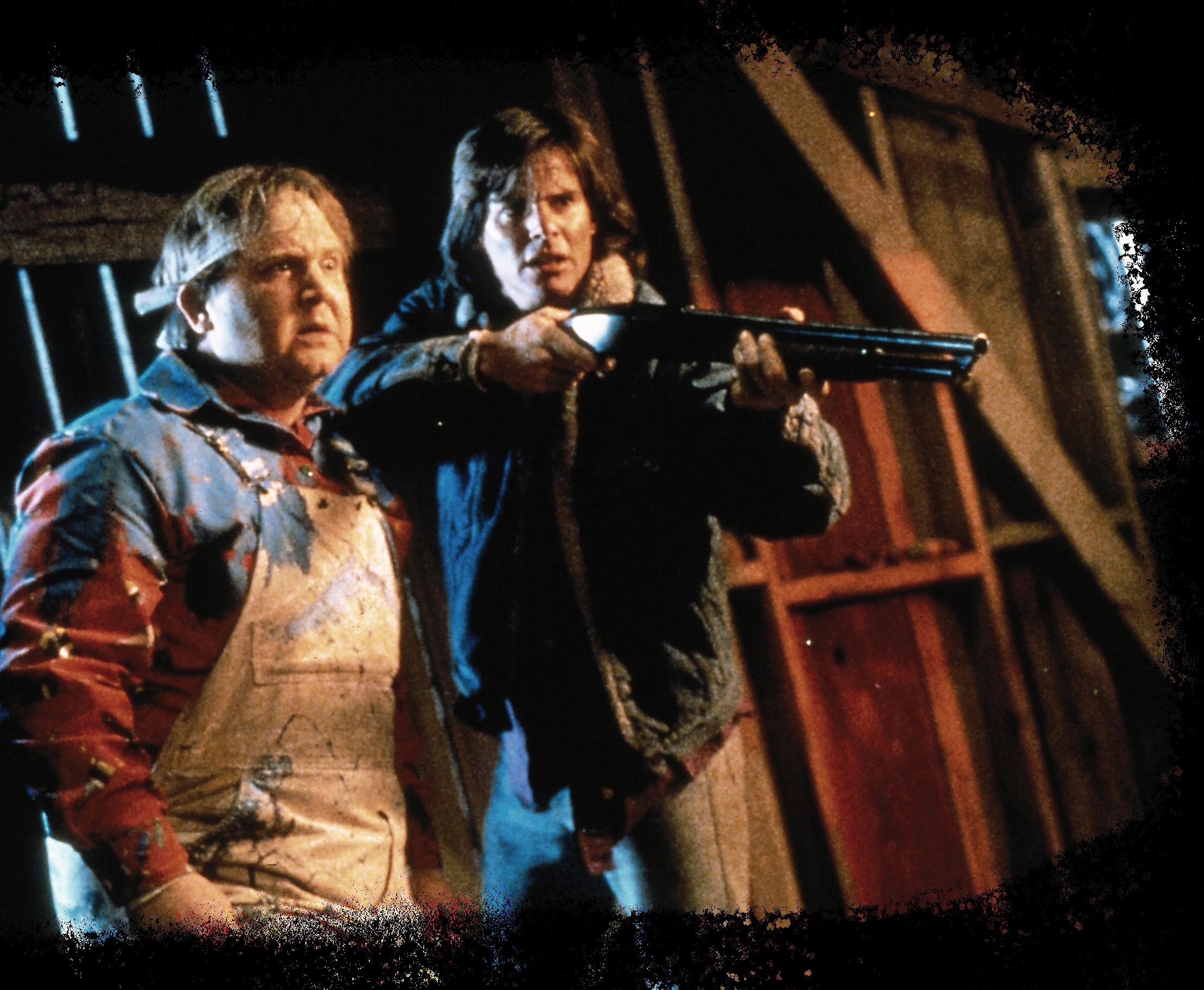
“I hear rumblings that they want to do another Leprechaun,” he says. “Warwick and I have talked on and off about it. He likes the idea of a Leprechaun in the Wild West. I think they should do a TV series where the Leprechaun travels the country looking for his gold.”

Whatever the case, 30 years later, the Leprechaun legend lives on.
This Syfy Channel-produced effort headed into “requel” territory with original cast member Mark Holton back alongside newcomer Taylor Spreitler as Lila, the daughter of Aniston’s character from the original. Davis opted not to return, and Linden Porco filled his buckled shoes. Despite this, it proved an enjoyable nostalgia fest.
The Collector’s Digest powered by
This story is part of an editorial series presented by eBay.
WITH THE RELEASE OF THE EXPANSION SET “CROWN Zenith,” the Sword & Shield block of the Pokémon Trading Card Game has officially come to a close and just in time to celebrate National Pokémon Day on Feb. 27.
This collection of “Generation VIII” Pokémon cards began back in February 2020 and coincided with an era of renewed interest in the collectibles due to the Covid pandemic. Ultimately, the Sword & Shield block would run for 17 sets of releases totaling nearly 3,000 unique cards.
Next up for the Pokémon Trading Card Game is the introduction of some new “Paldean” Pokémon as part of the series’ Generation IX of games. Before we welcome Sprigatito, Floragato, Fuecoco, and more from the Paldea region, though, let’s honor the Galar Pokémon who graced our binders and decks through a most turbulent time. What follows are the best, most valuable, and most interesting Sword & Shield Pokémon cards—all of which can be found on eBay.
Cost Range Estimates Via eBay’s Price Guide
SET: Sword & Shield (Base) | COST RANGE: $40 - $160
Though Marnie wasn’t the chase card from the initial Sword & Shield base card set to begin with, her utility in gameplay and appealing full art made her the sleeper hit of this whole block.

SET: Champion’s Path COST RANGE: $200 - $375
Invariably, Charizard ends up gracing the biggest chase cards in most Pokémon card sets it appears in. The Sword & Shield block was no different, with the big fire lizard popping up on many valuable cards across many disparate sets. This Rainbow VMax version from the smaller set, Champion’s Path, ended up being the most valuable.

SET: Battle Styles | COST RANGE: $65 - $350
Though there were rarer and more competitive cards from the sprawling Battle Styles set, Tyranitar V’s evocative alternate art made it one of this block’s biggest hits. The art on this card tells a story, and many collectors sought it out for that reason.

SET: Evolving Skies
COST RANGE: $170 - $1200
The “single strike” Umbreon VMax alternate art has everything a collector is looking for in a card. This cardboard rectangle is rare, gorgeous, and actually useful in battle. Pound for pound, this Eeveelution might just be the coolest overall card in all of Sword & Shield history.
Ever since the Pokémon Trading Card Game launched in 1996, “Black Star” promo cards have been among the most sought-after treasures for collectors. The Sword & Shield block was no different, with these five cards joining the legendary Black Star canon.

SET: Vivid Voltage
COST RANGE: $125 - $310
Sometimes you just have to give the people what they want. And in this case, what they wanted was Chonky Pikachu back. This burly iteration of Pokémon’s unofficial mascot resembled its initial appearance from the original video game art. As such, it proved to be quite a popular item.

SET: Chilling Reign
COST RANGE: $90 - $330
Midway through the Sword & Shield block, The Pokémon Company really let card illustrators do their thing, and the quality of alternate art cards improved immensely. Blaziken VMax is one such beneficiary of this creativity, and its colorful design made it one of the block’s most popular cards.
1 2
CHARIZARD PRE-RELEASE PROMO (STAFF)



COST RANGE: $525 - $2040
SPECIAL DELIVERY BIDOOF
COST RANGE: $160 - $500

SET: Silver Tempest
COST RANGE: $340 - $670
With Lugia VStar decks in vogue in the Pokémon TCG , competitors and collectors alike scrambled to find the stunning alternate art version of Lugia V, driving up its value immensely. The imagery on this card captures the awesome power of one of Pokémon’s most legendary monsters.

SET: Fusion Strike
COST RANGE: $90 - $280
It’s always nice when one of the Original 151 (aside from Pikachu and Charizard) really gets to shine on a Pokémon card. Gengar gets his big moment with this cleverly-designed card that is compelling enough to make the ghost Pokémon the Fusion Strike set’s biggest hit.




SET: Lost Origin
COST RANGE: $310 - $800
As the Sword & Shield block began to wind down, it introduced some major legendaries from the “off-year” game, Pokémon Legends: Arceus . Of all those legendaries, Giratina was undoubtedly the most sought-after and valuable.
SET: Crown Zenith
COST RANGE: $30 - $80
Origin Forme Dialga
VStar was a big hit when introduced in the Astral Radiance set. So with its final gasp, the Sword & Shield block was sure to introduce the secret rare version of it in Crown Zenith. As the freshest card on this list, Origin Forme Dialga
VStar has a great chance of increasing in value.

It’s not all just the rectangular cardboard. Here are the best of the rest Pokémon collectibles.


Surely you’ll find use for this replica of the iconic ball that can catch any Pokémon.
Something nice to relax in after a long day of Pokémon




There are dozens of Pokémon Funko Pops but if you’re going to get some, you might as well include this whole set of Eeveelutions.

Charizard is one of Pokémon’s most iconic creations for a reason and this striking figurine will remind everyone of why.

 BY MICHAEL AHR
BY MICHAEL AHR
1. Big decisions are made in the parliamentary chamber in The Burgue, but the room itself is quite small. “Our DP and our directors would hope that we could inflate it for the ease of their work,” says Matura. “But these limits [can] force you to create a new level of tension.”
2. To make Prague look like Victorian London, Matura had “to keep a balance between the beauty of The Burgue, the richness and opulence, and the dirt and grittiness of the ghetto and of the industry.” Season two goes “even more literally into factories.”
3. The fae world of Tirnanoc was a favorite of Matura. “There were many attempts [in season one] to go more into Tirnanoc, and I was always disappointed that it did not happen that much,” he says, reassuring fans that, in season two, “we discover a completely new part of our world.”
4. The fae underground HQ needed an upgrade. “The Black Ravens have their lair that is the abandoned church, [which] became much more important in season two,” says Matura. “For returning there and doing much more work, we recreated this location as a set piece.”



Carnival Row
Jiri Matura illuminates a magical Victorian world in which humans and fairies coexist.
CURATED GEEKY GIFT GUIDES + EXCLUSIVE MERCH
FLASH DEALS YOU DON’T WANT TO MISS!















































































































































































































































































































































































































































































































































































































































































































































































